Quick filters:
Diatonic scale Stock Photos and Images
 Britannica Clarinet Diatonic Scale Stock Photohttps://www.alamy.com/image-license-details/?v=1https://www.alamy.com/stock-image-britannica-clarinet-diatonic-scale-162221246.html
Britannica Clarinet Diatonic Scale Stock Photohttps://www.alamy.com/image-license-details/?v=1https://www.alamy.com/stock-image-britannica-clarinet-diatonic-scale-162221246.htmlRMKBWPRX–Britannica Clarinet Diatonic Scale
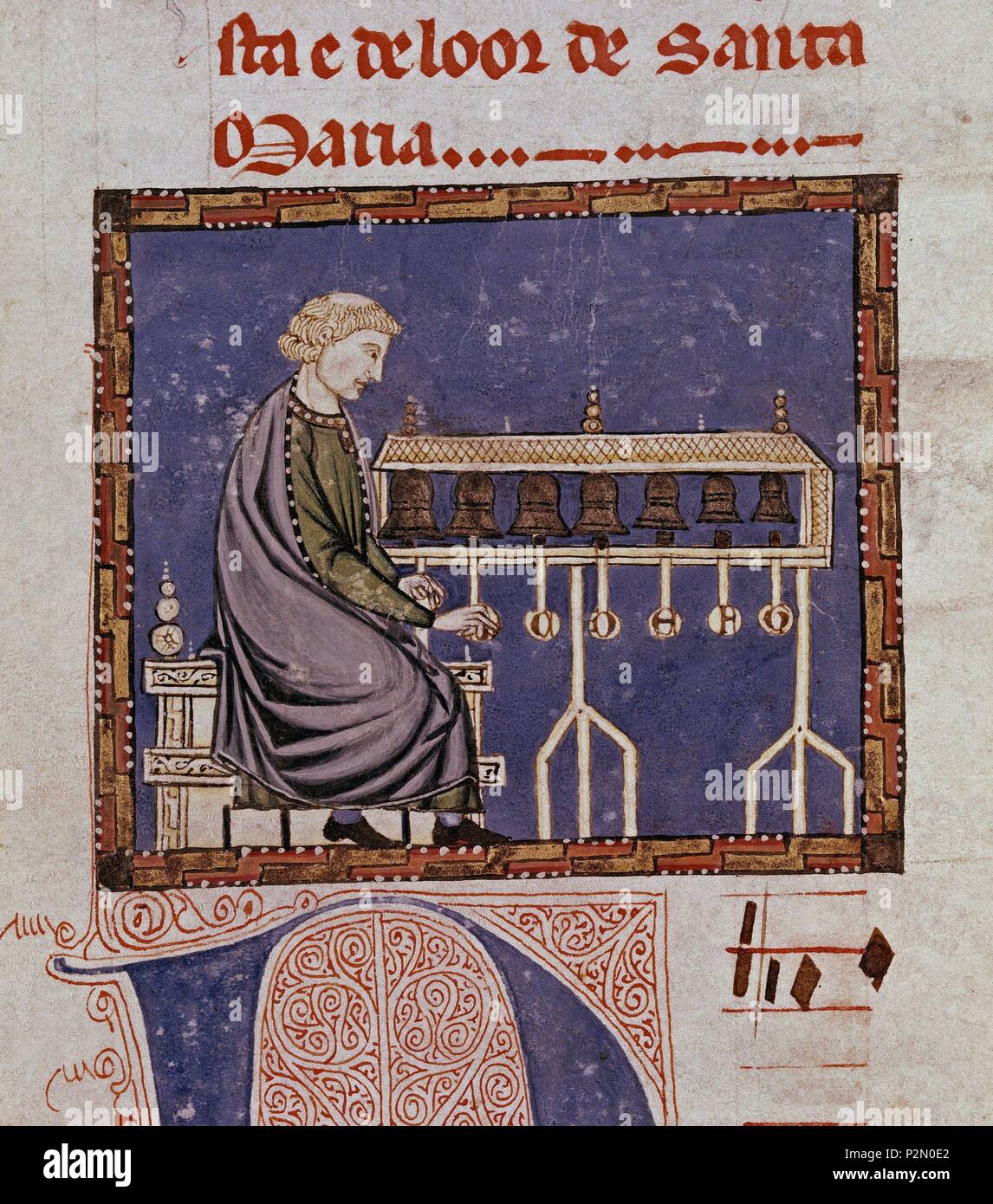 M.B.I.2- CANTIGA DE SANTA MARIA Nº 400 - F359R-CODICE DE LOS MUSICOS CARILLON-CAMPANAS QUE FORMAN ESCALA DIATONICA. Author: Alfonso X of Castile the Wise (1221-1284). Location: MONASTERIO-BIBLIOTECA-COLECCION, SAN LORENZO DEL ESCORIAL, MADRID, SPAIN. Stock Photohttps://www.alamy.com/image-license-details/?v=1https://www.alamy.com/mbi2-cantiga-de-santa-maria-n-400-f359r-codice-de-los-musicos-carillon-campanas-que-forman-escala-diatonica-author-alfonso-x-of-castile-the-wise-1221-1284-location-monasterio-biblioteca-coleccion-san-lorenzo-del-escorial-madrid-spain-image208215114.html
M.B.I.2- CANTIGA DE SANTA MARIA Nº 400 - F359R-CODICE DE LOS MUSICOS CARILLON-CAMPANAS QUE FORMAN ESCALA DIATONICA. Author: Alfonso X of Castile the Wise (1221-1284). Location: MONASTERIO-BIBLIOTECA-COLECCION, SAN LORENZO DEL ESCORIAL, MADRID, SPAIN. Stock Photohttps://www.alamy.com/image-license-details/?v=1https://www.alamy.com/mbi2-cantiga-de-santa-maria-n-400-f359r-codice-de-los-musicos-carillon-campanas-que-forman-escala-diatonica-author-alfonso-x-of-castile-the-wise-1221-1284-location-monasterio-biblioteca-coleccion-san-lorenzo-del-escorial-madrid-spain-image208215114.htmlRMP2N0E2–M.B.I.2- CANTIGA DE SANTA MARIA Nº 400 - F359R-CODICE DE LOS MUSICOS CARILLON-CAMPANAS QUE FORMAN ESCALA DIATONICA. Author: Alfonso X of Castile the Wise (1221-1284). Location: MONASTERIO-BIBLIOTECA-COLECCION, SAN LORENZO DEL ESCORIAL, MADRID, SPAIN.
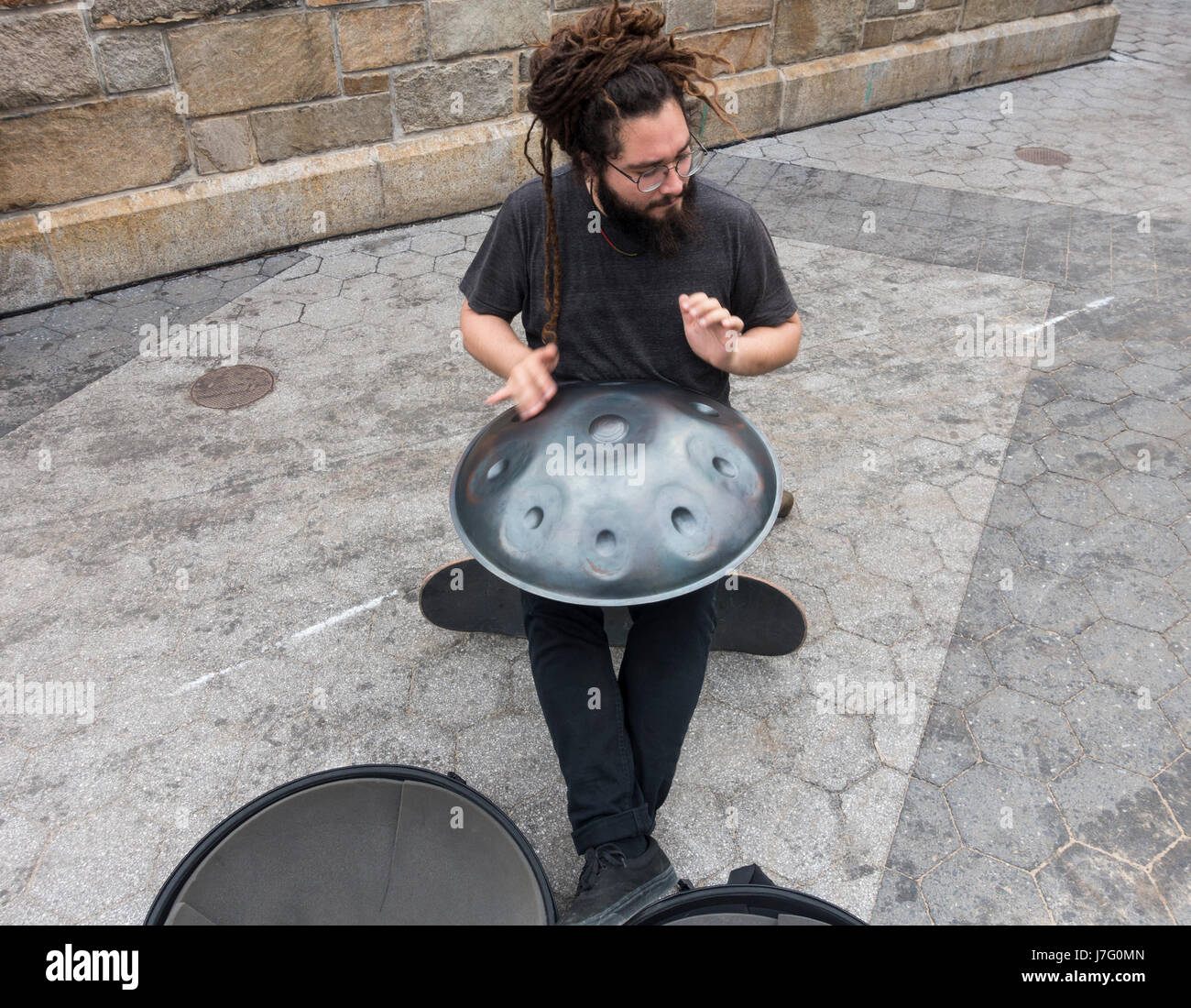 A Handpan being played by a bearded young male busker in Union Square NYC. This musical instrument, also called a hang, is made in Switzerland Stock Photohttps://www.alamy.com/image-license-details/?v=1https://www.alamy.com/stock-photo-a-handpan-being-played-by-a-bearded-young-male-busker-in-union-square-142337349.html
A Handpan being played by a bearded young male busker in Union Square NYC. This musical instrument, also called a hang, is made in Switzerland Stock Photohttps://www.alamy.com/image-license-details/?v=1https://www.alamy.com/stock-photo-a-handpan-being-played-by-a-bearded-young-male-busker-in-union-square-142337349.htmlRMJ7G0MN–A Handpan being played by a bearded young male busker in Union Square NYC. This musical instrument, also called a hang, is made in Switzerland
 Apollo Lyre 1848–53 American This instrument, the only known example of its kind, was probably inspired by the melophone, which a French player presented in a concert in New York in 1841. The upward-pointing handles produce pressure and suction to sound a diatonic scale, as in an accordion or harmonica.. Apollo Lyre 502678 Stock Photohttps://www.alamy.com/image-license-details/?v=1https://www.alamy.com/apollo-lyre-184853-american-this-instrument-the-only-known-example-of-its-kind-was-probably-inspired-by-the-melophone-which-a-french-player-presented-in-a-concert-in-new-york-in-1841-the-upward-pointing-handles-produce-pressure-and-suction-to-sound-a-diatonic-scale-as-in-an-accordion-or-harmonica-apollo-lyre-502678-image458463355.html
Apollo Lyre 1848–53 American This instrument, the only known example of its kind, was probably inspired by the melophone, which a French player presented in a concert in New York in 1841. The upward-pointing handles produce pressure and suction to sound a diatonic scale, as in an accordion or harmonica.. Apollo Lyre 502678 Stock Photohttps://www.alamy.com/image-license-details/?v=1https://www.alamy.com/apollo-lyre-184853-american-this-instrument-the-only-known-example-of-its-kind-was-probably-inspired-by-the-melophone-which-a-french-player-presented-in-a-concert-in-new-york-in-1841-the-upward-pointing-handles-produce-pressure-and-suction-to-sound-a-diatonic-scale-as-in-an-accordion-or-harmonica-apollo-lyre-502678-image458463355.htmlRM2HHTPK7–Apollo Lyre 1848–53 American This instrument, the only known example of its kind, was probably inspired by the melophone, which a French player presented in a concert in New York in 1841. The upward-pointing handles produce pressure and suction to sound a diatonic scale, as in an accordion or harmonica.. Apollo Lyre 502678
 . Machinery and processes of the industrial arts, and apparatus of the exact sciences. Tillmans Tonometer Dial. each containing five artificial commas, making sixty in all. Seven whiteescutcheons mark the places of the notes of the natural diatonic scale;and five black escutcheons indicate the interpolated semitones. Twocircular musical staves connecting these escutcheons show the places ofthe several notes as written in the tenor and in the bass. The C, as thetonic note of the natural scale, takes its place at the top of the circle.The other letters follow in their order. But while the system Stock Photohttps://www.alamy.com/image-license-details/?v=1https://www.alamy.com/machinery-and-processes-of-the-industrial-arts-and-apparatus-of-the-exact-sciences-tillmans-tonometer-dial-each-containing-five-artificial-commas-making-sixty-in-all-seven-whiteescutcheons-mark-the-places-of-the-notes-of-the-natural-diatonic-scaleand-five-black-escutcheons-indicate-the-interpolated-semitones-twocircular-musical-staves-connecting-these-escutcheons-show-the-places-ofthe-several-notes-as-written-in-the-tenor-and-in-the-bass-the-c-as-thetonic-note-of-the-natural-scale-takes-its-place-at-the-top-of-the-circlethe-other-letters-follow-in-their-order-but-while-the-system-image337134932.html
. Machinery and processes of the industrial arts, and apparatus of the exact sciences. Tillmans Tonometer Dial. each containing five artificial commas, making sixty in all. Seven whiteescutcheons mark the places of the notes of the natural diatonic scale;and five black escutcheons indicate the interpolated semitones. Twocircular musical staves connecting these escutcheons show the places ofthe several notes as written in the tenor and in the bass. The C, as thetonic note of the natural scale, takes its place at the top of the circle.The other letters follow in their order. But while the system Stock Photohttps://www.alamy.com/image-license-details/?v=1https://www.alamy.com/machinery-and-processes-of-the-industrial-arts-and-apparatus-of-the-exact-sciences-tillmans-tonometer-dial-each-containing-five-artificial-commas-making-sixty-in-all-seven-whiteescutcheons-mark-the-places-of-the-notes-of-the-natural-diatonic-scaleand-five-black-escutcheons-indicate-the-interpolated-semitones-twocircular-musical-staves-connecting-these-escutcheons-show-the-places-ofthe-several-notes-as-written-in-the-tenor-and-in-the-bass-the-c-as-thetonic-note-of-the-natural-scale-takes-its-place-at-the-top-of-the-circlethe-other-letters-follow-in-their-order-but-while-the-system-image337134932.htmlRM2AGDR18–. Machinery and processes of the industrial arts, and apparatus of the exact sciences. Tillmans Tonometer Dial. each containing five artificial commas, making sixty in all. Seven whiteescutcheons mark the places of the notes of the natural diatonic scale;and five black escutcheons indicate the interpolated semitones. Twocircular musical staves connecting these escutcheons show the places ofthe several notes as written in the tenor and in the bass. The C, as thetonic note of the natural scale, takes its place at the top of the circle.The other letters follow in their order. But while the system
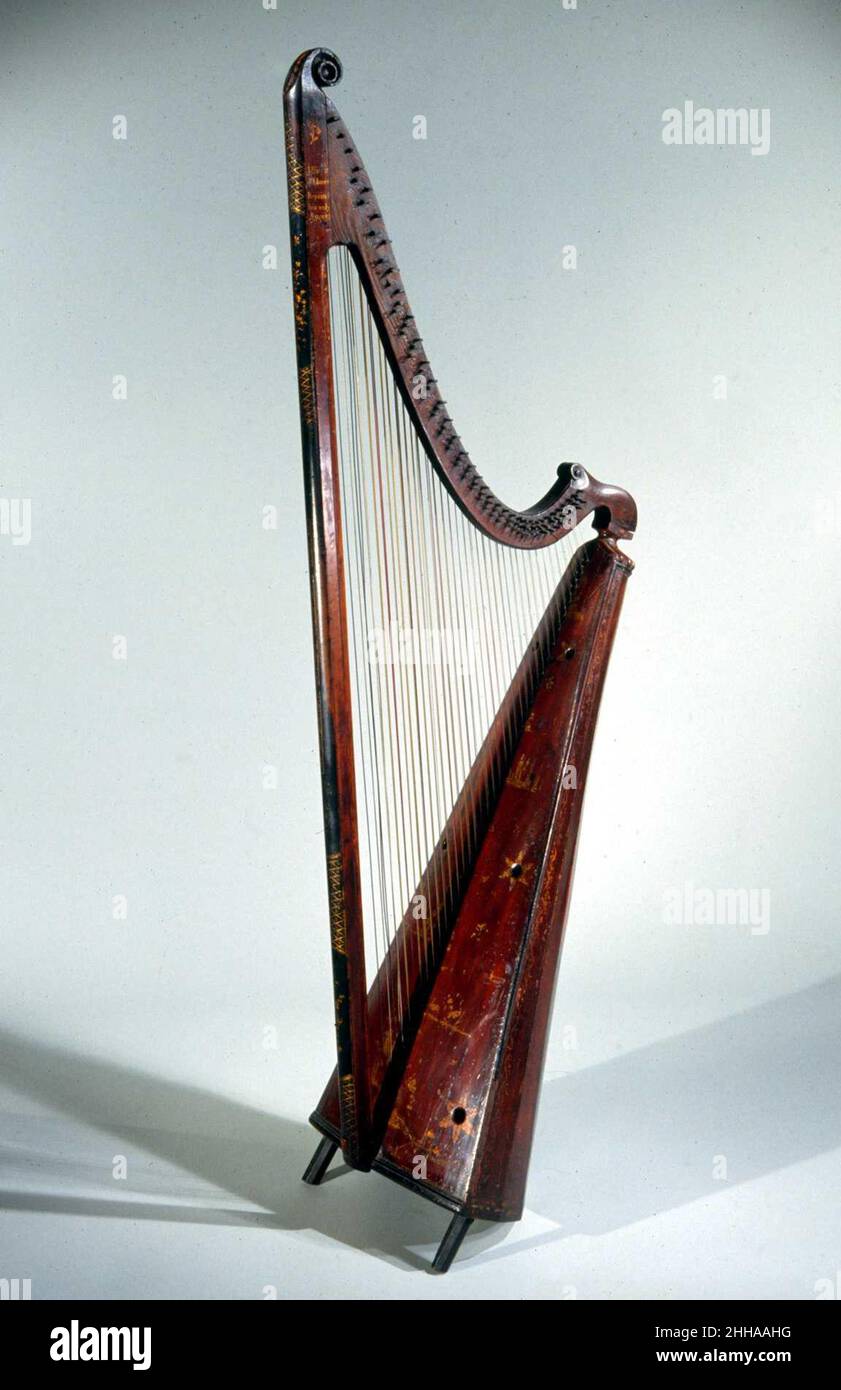 Welsh Triple Harp ca. 1750 John Richards The triple harp first developed in Italy and appeared in the British Isles by the early seventeenth century. The instrument became so popular with Welsh harpists, especially those residing in London, that by the eighteenth century it was known as the ‘Welsh triple harp.’ The instrument has three rows of strings, with the two outside rows tuned in unison to a diatonic scale, and the middle row tuned to the chromatic notes. This instrument was made by John Richards of Llanrwst, also active in Glanbran, Wales’ leading harp maker of the eighteenth century. Stock Photohttps://www.alamy.com/image-license-details/?v=1https://www.alamy.com/welsh-triple-harp-ca-1750-john-richards-the-triple-harp-first-developed-in-italy-and-appeared-in-the-british-isles-by-the-early-seventeenth-century-the-instrument-became-so-popular-with-welsh-harpists-especially-those-residing-in-london-that-by-the-eighteenth-century-it-was-known-as-the-welsh-triple-harp-the-instrument-has-three-rows-of-strings-with-the-two-outside-rows-tuned-in-unison-to-a-diatonic-scale-and-the-middle-row-tuned-to-the-chromatic-notes-this-instrument-was-made-by-john-richards-of-llanrwst-also-active-in-glanbran-wales-leading-harp-maker-of-the-eighteenth-century-image458146572.html
Welsh Triple Harp ca. 1750 John Richards The triple harp first developed in Italy and appeared in the British Isles by the early seventeenth century. The instrument became so popular with Welsh harpists, especially those residing in London, that by the eighteenth century it was known as the ‘Welsh triple harp.’ The instrument has three rows of strings, with the two outside rows tuned in unison to a diatonic scale, and the middle row tuned to the chromatic notes. This instrument was made by John Richards of Llanrwst, also active in Glanbran, Wales’ leading harp maker of the eighteenth century. Stock Photohttps://www.alamy.com/image-license-details/?v=1https://www.alamy.com/welsh-triple-harp-ca-1750-john-richards-the-triple-harp-first-developed-in-italy-and-appeared-in-the-british-isles-by-the-early-seventeenth-century-the-instrument-became-so-popular-with-welsh-harpists-especially-those-residing-in-london-that-by-the-eighteenth-century-it-was-known-as-the-welsh-triple-harp-the-instrument-has-three-rows-of-strings-with-the-two-outside-rows-tuned-in-unison-to-a-diatonic-scale-and-the-middle-row-tuned-to-the-chromatic-notes-this-instrument-was-made-by-john-richards-of-llanrwst-also-active-in-glanbran-wales-leading-harp-maker-of-the-eighteenth-century-image458146572.htmlRM2HHAAHG–Welsh Triple Harp ca. 1750 John Richards The triple harp first developed in Italy and appeared in the British Isles by the early seventeenth century. The instrument became so popular with Welsh harpists, especially those residing in London, that by the eighteenth century it was known as the ‘Welsh triple harp.’ The instrument has three rows of strings, with the two outside rows tuned in unison to a diatonic scale, and the middle row tuned to the chromatic notes. This instrument was made by John Richards of Llanrwst, also active in Glanbran, Wales’ leading harp maker of the eighteenth century.
 Music Notation, 1810 Stock Photohttps://www.alamy.com/image-license-details/?v=1https://www.alamy.com/stock-photo-music-notation-1810-56687179.html
Music Notation, 1810 Stock Photohttps://www.alamy.com/image-license-details/?v=1https://www.alamy.com/stock-photo-music-notation-1810-56687179.htmlRMD86923–Music Notation, 1810
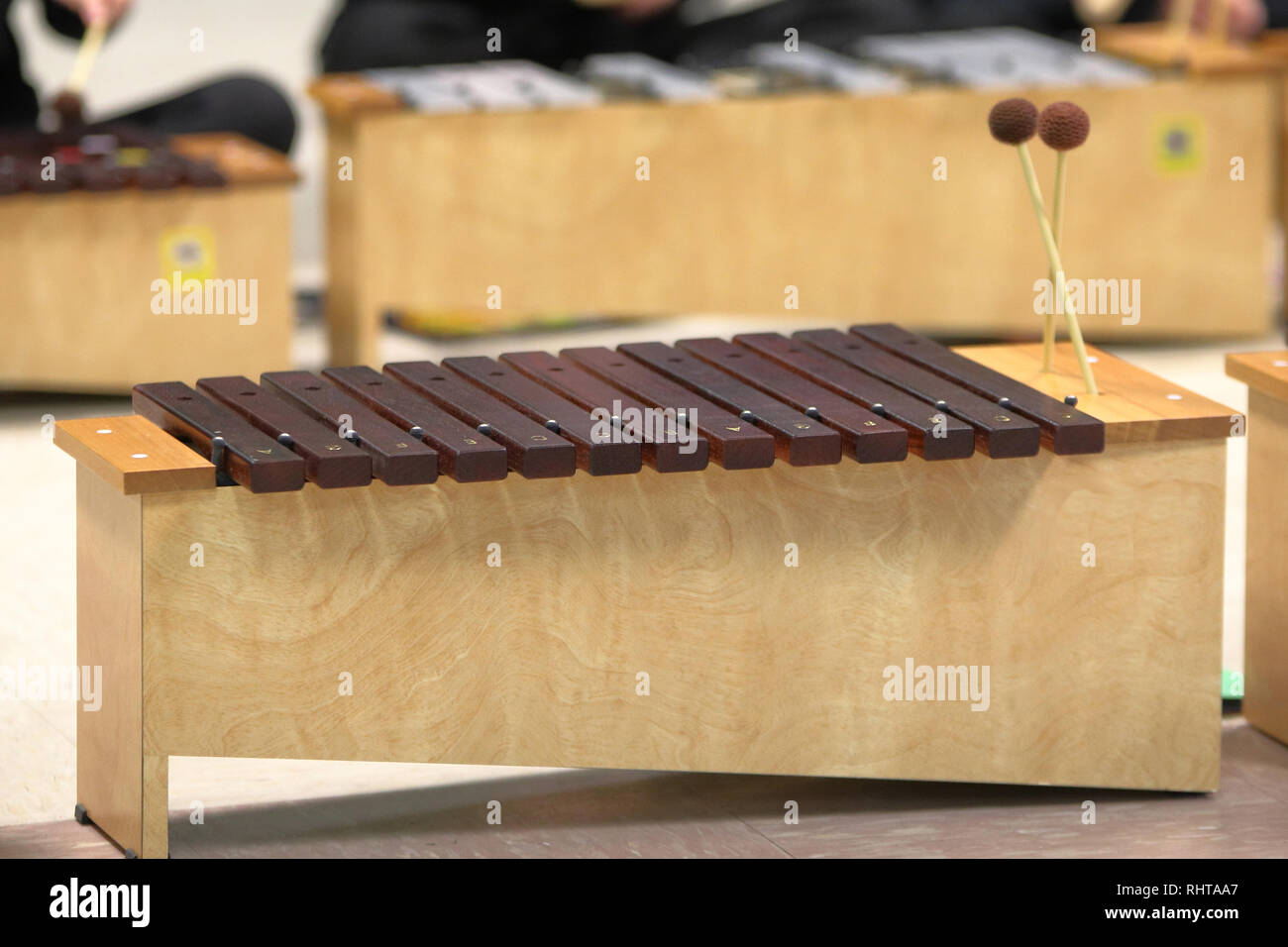 Diatonic Xylophone used by students in school to learn about music and the art. Stock Photohttps://www.alamy.com/image-license-details/?v=1https://www.alamy.com/diatonic-xylophone-used-by-students-in-school-to-learn-about-music-and-the-art-image234718911.html
Diatonic Xylophone used by students in school to learn about music and the art. Stock Photohttps://www.alamy.com/image-license-details/?v=1https://www.alamy.com/diatonic-xylophone-used-by-students-in-school-to-learn-about-music-and-the-art-image234718911.htmlRFRHTAA7–Diatonic Xylophone used by students in school to learn about music and the art.
 Apollo Lyre, 1848–53, New York?, United States?, American, various materials, H. 82.8 cm (32-3/4 in.), Greatest W. 39.2 cm (15-1 Stock Photohttps://www.alamy.com/image-license-details/?v=1https://www.alamy.com/stock-image-apollo-lyre-184853-new-york-united-states-american-various-materials-162426912.html
Apollo Lyre, 1848–53, New York?, United States?, American, various materials, H. 82.8 cm (32-3/4 in.), Greatest W. 39.2 cm (15-1 Stock Photohttps://www.alamy.com/image-license-details/?v=1https://www.alamy.com/stock-image-apollo-lyre-184853-new-york-united-states-american-various-materials-162426912.htmlRMKC7554–Apollo Lyre, 1848–53, New York?, United States?, American, various materials, H. 82.8 cm (32-3/4 in.), Greatest W. 39.2 cm (15-1
 all five positons of b major pentatonic scale on electric guitar Stock Vectorhttps://www.alamy.com/image-license-details/?v=1https://www.alamy.com/all-five-positons-of-b-major-pentatonic-scale-on-electric-guitar-image368684648.html
all five positons of b major pentatonic scale on electric guitar Stock Vectorhttps://www.alamy.com/image-license-details/?v=1https://www.alamy.com/all-five-positons-of-b-major-pentatonic-scale-on-electric-guitar-image368684648.htmlRF2CBR10T–all five positons of b major pentatonic scale on electric guitar
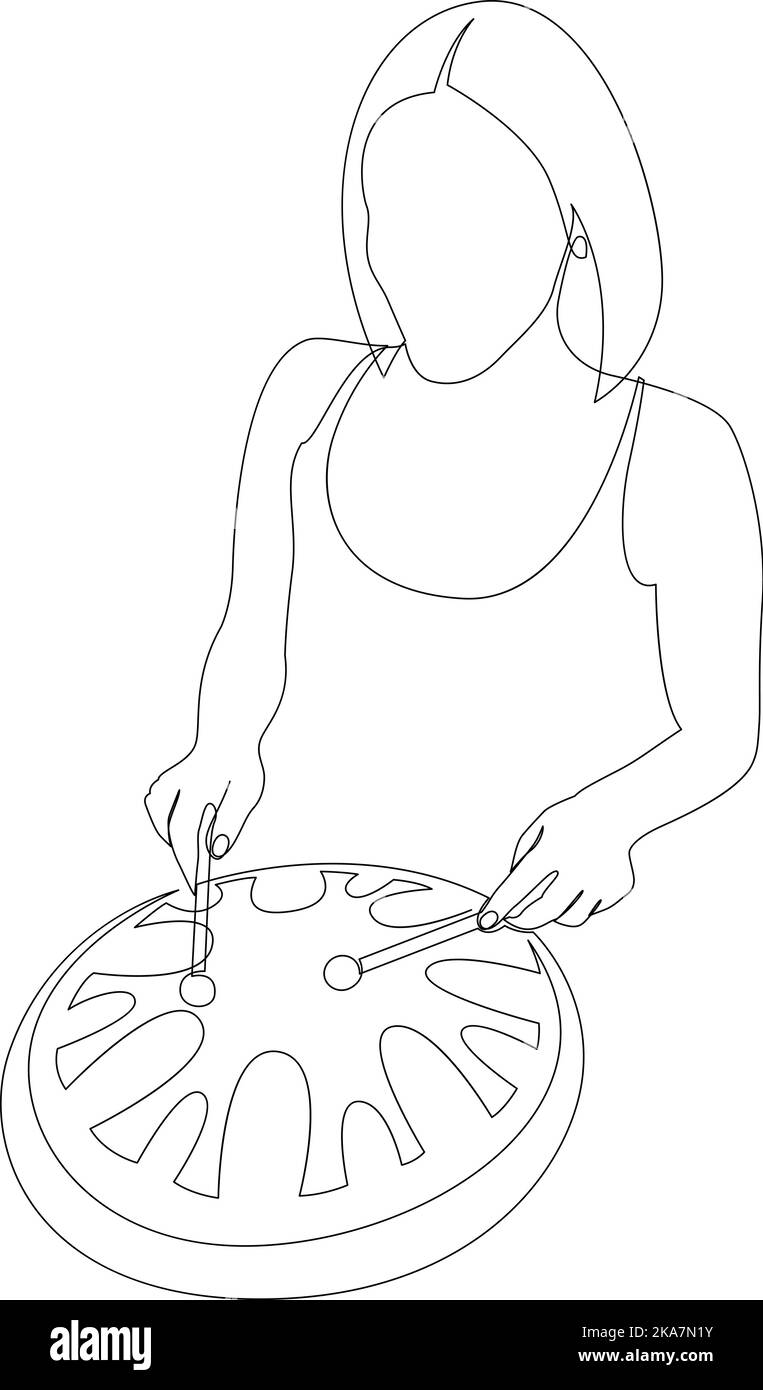 Woman plays the steel tongue drum with sticks. Continuous line drawing of traditional folk music instrument. Vector illustration Stock Vectorhttps://www.alamy.com/image-license-details/?v=1https://www.alamy.com/woman-plays-the-steel-tongue-drum-with-sticks-continuous-line-drawing-of-traditional-folk-music-instrument-vector-illustration-image488207047.html
Woman plays the steel tongue drum with sticks. Continuous line drawing of traditional folk music instrument. Vector illustration Stock Vectorhttps://www.alamy.com/image-license-details/?v=1https://www.alamy.com/woman-plays-the-steel-tongue-drum-with-sticks-continuous-line-drawing-of-traditional-folk-music-instrument-vector-illustration-image488207047.htmlRF2KA7N1Y–Woman plays the steel tongue drum with sticks. Continuous line drawing of traditional folk music instrument. Vector illustration
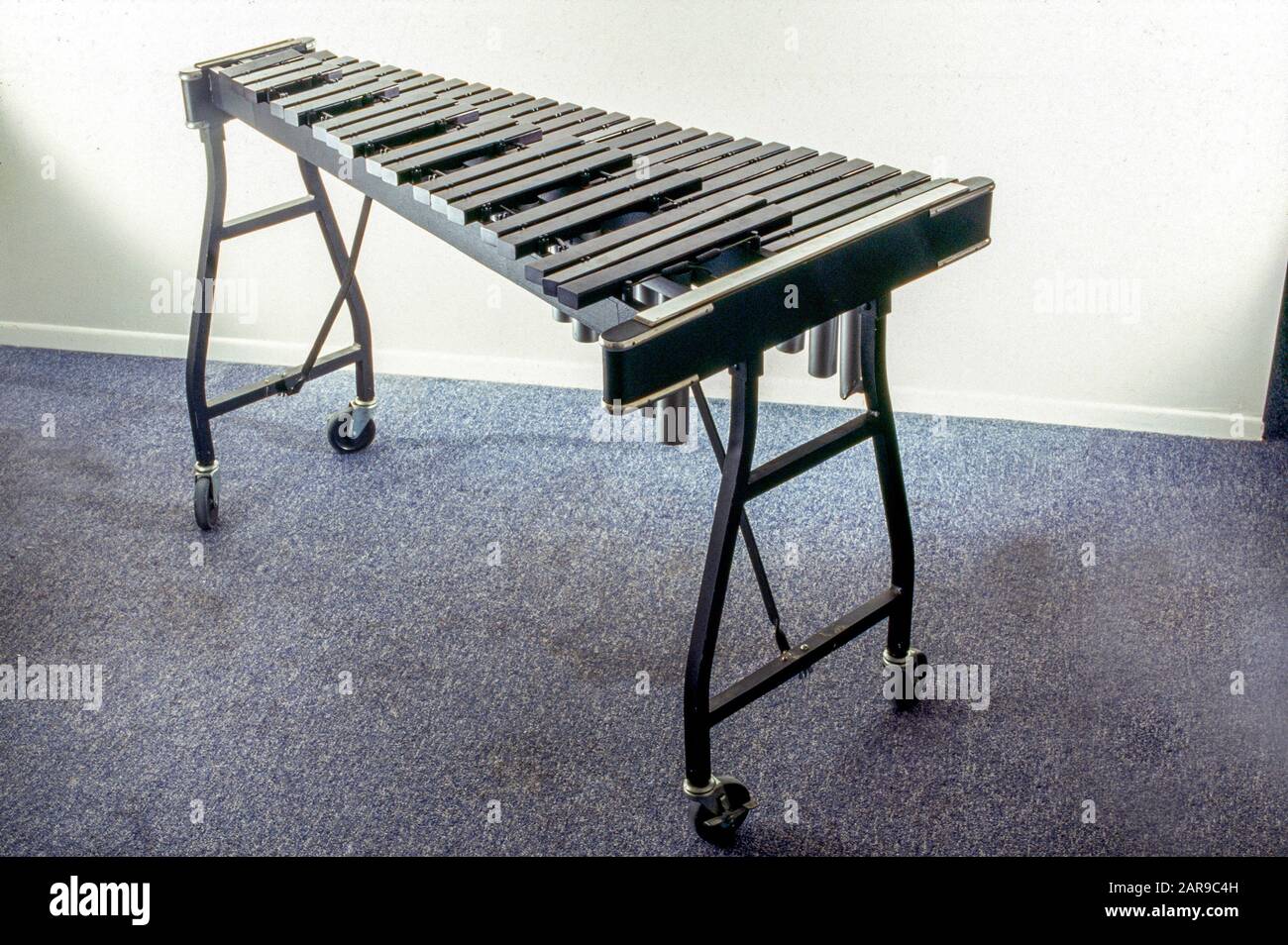 The xylophone is a musical instrument in the percussion family that consists of wooden bars struck by mallets. Each bar is an idiophone tuned to a pitch of a musical scale, whether pentatonic or heptatonic in the case of many African and Asian instruments, diatonic in many western children's instruments, or chromatic for orchestral use. Stock Photohttps://www.alamy.com/image-license-details/?v=1https://www.alamy.com/the-xylophone-is-a-musical-instrument-in-the-percussion-family-that-consists-of-wooden-bars-struck-by-mallets-each-bar-is-an-idiophone-tuned-to-a-pitch-of-a-musical-scale-whether-pentatonic-or-heptatonic-in-the-case-of-many-african-and-asian-instruments-diatonic-in-many-western-childrens-instruments-or-chromatic-for-orchestral-use-image341341185.html
The xylophone is a musical instrument in the percussion family that consists of wooden bars struck by mallets. Each bar is an idiophone tuned to a pitch of a musical scale, whether pentatonic or heptatonic in the case of many African and Asian instruments, diatonic in many western children's instruments, or chromatic for orchestral use. Stock Photohttps://www.alamy.com/image-license-details/?v=1https://www.alamy.com/the-xylophone-is-a-musical-instrument-in-the-percussion-family-that-consists-of-wooden-bars-struck-by-mallets-each-bar-is-an-idiophone-tuned-to-a-pitch-of-a-musical-scale-whether-pentatonic-or-heptatonic-in-the-case-of-many-african-and-asian-instruments-diatonic-in-many-western-childrens-instruments-or-chromatic-for-orchestral-use-image341341185.htmlRM2AR9C4H–The xylophone is a musical instrument in the percussion family that consists of wooden bars struck by mallets. Each bar is an idiophone tuned to a pitch of a musical scale, whether pentatonic or heptatonic in the case of many African and Asian instruments, diatonic in many western children's instruments, or chromatic for orchestral use.
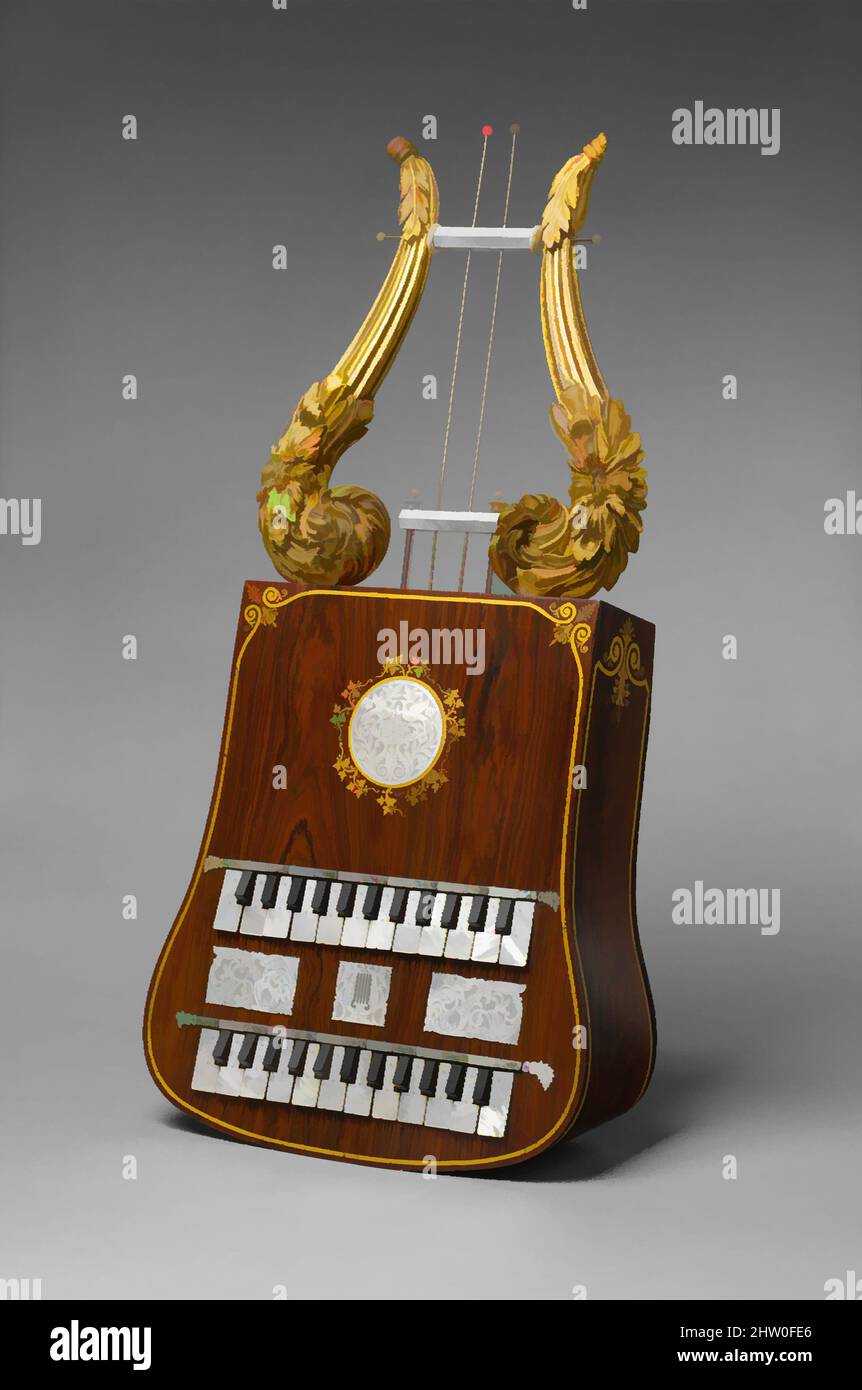 Art inspired by Apollo Lyre, 1848–53, New York?, United States?, American, various materials, H. 82.8 cm (32-3/4 in.), Greatest W. 39.2 cm (15-1/2 in.), D. 11.7 cm (4-3/4 in.), Aerophone-Free Reed-harmonium, This instrument, the only known example of its kind, was probably inspired by, Classic works modernized by Artotop with a splash of modernity. Shapes, color and value, eye-catching visual impact on art. Emotions through freedom of artworks in a contemporary way. A timeless message pursuing a wildly creative new direction. Artists turning to the digital medium and creating the Artotop NFT Stock Photohttps://www.alamy.com/image-license-details/?v=1https://www.alamy.com/art-inspired-by-apollo-lyre-184853-new-york-united-states-american-various-materials-h-828-cm-32-34-in-greatest-w-392-cm-15-12-in-d-117-cm-4-34-in-aerophone-free-reed-harmonium-this-instrument-the-only-known-example-of-its-kind-was-probably-inspired-by-classic-works-modernized-by-artotop-with-a-splash-of-modernity-shapes-color-and-value-eye-catching-visual-impact-on-art-emotions-through-freedom-of-artworks-in-a-contemporary-way-a-timeless-message-pursuing-a-wildly-creative-new-direction-artists-turning-to-the-digital-medium-and-creating-the-artotop-nft-image462848126.html
Art inspired by Apollo Lyre, 1848–53, New York?, United States?, American, various materials, H. 82.8 cm (32-3/4 in.), Greatest W. 39.2 cm (15-1/2 in.), D. 11.7 cm (4-3/4 in.), Aerophone-Free Reed-harmonium, This instrument, the only known example of its kind, was probably inspired by, Classic works modernized by Artotop with a splash of modernity. Shapes, color and value, eye-catching visual impact on art. Emotions through freedom of artworks in a contemporary way. A timeless message pursuing a wildly creative new direction. Artists turning to the digital medium and creating the Artotop NFT Stock Photohttps://www.alamy.com/image-license-details/?v=1https://www.alamy.com/art-inspired-by-apollo-lyre-184853-new-york-united-states-american-various-materials-h-828-cm-32-34-in-greatest-w-392-cm-15-12-in-d-117-cm-4-34-in-aerophone-free-reed-harmonium-this-instrument-the-only-known-example-of-its-kind-was-probably-inspired-by-classic-works-modernized-by-artotop-with-a-splash-of-modernity-shapes-color-and-value-eye-catching-visual-impact-on-art-emotions-through-freedom-of-artworks-in-a-contemporary-way-a-timeless-message-pursuing-a-wildly-creative-new-direction-artists-turning-to-the-digital-medium-and-creating-the-artotop-nft-image462848126.htmlRF2HW0FE6–Art inspired by Apollo Lyre, 1848–53, New York?, United States?, American, various materials, H. 82.8 cm (32-3/4 in.), Greatest W. 39.2 cm (15-1/2 in.), D. 11.7 cm (4-3/4 in.), Aerophone-Free Reed-harmonium, This instrument, the only known example of its kind, was probably inspired by, Classic works modernized by Artotop with a splash of modernity. Shapes, color and value, eye-catching visual impact on art. Emotions through freedom of artworks in a contemporary way. A timeless message pursuing a wildly creative new direction. Artists turning to the digital medium and creating the Artotop NFT
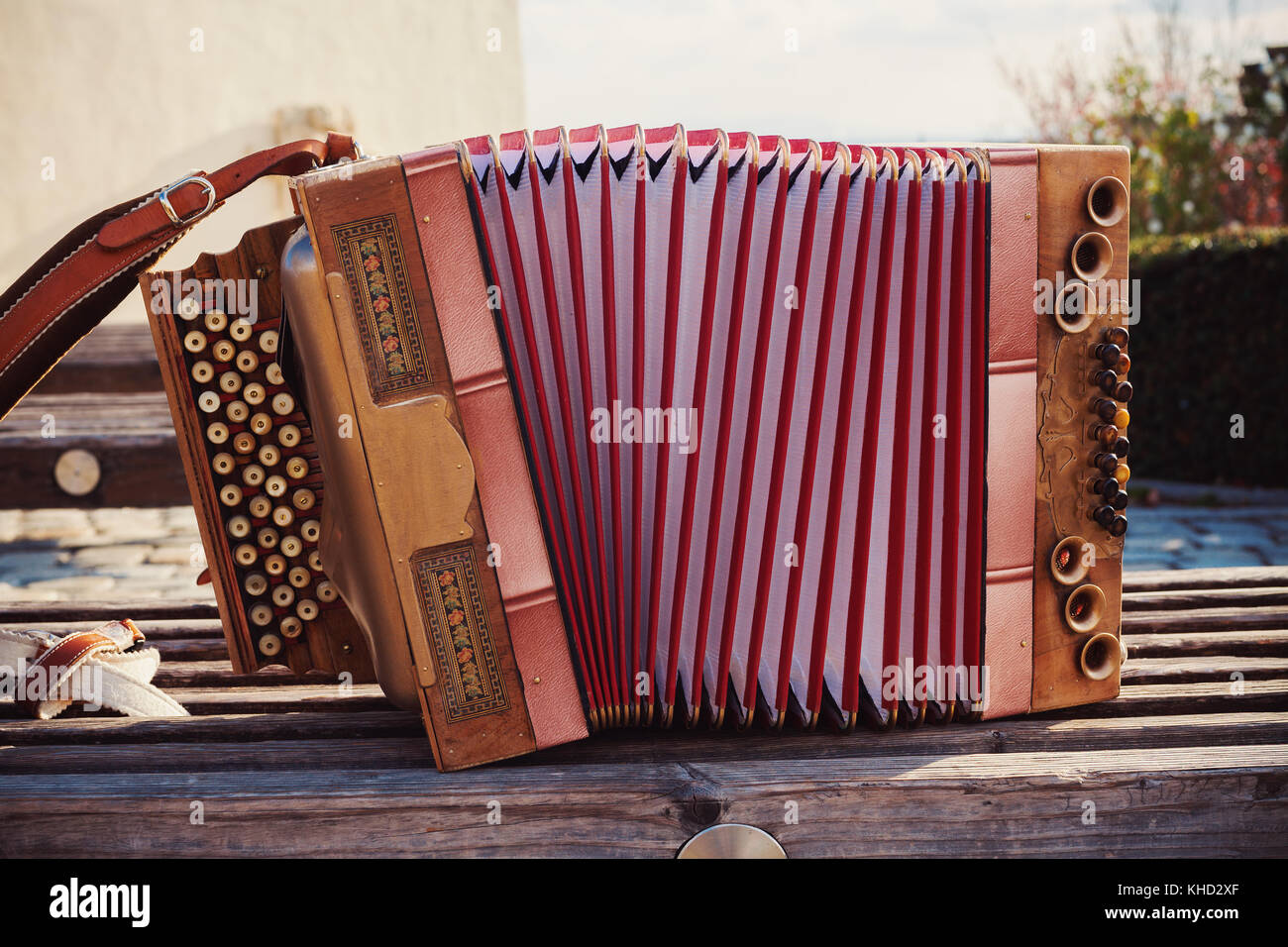 One old Austrian accordion, details of decoration. Stock Photohttps://www.alamy.com/image-license-details/?v=1https://www.alamy.com/stock-image-one-old-austrian-accordion-details-of-decoration-165630151.html
One old Austrian accordion, details of decoration. Stock Photohttps://www.alamy.com/image-license-details/?v=1https://www.alamy.com/stock-image-one-old-austrian-accordion-details-of-decoration-165630151.htmlRFKHD2XF–One old Austrian accordion, details of decoration.
 Sheet music cover image of the song 'Preludes for the Piano Forte, to which are added the Diatonic and Chromatic Scale with the Fingering Marked', with original authorship notes reading 'Selected and Composed by B Carr', United States, 1900. The publisher is listed as 'T. Carr', the form of composition is 'brief, through-composed preludes, addressing technical pianistic challenges.', the instrumentation is 'piano', the first line reads 'None', and the illustration artist is listed as 'None'. Stock Photohttps://www.alamy.com/image-license-details/?v=1https://www.alamy.com/stock-photo-sheet-music-cover-image-of-the-song-preludes-for-the-piano-forte-to-135194604.html
Sheet music cover image of the song 'Preludes for the Piano Forte, to which are added the Diatonic and Chromatic Scale with the Fingering Marked', with original authorship notes reading 'Selected and Composed by B Carr', United States, 1900. The publisher is listed as 'T. Carr', the form of composition is 'brief, through-composed preludes, addressing technical pianistic challenges.', the instrumentation is 'piano', the first line reads 'None', and the illustration artist is listed as 'None'. Stock Photohttps://www.alamy.com/image-license-details/?v=1https://www.alamy.com/stock-photo-sheet-music-cover-image-of-the-song-preludes-for-the-piano-forte-to-135194604.htmlRMHRXJ2M–Sheet music cover image of the song 'Preludes for the Piano Forte, to which are added the Diatonic and Chromatic Scale with the Fingering Marked', with original authorship notes reading 'Selected and Composed by B Carr', United States, 1900. The publisher is listed as 'T. Carr', the form of composition is 'brief, through-composed preludes, addressing technical pianistic challenges.', the instrumentation is 'piano', the first line reads 'None', and the illustration artist is listed as 'None'.
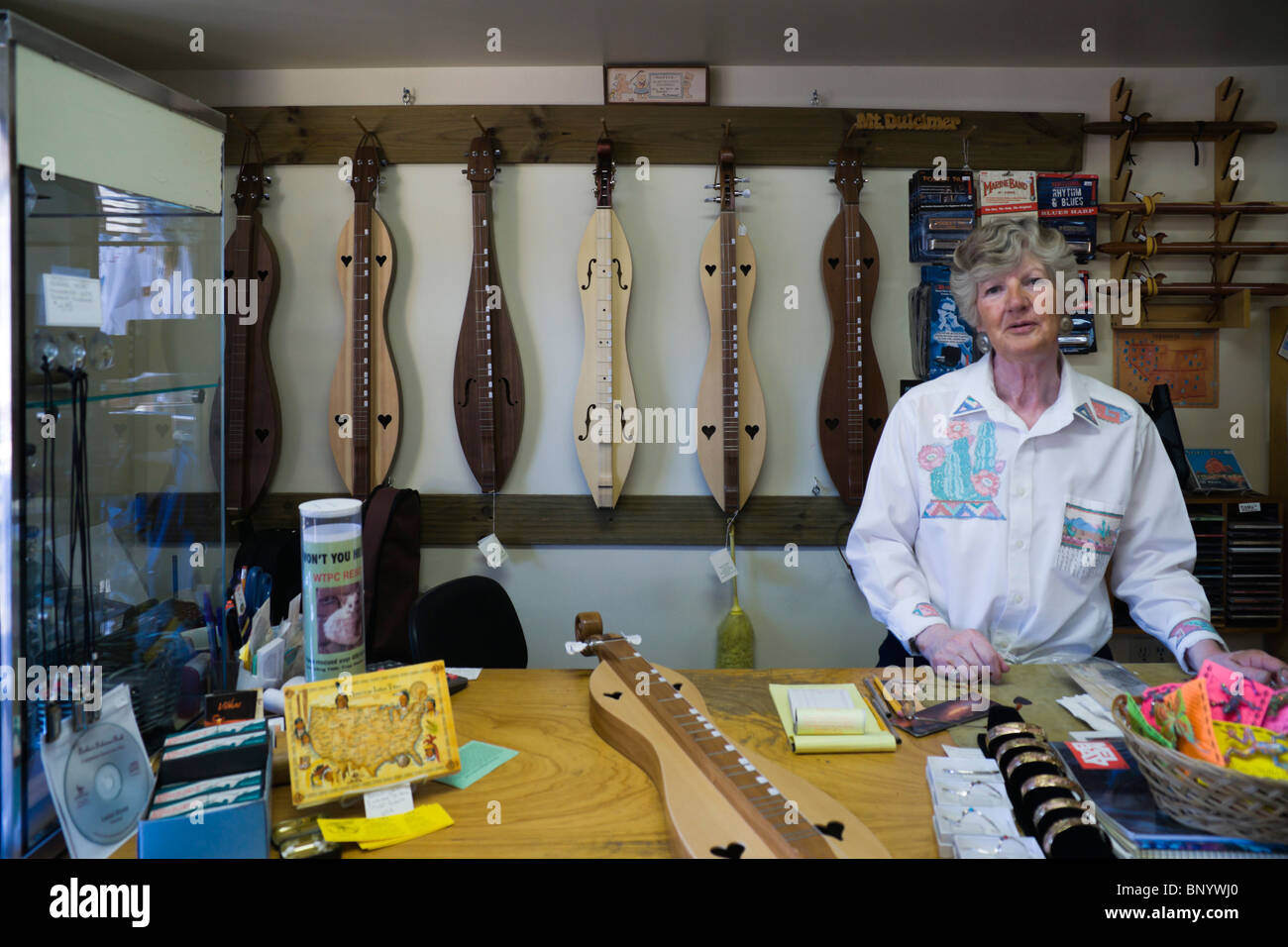 Sedona, Arizona - Sedona Sunset shop, which specialises in American Mountain Dulcimer or lap dulcimer fretted instruments. Stock Photohttps://www.alamy.com/image-license-details/?v=1https://www.alamy.com/stock-photo-sedona-arizona-sedona-sunset-shop-which-specialises-in-american-mountain-30730952.html
Sedona, Arizona - Sedona Sunset shop, which specialises in American Mountain Dulcimer or lap dulcimer fretted instruments. Stock Photohttps://www.alamy.com/image-license-details/?v=1https://www.alamy.com/stock-photo-sedona-arizona-sedona-sunset-shop-which-specialises-in-american-mountain-30730952.htmlRFBNYWJ0–Sedona, Arizona - Sedona Sunset shop, which specialises in American Mountain Dulcimer or lap dulcimer fretted instruments.
 Music sheet notes score melody close up black white lines composition left right hands treble cleft printed on paper Stock Photohttps://www.alamy.com/image-license-details/?v=1https://www.alamy.com/stock-photo-music-sheet-notes-score-melody-close-up-black-white-lines-composition-50968450.html
Music sheet notes score melody close up black white lines composition left right hands treble cleft printed on paper Stock Photohttps://www.alamy.com/image-license-details/?v=1https://www.alamy.com/stock-photo-music-sheet-notes-score-melody-close-up-black-white-lines-composition-50968450.htmlRMCXWPNP–Music sheet notes score melody close up black white lines composition left right hands treble cleft printed on paper
 The letter G Stock Photohttps://www.alamy.com/image-license-details/?v=1https://www.alamy.com/stock-photo-the-letter-g-113816285.html
The letter G Stock Photohttps://www.alamy.com/image-license-details/?v=1https://www.alamy.com/stock-photo-the-letter-g-113816285.htmlRFGH4NR9–The letter G
 playing the accordion Stock Photohttps://www.alamy.com/image-license-details/?v=1https://www.alamy.com/stock-photo-playing-the-accordion-37820081.html
playing the accordion Stock Photohttps://www.alamy.com/image-license-details/?v=1https://www.alamy.com/stock-photo-playing-the-accordion-37820081.htmlRMC5ERW5–playing the accordion
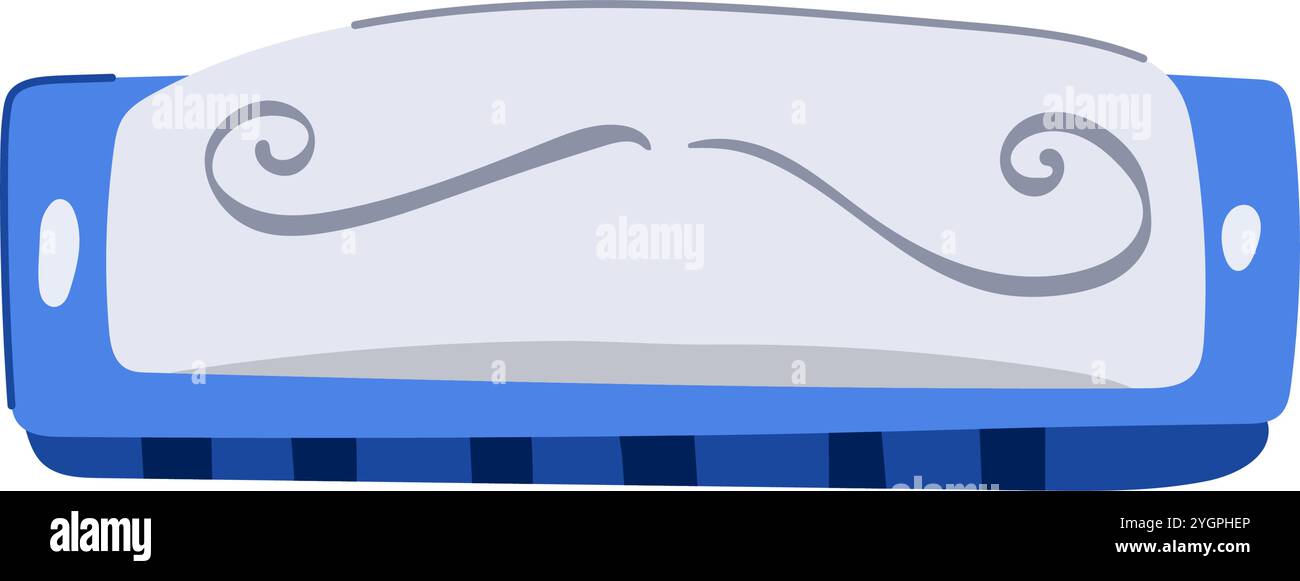 folk harmonica cartoon vector illustration Stock Vectorhttps://www.alamy.com/image-license-details/?v=1https://www.alamy.com/folk-harmonica-cartoon-vector-illustration-image629904430.html
folk harmonica cartoon vector illustration Stock Vectorhttps://www.alamy.com/image-license-details/?v=1https://www.alamy.com/folk-harmonica-cartoon-vector-illustration-image629904430.htmlRF2YGPHEP–folk harmonica cartoon vector illustration
 Apollo Lyre. Culture: American. Dimensions: H. 82.8 cm (32-3/4 in.), Greatest W. 39.2 cm (15-1/2 in.), D. 11.7 cm (4-3/4 in.). Date: 1848-53. This instrument, the only known example of its kind, was probably inspired by the melophone, which a French player presented in a concert in New York in 1841. The upward-pointing handles produce pressure and suction to sound a diatonic scale, as in an accordion or harmonica. Museum: Metropolitan Museum of Art, New York, USA. Stock Photohttps://www.alamy.com/image-license-details/?v=1https://www.alamy.com/apollo-lyre-culture-american-dimensions-h-828-cm-32-34-in-greatest-w-392-cm-15-12-in-d-117-cm-4-34-in-date-1848-53-this-instrument-the-only-known-example-of-its-kind-was-probably-inspired-by-the-melophone-which-a-french-player-presented-in-a-concert-in-new-york-in-1841-the-upward-pointing-handles-produce-pressure-and-suction-to-sound-a-diatonic-scale-as-in-an-accordion-or-harmonica-museum-metropolitan-museum-of-art-new-york-usa-image213073756.html
Apollo Lyre. Culture: American. Dimensions: H. 82.8 cm (32-3/4 in.), Greatest W. 39.2 cm (15-1/2 in.), D. 11.7 cm (4-3/4 in.). Date: 1848-53. This instrument, the only known example of its kind, was probably inspired by the melophone, which a French player presented in a concert in New York in 1841. The upward-pointing handles produce pressure and suction to sound a diatonic scale, as in an accordion or harmonica. Museum: Metropolitan Museum of Art, New York, USA. Stock Photohttps://www.alamy.com/image-license-details/?v=1https://www.alamy.com/apollo-lyre-culture-american-dimensions-h-828-cm-32-34-in-greatest-w-392-cm-15-12-in-d-117-cm-4-34-in-date-1848-53-this-instrument-the-only-known-example-of-its-kind-was-probably-inspired-by-the-melophone-which-a-french-player-presented-in-a-concert-in-new-york-in-1841-the-upward-pointing-handles-produce-pressure-and-suction-to-sound-a-diatonic-scale-as-in-an-accordion-or-harmonica-museum-metropolitan-museum-of-art-new-york-usa-image213073756.htmlRMPAJ9N0–Apollo Lyre. Culture: American. Dimensions: H. 82.8 cm (32-3/4 in.), Greatest W. 39.2 cm (15-1/2 in.), D. 11.7 cm (4-3/4 in.). Date: 1848-53. This instrument, the only known example of its kind, was probably inspired by the melophone, which a French player presented in a concert in New York in 1841. The upward-pointing handles produce pressure and suction to sound a diatonic scale, as in an accordion or harmonica. Museum: Metropolitan Museum of Art, New York, USA.
 accordeon player at annual festival Mayrhofen Zillertal Tyrol Austria Stock Photohttps://www.alamy.com/image-license-details/?v=1https://www.alamy.com/accordeon-player-at-annual-festival-mayrhofen-zillertal-tyrol-austria-image6567316.html
accordeon player at annual festival Mayrhofen Zillertal Tyrol Austria Stock Photohttps://www.alamy.com/image-license-details/?v=1https://www.alamy.com/accordeon-player-at-annual-festival-mayrhofen-zillertal-tyrol-austria-image6567316.htmlRMA687N5–accordeon player at annual festival Mayrhofen Zillertal Tyrol Austria
 The encyclopædia britannica; a dictionary of arts, sciences, literature and general information . t which little seems to be known. Victor Mahillon*describes such an instrument, but ascribes the invention to Kolbel;there was but one key placed on the bell, which on being openedhad the effect of raising the pitch of the instrument a whole tone.By alternately using the harmonic open notes on the no.rmal lengthof the tube, and then by the action of the key shortening the aircolumn, the following diatonic scale was obtained in the thirdoctave: key key key key 8 Methode de premier el de second cor Stock Photohttps://www.alamy.com/image-license-details/?v=1https://www.alamy.com/the-encyclopdia-britannica-a-dictionary-of-arts-sciences-literature-and-general-information-t-which-little-seems-to-be-known-victor-mahillondescribes-such-an-instrument-but-ascribes-the-invention-to-kolbelthere-was-but-one-key-placed-on-the-bell-which-on-being-openedhad-the-effect-of-raising-the-pitch-of-the-instrument-a-whole-toneby-alternately-using-the-harmonic-open-notes-on-the-normal-lengthof-the-tube-and-then-by-the-action-of-the-key-shortening-the-aircolumn-the-following-diatonic-scale-was-obtained-in-the-thirdoctave-key-key-key-key-8-methode-de-premier-el-de-second-cor-image338392109.html
The encyclopædia britannica; a dictionary of arts, sciences, literature and general information . t which little seems to be known. Victor Mahillon*describes such an instrument, but ascribes the invention to Kolbel;there was but one key placed on the bell, which on being openedhad the effect of raising the pitch of the instrument a whole tone.By alternately using the harmonic open notes on the no.rmal lengthof the tube, and then by the action of the key shortening the aircolumn, the following diatonic scale was obtained in the thirdoctave: key key key key 8 Methode de premier el de second cor Stock Photohttps://www.alamy.com/image-license-details/?v=1https://www.alamy.com/the-encyclopdia-britannica-a-dictionary-of-arts-sciences-literature-and-general-information-t-which-little-seems-to-be-known-victor-mahillondescribes-such-an-instrument-but-ascribes-the-invention-to-kolbelthere-was-but-one-key-placed-on-the-bell-which-on-being-openedhad-the-effect-of-raising-the-pitch-of-the-instrument-a-whole-toneby-alternately-using-the-harmonic-open-notes-on-the-normal-lengthof-the-tube-and-then-by-the-action-of-the-key-shortening-the-aircolumn-the-following-diatonic-scale-was-obtained-in-the-thirdoctave-key-key-key-key-8-methode-de-premier-el-de-second-cor-image338392109.htmlRM2AJF2GD–The encyclopædia britannica; a dictionary of arts, sciences, literature and general information . t which little seems to be known. Victor Mahillon*describes such an instrument, but ascribes the invention to Kolbel;there was but one key placed on the bell, which on being openedhad the effect of raising the pitch of the instrument a whole tone.By alternately using the harmonic open notes on the no.rmal lengthof the tube, and then by the action of the key shortening the aircolumn, the following diatonic scale was obtained in the thirdoctave: key key key key 8 Methode de premier el de second cor
 young lady playing the accordion Stock Photohttps://www.alamy.com/image-license-details/?v=1https://www.alamy.com/stock-photo-young-lady-playing-the-accordion-37820112.html
young lady playing the accordion Stock Photohttps://www.alamy.com/image-license-details/?v=1https://www.alamy.com/stock-photo-young-lady-playing-the-accordion-37820112.htmlRMC5ERX8–young lady playing the accordion
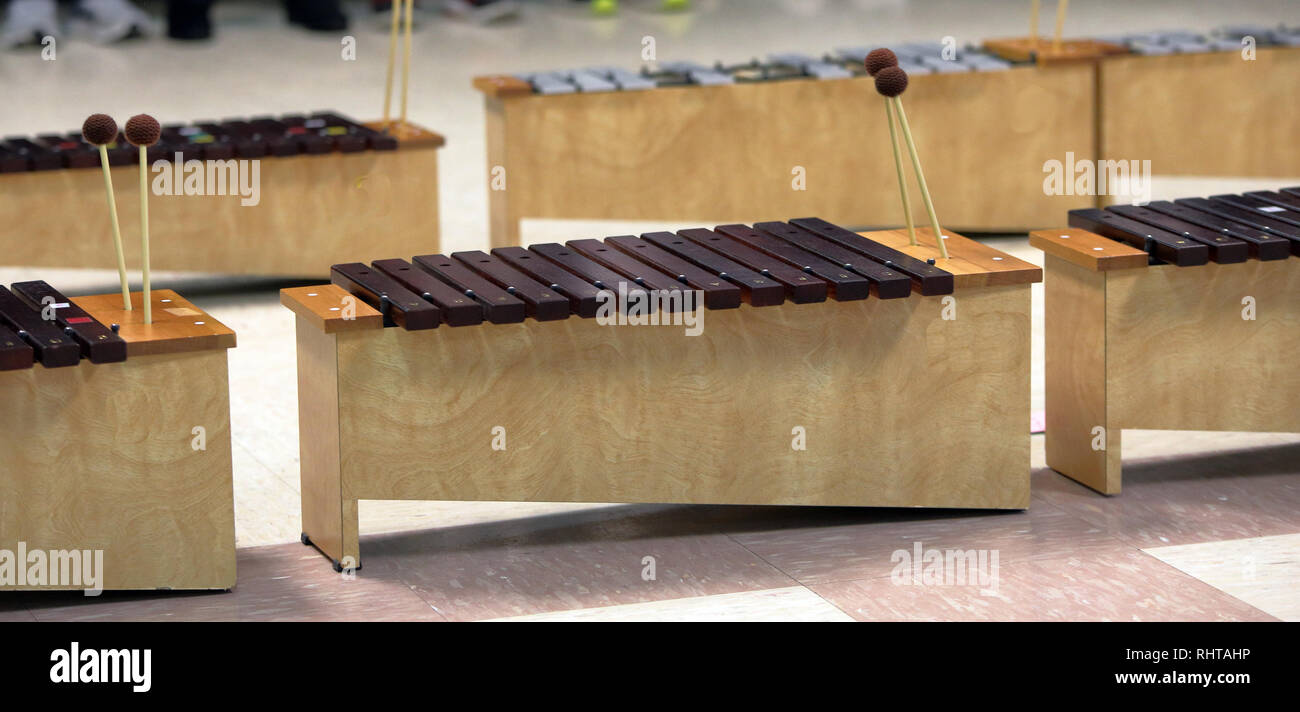 Diatonic Xylophone used by students in school to learn about music and the art. Stock Photohttps://www.alamy.com/image-license-details/?v=1https://www.alamy.com/diatonic-xylophone-used-by-students-in-school-to-learn-about-music-and-the-art-image234719122.html
Diatonic Xylophone used by students in school to learn about music and the art. Stock Photohttps://www.alamy.com/image-license-details/?v=1https://www.alamy.com/diatonic-xylophone-used-by-students-in-school-to-learn-about-music-and-the-art-image234719122.htmlRFRHTAHP–Diatonic Xylophone used by students in school to learn about music and the art.
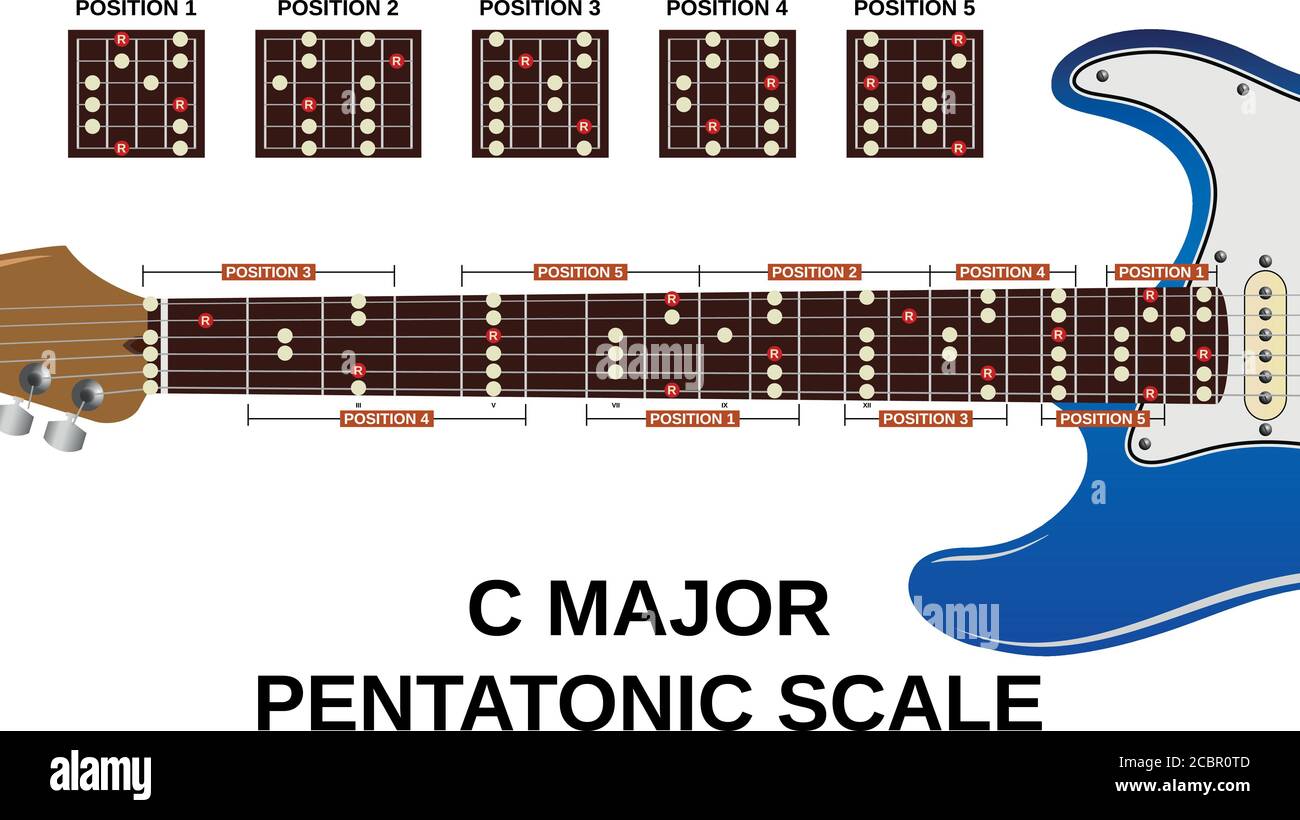 all five positons of c major pentatonic scale on electric guitar Stock Vectorhttps://www.alamy.com/image-license-details/?v=1https://www.alamy.com/all-five-positons-of-c-major-pentatonic-scale-on-electric-guitar-image368684525.html
all five positons of c major pentatonic scale on electric guitar Stock Vectorhttps://www.alamy.com/image-license-details/?v=1https://www.alamy.com/all-five-positons-of-c-major-pentatonic-scale-on-electric-guitar-image368684525.htmlRF2CBR0TD–all five positons of c major pentatonic scale on electric guitar
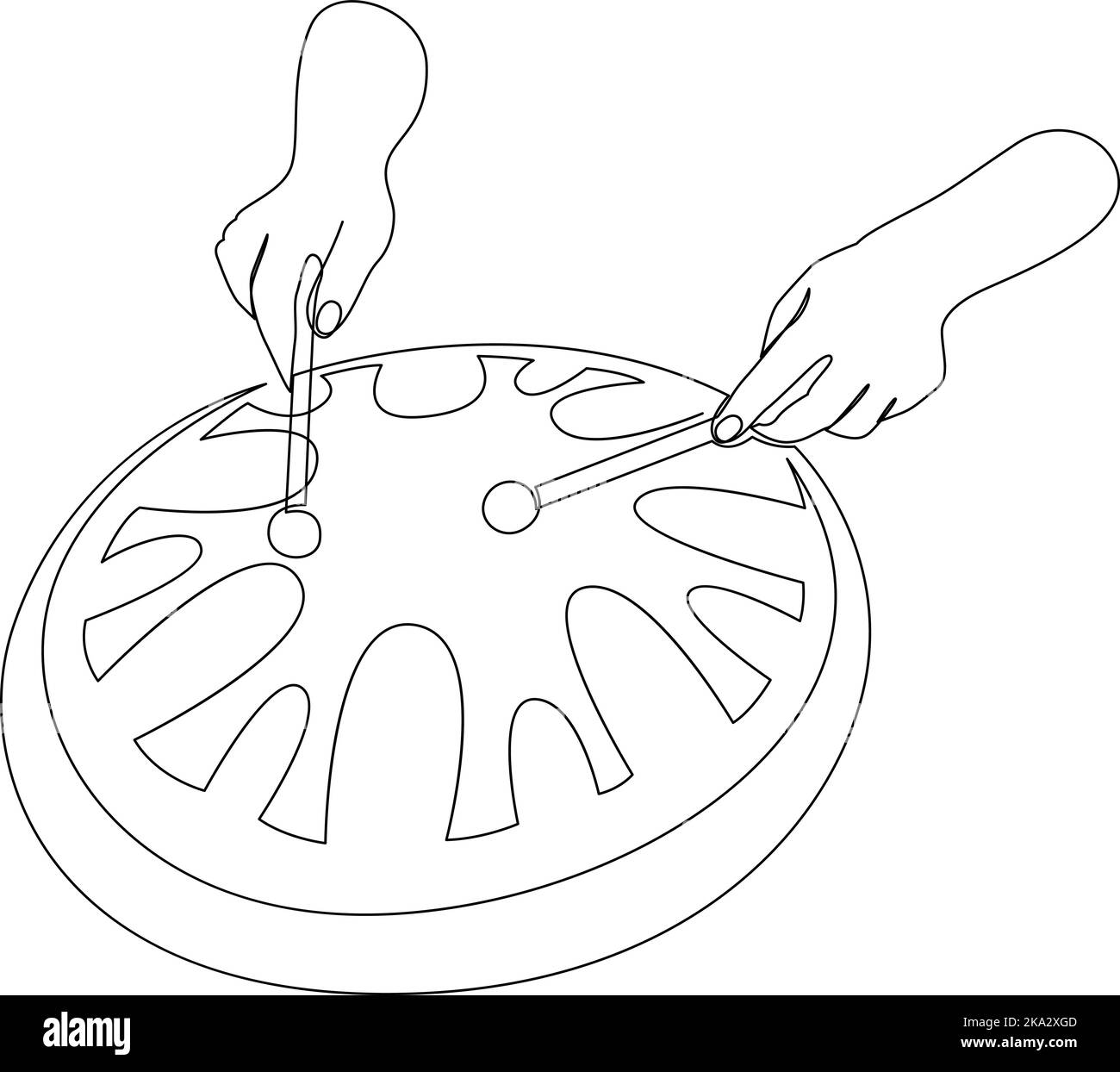 Playing the steel tongue drum with sticks. Continuous line drawing of traditional folk music instrument. Vector illustration Stock Vectorhttps://www.alamy.com/image-license-details/?v=1https://www.alamy.com/playing-the-steel-tongue-drum-with-sticks-continuous-line-drawing-of-traditional-folk-music-instrument-vector-illustration-image488101613.html
Playing the steel tongue drum with sticks. Continuous line drawing of traditional folk music instrument. Vector illustration Stock Vectorhttps://www.alamy.com/image-license-details/?v=1https://www.alamy.com/playing-the-steel-tongue-drum-with-sticks-continuous-line-drawing-of-traditional-folk-music-instrument-vector-illustration-image488101613.htmlRF2KA2XGD–Playing the steel tongue drum with sticks. Continuous line drawing of traditional folk music instrument. Vector illustration
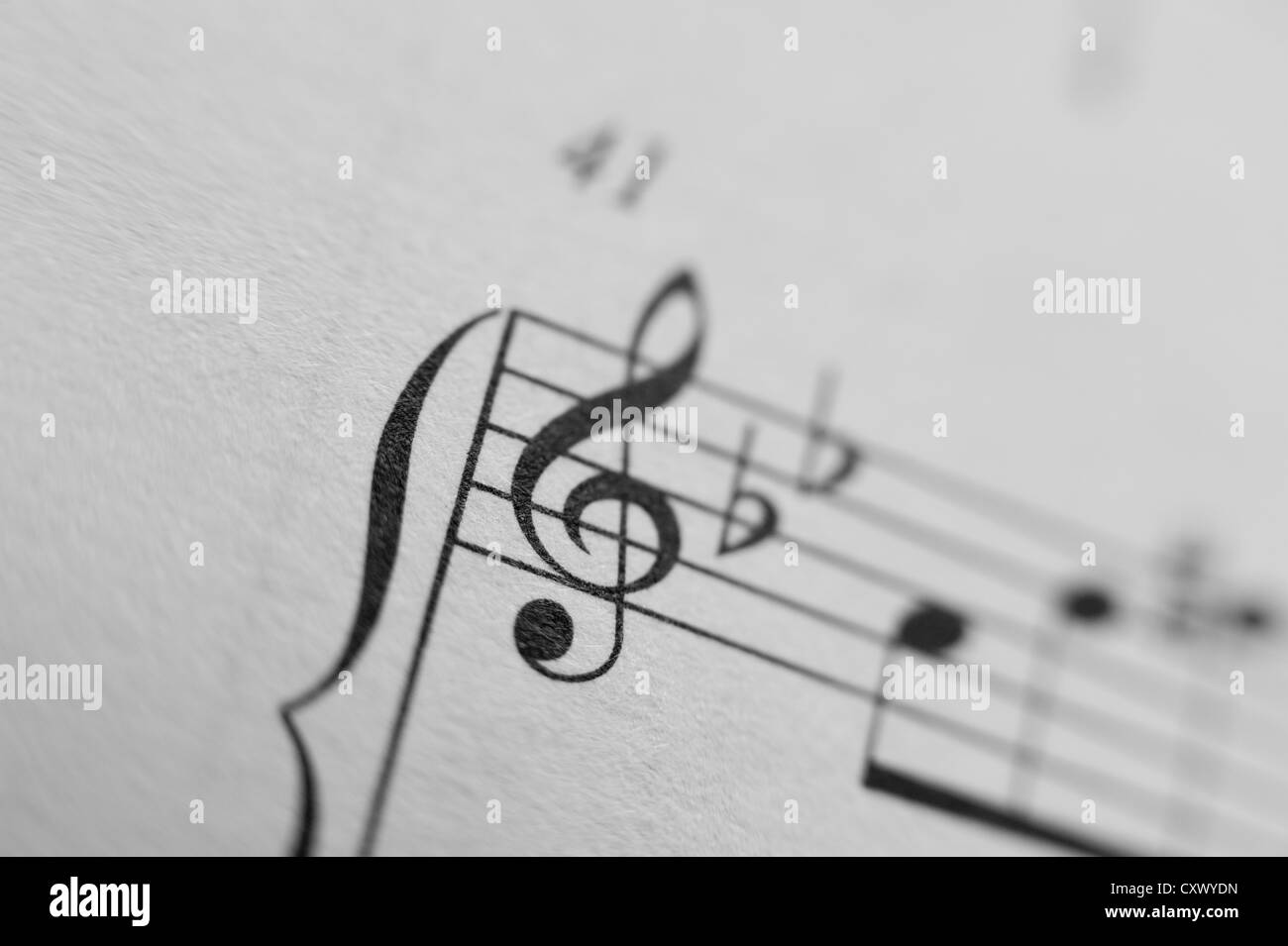 Music sheet notes score melody close up black white lines composition left right hands treble cleft printed on paper Stock Photohttps://www.alamy.com/image-license-details/?v=1https://www.alamy.com/stock-photo-music-sheet-notes-score-melody-close-up-black-white-lines-composition-50972145.html
Music sheet notes score melody close up black white lines composition left right hands treble cleft printed on paper Stock Photohttps://www.alamy.com/image-license-details/?v=1https://www.alamy.com/stock-photo-music-sheet-notes-score-melody-close-up-black-white-lines-composition-50972145.htmlRMCXWYDN–Music sheet notes score melody close up black white lines composition left right hands treble cleft printed on paper
 The letter B Stock Photohttps://www.alamy.com/image-license-details/?v=1https://www.alamy.com/stock-photo-the-letter-b-113816278.html
The letter B Stock Photohttps://www.alamy.com/image-license-details/?v=1https://www.alamy.com/stock-photo-the-letter-b-113816278.htmlRFGH4NR2–The letter B
 instrument harmonica cartoon vector illustration Stock Vectorhttps://www.alamy.com/image-license-details/?v=1https://www.alamy.com/instrument-harmonica-cartoon-vector-illustration-image629904254.html
instrument harmonica cartoon vector illustration Stock Vectorhttps://www.alamy.com/image-license-details/?v=1https://www.alamy.com/instrument-harmonica-cartoon-vector-illustration-image629904254.htmlRF2YGPH8E–instrument harmonica cartoon vector illustration
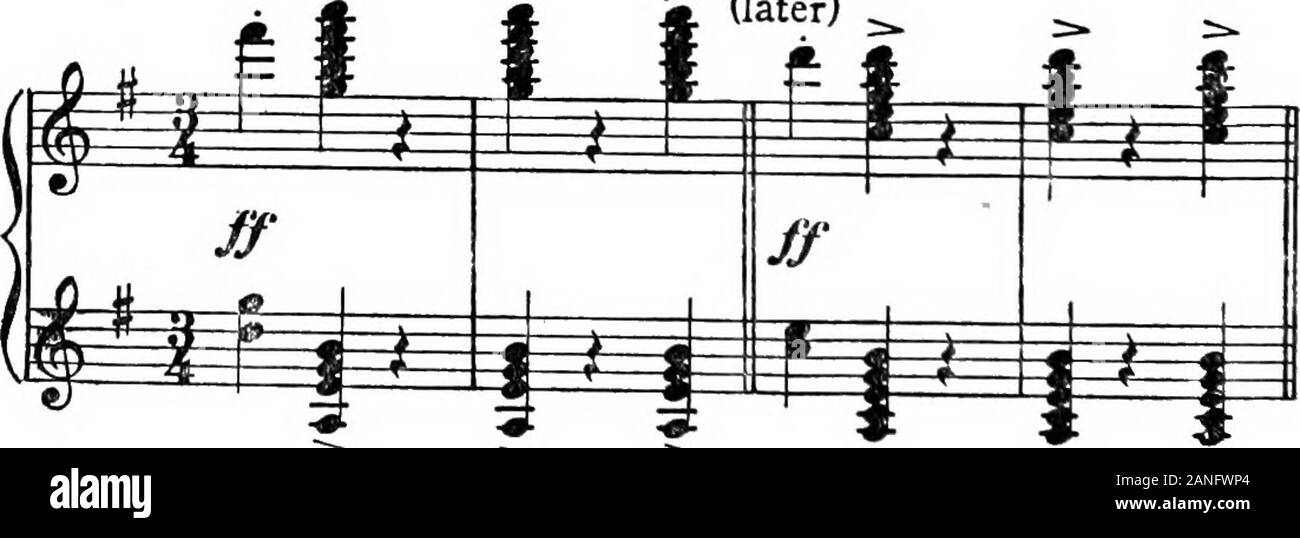 Modern harmony, its explanation and application . Ex.196. RAVEL,Valses nooles.(later) ^ ^ ^. NEW METHODS OF CHORD-STRUCTURE 95 Ex.197. Anime. DEBUSSY,Pelleas. IflOO /— ^ m ^^ A moments thought will show us that such a structurenot only supplies the whole of the diatonic scale, but containsin itself every chord of the whole of the diatonic system onwhich the chord is founded, and in using this method w^e maydraw melody, intervals, and chords of three, four, five, six, orseven notes from such a series. Every possible diatonicconcord or discord may be found therein, and their use isjustified by a Stock Photohttps://www.alamy.com/image-license-details/?v=1https://www.alamy.com/modern-harmony-its-explanation-and-application-ex196-ravelvalses-nooleslater-new-methods-of-chord-structure-95-ex197-anime-debussypelleas-ifloo-m-a-moments-thought-will-show-us-that-such-a-structurenot-only-supplies-the-whole-of-the-diatonic-scale-but-containsin-itself-every-chord-of-the-whole-of-the-diatonic-system-onwhich-the-chord-is-founded-and-in-using-this-method-we-maydraw-melody-intervals-and-chords-of-three-four-five-six-orseven-notes-from-such-a-series-every-possible-diatonicconcord-or-discord-may-be-found-therein-and-their-use-isjustified-by-a-image340254268.html
Modern harmony, its explanation and application . Ex.196. RAVEL,Valses nooles.(later) ^ ^ ^. NEW METHODS OF CHORD-STRUCTURE 95 Ex.197. Anime. DEBUSSY,Pelleas. IflOO /— ^ m ^^ A moments thought will show us that such a structurenot only supplies the whole of the diatonic scale, but containsin itself every chord of the whole of the diatonic system onwhich the chord is founded, and in using this method w^e maydraw melody, intervals, and chords of three, four, five, six, orseven notes from such a series. Every possible diatonicconcord or discord may be found therein, and their use isjustified by a Stock Photohttps://www.alamy.com/image-license-details/?v=1https://www.alamy.com/modern-harmony-its-explanation-and-application-ex196-ravelvalses-nooleslater-new-methods-of-chord-structure-95-ex197-anime-debussypelleas-ifloo-m-a-moments-thought-will-show-us-that-such-a-structurenot-only-supplies-the-whole-of-the-diatonic-scale-but-containsin-itself-every-chord-of-the-whole-of-the-diatonic-system-onwhich-the-chord-is-founded-and-in-using-this-method-we-maydraw-melody-intervals-and-chords-of-three-four-five-six-orseven-notes-from-such-a-series-every-possible-diatonicconcord-or-discord-may-be-found-therein-and-their-use-isjustified-by-a-image340254268.htmlRM2ANFWP4–Modern harmony, its explanation and application . Ex.196. RAVEL,Valses nooles.(later) ^ ^ ^. NEW METHODS OF CHORD-STRUCTURE 95 Ex.197. Anime. DEBUSSY,Pelleas. IflOO /— ^ m ^^ A moments thought will show us that such a structurenot only supplies the whole of the diatonic scale, but containsin itself every chord of the whole of the diatonic system onwhich the chord is founded, and in using this method w^e maydraw melody, intervals, and chords of three, four, five, six, orseven notes from such a series. Every possible diatonicconcord or discord may be found therein, and their use isjustified by a
 Diatonic Xylophone used by students in school to learn about music and the art. Stock Photohttps://www.alamy.com/image-license-details/?v=1https://www.alamy.com/diatonic-xylophone-used-by-students-in-school-to-learn-about-music-and-the-art-image234719071.html
Diatonic Xylophone used by students in school to learn about music and the art. Stock Photohttps://www.alamy.com/image-license-details/?v=1https://www.alamy.com/diatonic-xylophone-used-by-students-in-school-to-learn-about-music-and-the-art-image234719071.htmlRFRHTAFY–Diatonic Xylophone used by students in school to learn about music and the art.
 all five positons of f major pentatonic scale on electric guitar Stock Vectorhttps://www.alamy.com/image-license-details/?v=1https://www.alamy.com/all-five-positons-of-f-major-pentatonic-scale-on-electric-guitar-image368684749.html
all five positons of f major pentatonic scale on electric guitar Stock Vectorhttps://www.alamy.com/image-license-details/?v=1https://www.alamy.com/all-five-positons-of-f-major-pentatonic-scale-on-electric-guitar-image368684749.htmlRF2CBR14D–all five positons of f major pentatonic scale on electric guitar
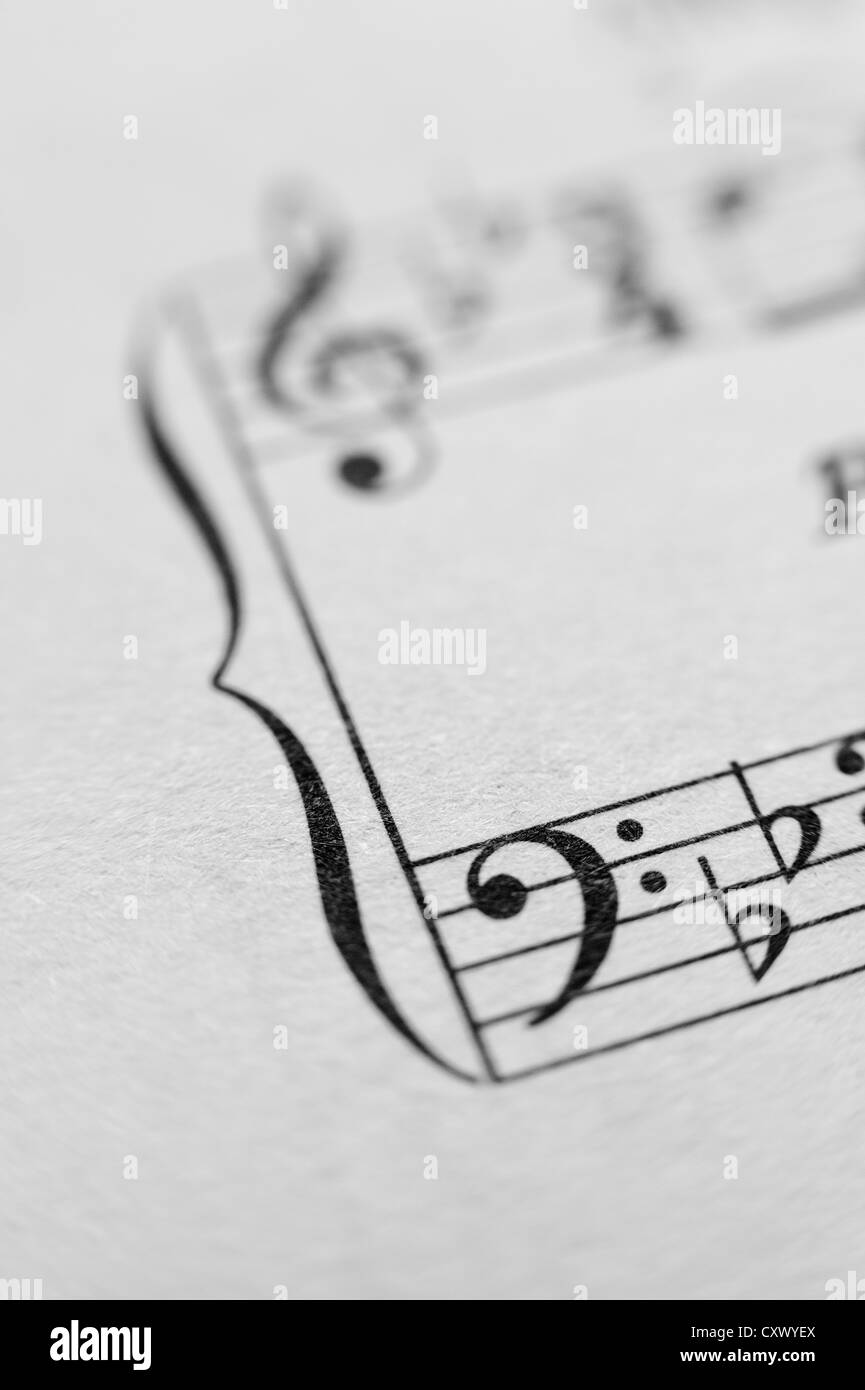 Music sheet notes score melody close up black white lines composition left right hands treble cleft printed on paper Stock Photohttps://www.alamy.com/image-license-details/?v=1https://www.alamy.com/stock-photo-music-sheet-notes-score-melody-close-up-black-white-lines-composition-50972178.html
Music sheet notes score melody close up black white lines composition left right hands treble cleft printed on paper Stock Photohttps://www.alamy.com/image-license-details/?v=1https://www.alamy.com/stock-photo-music-sheet-notes-score-melody-close-up-black-white-lines-composition-50972178.htmlRMCXWYEX–Music sheet notes score melody close up black white lines composition left right hands treble cleft printed on paper
 The letter E Stock Photohttps://www.alamy.com/image-license-details/?v=1https://www.alamy.com/stock-photo-the-letter-e-113816282.html
The letter E Stock Photohttps://www.alamy.com/image-license-details/?v=1https://www.alamy.com/stock-photo-the-letter-e-113816282.htmlRFGH4NR6–The letter E
 mouth harmonica cartoon vector illustration Stock Vectorhttps://www.alamy.com/image-license-details/?v=1https://www.alamy.com/mouth-harmonica-cartoon-vector-illustration-image629904311.html
mouth harmonica cartoon vector illustration Stock Vectorhttps://www.alamy.com/image-license-details/?v=1https://www.alamy.com/mouth-harmonica-cartoon-vector-illustration-image629904311.htmlRF2YGPHAF–mouth harmonica cartoon vector illustration
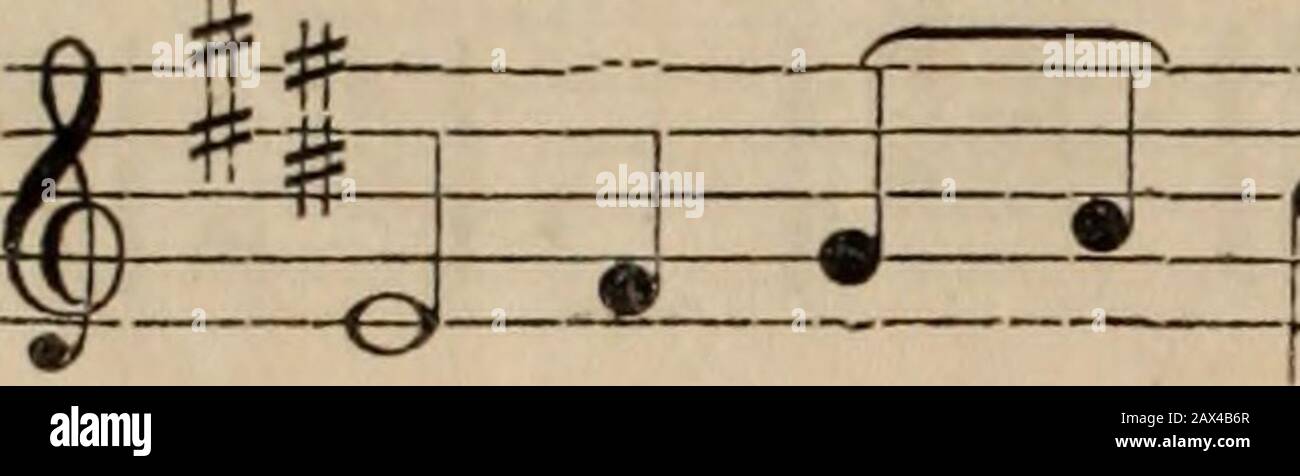 The Amateur's first book : or, The Flute without a master, containing an analysis of the rudiments of music, arranged on an entirely new system in progressive lessons . OF THE KEY OF E MAJOR. E is the next fifth above A, (our last key note.) Taking the same explanation of the diatonic scale, that we have made inthe preceding keys, we have already F, C, and G sharp; and having now E for our tonic, or key note, we find the first semi-tone in its place, between the 3d and 4th; but there is none between the 7th and 8th, until the D is made sharp. This s the4th sharp now added, and the scale will Stock Photohttps://www.alamy.com/image-license-details/?v=1https://www.alamy.com/the-amateurs-first-book-or-the-flute-without-a-master-containing-an-analysis-of-the-rudiments-of-music-arranged-on-an-entirely-new-system-in-progressive-lessons-of-the-key-of-e-major-e-is-the-next-fifth-above-a-our-last-key-note-taking-the-same-explanation-of-the-diatonic-scale-that-we-have-made-inthe-preceding-keys-we-have-already-f-c-and-g-sharp-and-having-now-e-for-our-tonic-or-key-note-we-find-the-first-semi-tone-in-its-place-between-the-3d-and-4th-but-there-is-none-between-the-7th-and-8th-until-the-d-is-made-sharp-this-s-the4th-sharp-now-added-and-the-scale-will-image343074671.html
The Amateur's first book : or, The Flute without a master, containing an analysis of the rudiments of music, arranged on an entirely new system in progressive lessons . OF THE KEY OF E MAJOR. E is the next fifth above A, (our last key note.) Taking the same explanation of the diatonic scale, that we have made inthe preceding keys, we have already F, C, and G sharp; and having now E for our tonic, or key note, we find the first semi-tone in its place, between the 3d and 4th; but there is none between the 7th and 8th, until the D is made sharp. This s the4th sharp now added, and the scale will Stock Photohttps://www.alamy.com/image-license-details/?v=1https://www.alamy.com/the-amateurs-first-book-or-the-flute-without-a-master-containing-an-analysis-of-the-rudiments-of-music-arranged-on-an-entirely-new-system-in-progressive-lessons-of-the-key-of-e-major-e-is-the-next-fifth-above-a-our-last-key-note-taking-the-same-explanation-of-the-diatonic-scale-that-we-have-made-inthe-preceding-keys-we-have-already-f-c-and-g-sharp-and-having-now-e-for-our-tonic-or-key-note-we-find-the-first-semi-tone-in-its-place-between-the-3d-and-4th-but-there-is-none-between-the-7th-and-8th-until-the-d-is-made-sharp-this-s-the4th-sharp-now-added-and-the-scale-will-image343074671.htmlRM2AX4B6R–The Amateur's first book : or, The Flute without a master, containing an analysis of the rudiments of music, arranged on an entirely new system in progressive lessons . OF THE KEY OF E MAJOR. E is the next fifth above A, (our last key note.) Taking the same explanation of the diatonic scale, that we have made inthe preceding keys, we have already F, C, and G sharp; and having now E for our tonic, or key note, we find the first semi-tone in its place, between the 3d and 4th; but there is none between the 7th and 8th, until the D is made sharp. This s the4th sharp now added, and the scale will
 Diatonic Xylophones used by students in school to learn about music and the art. Stock Photohttps://www.alamy.com/image-license-details/?v=1https://www.alamy.com/diatonic-xylophones-used-by-students-in-school-to-learn-about-music-and-the-art-image234718788.html
Diatonic Xylophones used by students in school to learn about music and the art. Stock Photohttps://www.alamy.com/image-license-details/?v=1https://www.alamy.com/diatonic-xylophones-used-by-students-in-school-to-learn-about-music-and-the-art-image234718788.htmlRFRHTA5T–Diatonic Xylophones used by students in school to learn about music and the art.
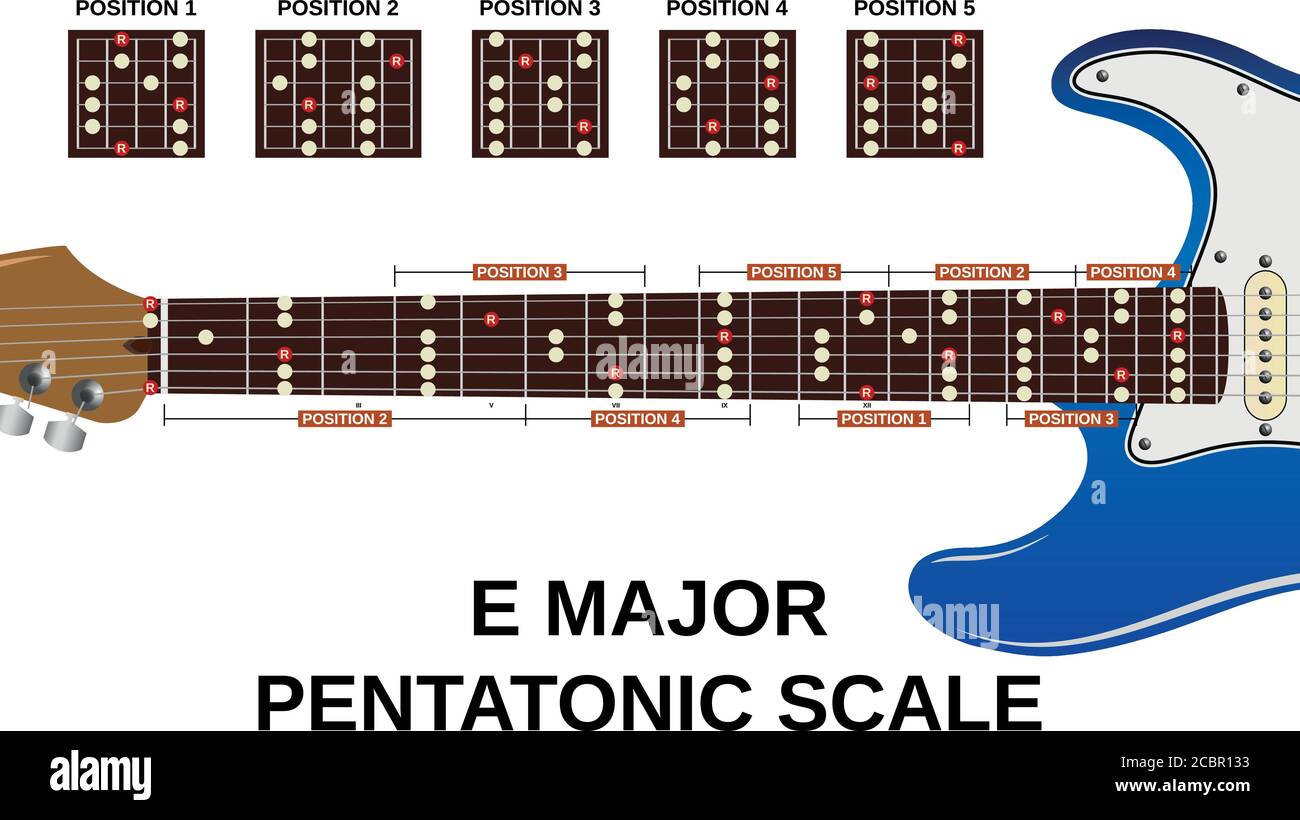 all five positons of e major pentatonic scale on electric guitar Stock Vectorhttps://www.alamy.com/image-license-details/?v=1https://www.alamy.com/all-five-positons-of-e-major-pentatonic-scale-on-electric-guitar-image368684711.html
all five positons of e major pentatonic scale on electric guitar Stock Vectorhttps://www.alamy.com/image-license-details/?v=1https://www.alamy.com/all-five-positons-of-e-major-pentatonic-scale-on-electric-guitar-image368684711.htmlRF2CBR133–all five positons of e major pentatonic scale on electric guitar
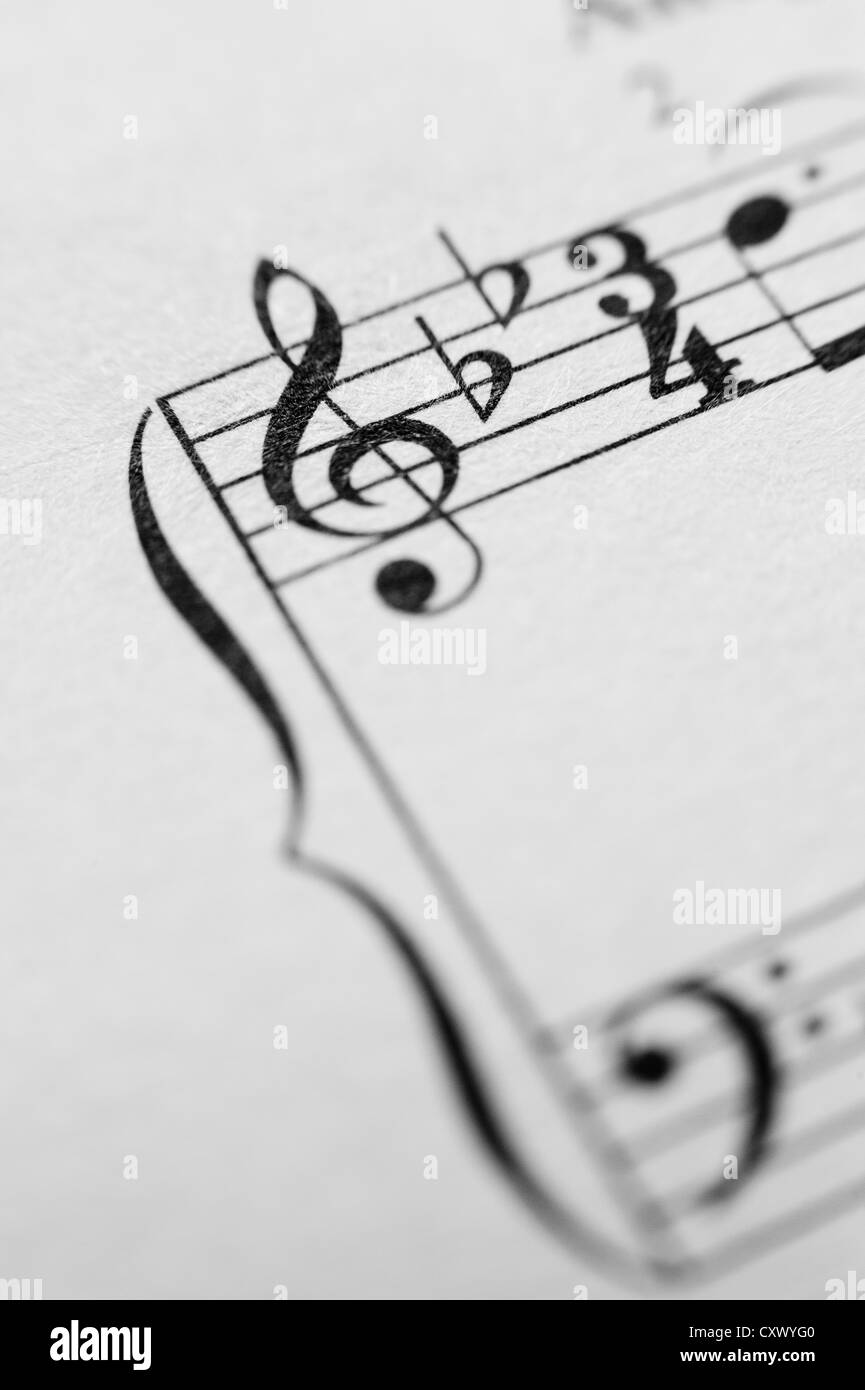 Music sheet notes score melody close up black white lines composition left right hands treble cleft printed on paper Stock Photohttps://www.alamy.com/image-license-details/?v=1https://www.alamy.com/stock-photo-music-sheet-notes-score-melody-close-up-black-white-lines-composition-50972208.html
Music sheet notes score melody close up black white lines composition left right hands treble cleft printed on paper Stock Photohttps://www.alamy.com/image-license-details/?v=1https://www.alamy.com/stock-photo-music-sheet-notes-score-melody-close-up-black-white-lines-composition-50972208.htmlRMCXWYG0–Music sheet notes score melody close up black white lines composition left right hands treble cleft printed on paper
 The letter A Stock Photohttps://www.alamy.com/image-license-details/?v=1https://www.alamy.com/stock-photo-the-letter-a-113816277.html
The letter A Stock Photohttps://www.alamy.com/image-license-details/?v=1https://www.alamy.com/stock-photo-the-letter-a-113816277.htmlRFGH4NR1–The letter A
 music harmonica cartoon vector illustration Stock Vectorhttps://www.alamy.com/image-license-details/?v=1https://www.alamy.com/music-harmonica-cartoon-vector-illustration-image629904214.html
music harmonica cartoon vector illustration Stock Vectorhttps://www.alamy.com/image-license-details/?v=1https://www.alamy.com/music-harmonica-cartoon-vector-illustration-image629904214.htmlRF2YGPH72–music harmonica cartoon vector illustration
 . Apollo's cabinet: or the muses delight an accurate collection of English and Italian songs, cantatas and duetts, set to music for the harpsichord, violin, German-flute, &c. tt> o to J> ££» *b o W CO v. fl^HSJfi T5 tO a- ^JfeH^^^iJggp^t^P^P 5*^ W Additional Flats and Sharps,in Order. KT The Inftruftions for the $a?p(tcf)0tD, &c. 43 £3* The Reafon why I call Flats or Sharps firft, fecond, third, iSc is, becaufeB being the fharpeft Note in the Diatonic Scale, E the next, and A the next, thefirft accidental Flat muft be on B, the fecond on E, &c. The fame holds good inreipeft to Sharps ; f Stock Photohttps://www.alamy.com/image-license-details/?v=1https://www.alamy.com/apollos-cabinet-or-the-muses-delight-an-accurate-collection-of-english-and-italian-songs-cantatas-and-duetts-set-to-music-for-the-harpsichord-violin-german-flute-c-ttgt-o-to-jgt-b-o-w-co-v-flhsjfi-t5-to-a-jfehijggptpp-5-w-additional-flats-and-sharpsin-order-kt-the-inftruftions-for-the-aptcf0td-c-43-3-the-reafon-why-i-call-flats-or-sharps-firft-fecond-third-isc-is-becaufeb-being-the-fharpeft-note-in-the-diatonic-scale-e-the-next-and-a-the-next-thefirft-accidental-flat-muft-be-on-b-the-fecond-on-e-c-the-fame-holds-good-inreipeft-to-sharps-f-image336809222.html
. Apollo's cabinet: or the muses delight an accurate collection of English and Italian songs, cantatas and duetts, set to music for the harpsichord, violin, German-flute, &c. tt> o to J> ££» *b o W CO v. fl^HSJfi T5 tO a- ^JfeH^^^iJggp^t^P^P 5*^ W Additional Flats and Sharps,in Order. KT The Inftruftions for the $a?p(tcf)0tD, &c. 43 £3* The Reafon why I call Flats or Sharps firft, fecond, third, iSc is, becaufeB being the fharpeft Note in the Diatonic Scale, E the next, and A the next, thefirft accidental Flat muft be on B, the fecond on E, &c. The fame holds good inreipeft to Sharps ; f Stock Photohttps://www.alamy.com/image-license-details/?v=1https://www.alamy.com/apollos-cabinet-or-the-muses-delight-an-accurate-collection-of-english-and-italian-songs-cantatas-and-duetts-set-to-music-for-the-harpsichord-violin-german-flute-c-ttgt-o-to-jgt-b-o-w-co-v-flhsjfi-t5-to-a-jfehijggptpp-5-w-additional-flats-and-sharpsin-order-kt-the-inftruftions-for-the-aptcf0td-c-43-3-the-reafon-why-i-call-flats-or-sharps-firft-fecond-third-isc-is-becaufeb-being-the-fharpeft-note-in-the-diatonic-scale-e-the-next-and-a-the-next-thefirft-accidental-flat-muft-be-on-b-the-fecond-on-e-c-the-fame-holds-good-inreipeft-to-sharps-f-image336809222.htmlRM2AFXYGP–. Apollo's cabinet: or the muses delight an accurate collection of English and Italian songs, cantatas and duetts, set to music for the harpsichord, violin, German-flute, &c. tt> o to J> ££» *b o W CO v. fl^HSJfi T5 tO a- ^JfeH^^^iJggp^t^P^P 5*^ W Additional Flats and Sharps,in Order. KT The Inftruftions for the $a?p(tcf)0tD, &c. 43 £3* The Reafon why I call Flats or Sharps firft, fecond, third, iSc is, becaufeB being the fharpeft Note in the Diatonic Scale, E the next, and A the next, thefirft accidental Flat muft be on B, the fecond on E, &c. The fame holds good inreipeft to Sharps ; f
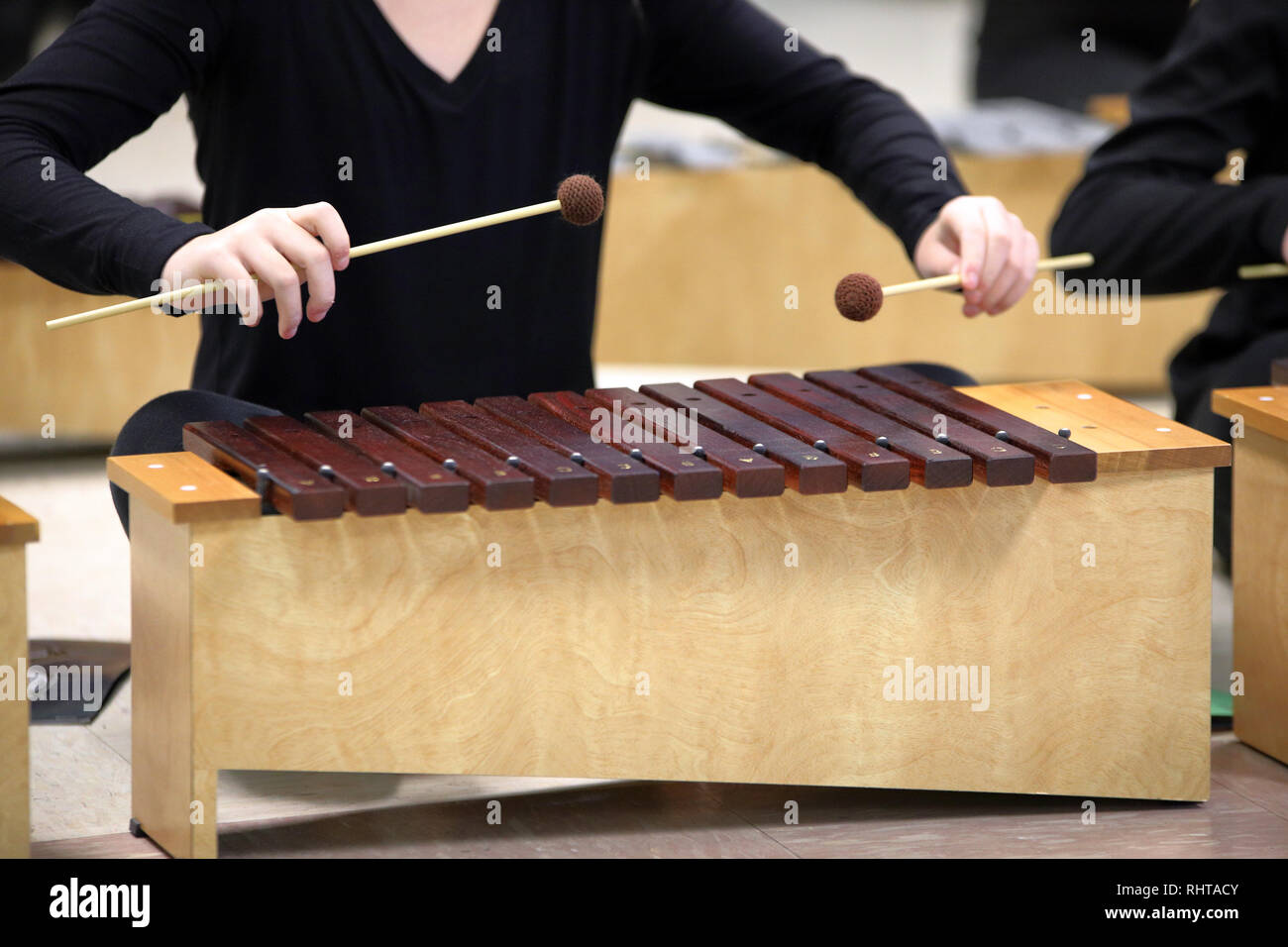 Student playing Diatonic Xylophone used by students in school to learn about music and the art. Stock Photohttps://www.alamy.com/image-license-details/?v=1https://www.alamy.com/student-playing-diatonic-xylophone-used-by-students-in-school-to-learn-about-music-and-the-art-image234718987.html
Student playing Diatonic Xylophone used by students in school to learn about music and the art. Stock Photohttps://www.alamy.com/image-license-details/?v=1https://www.alamy.com/student-playing-diatonic-xylophone-used-by-students-in-school-to-learn-about-music-and-the-art-image234718987.htmlRFRHTACY–Student playing Diatonic Xylophone used by students in school to learn about music and the art.
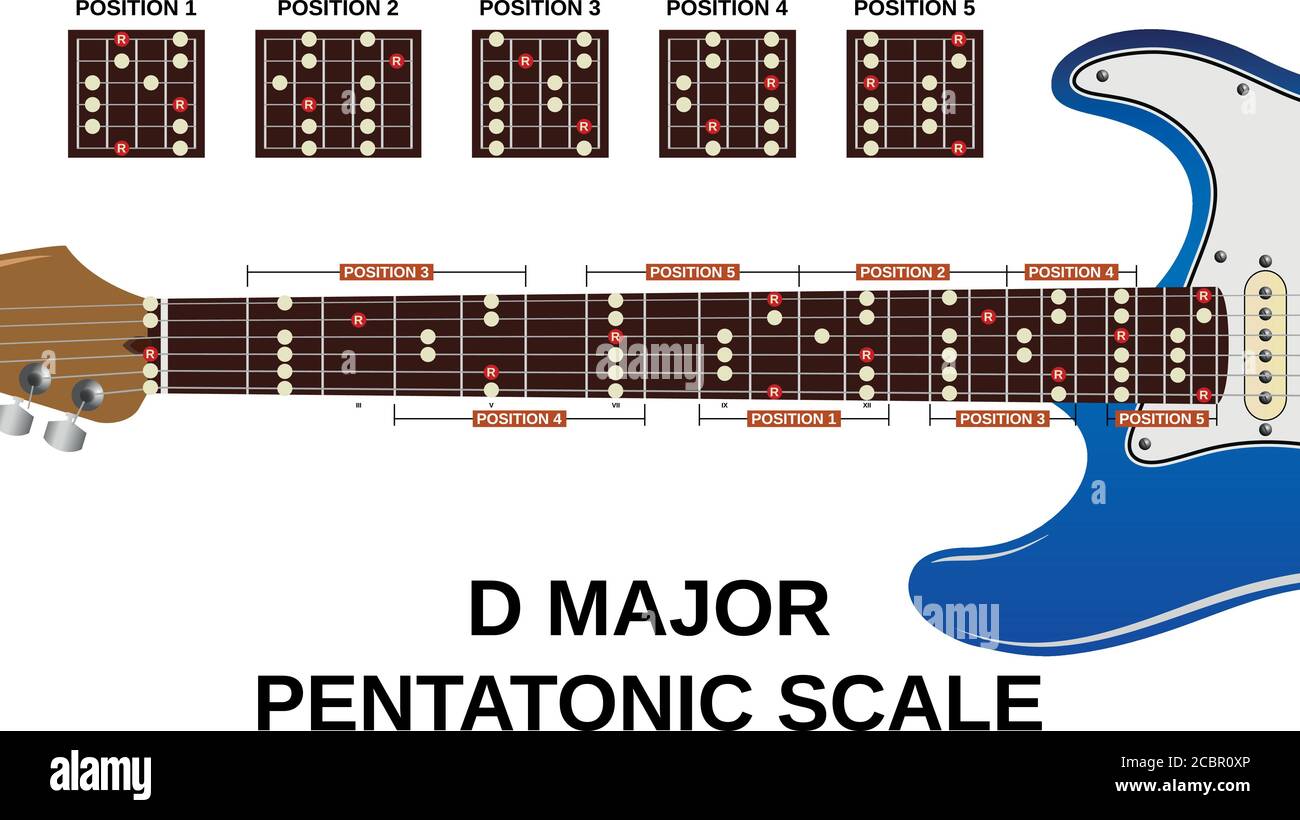 all five positons of d major pentatonic scale on electric guitar Stock Vectorhttps://www.alamy.com/image-license-details/?v=1https://www.alamy.com/all-five-positons-of-d-major-pentatonic-scale-on-electric-guitar-image368684590.html
all five positons of d major pentatonic scale on electric guitar Stock Vectorhttps://www.alamy.com/image-license-details/?v=1https://www.alamy.com/all-five-positons-of-d-major-pentatonic-scale-on-electric-guitar-image368684590.htmlRF2CBR0XP–all five positons of d major pentatonic scale on electric guitar
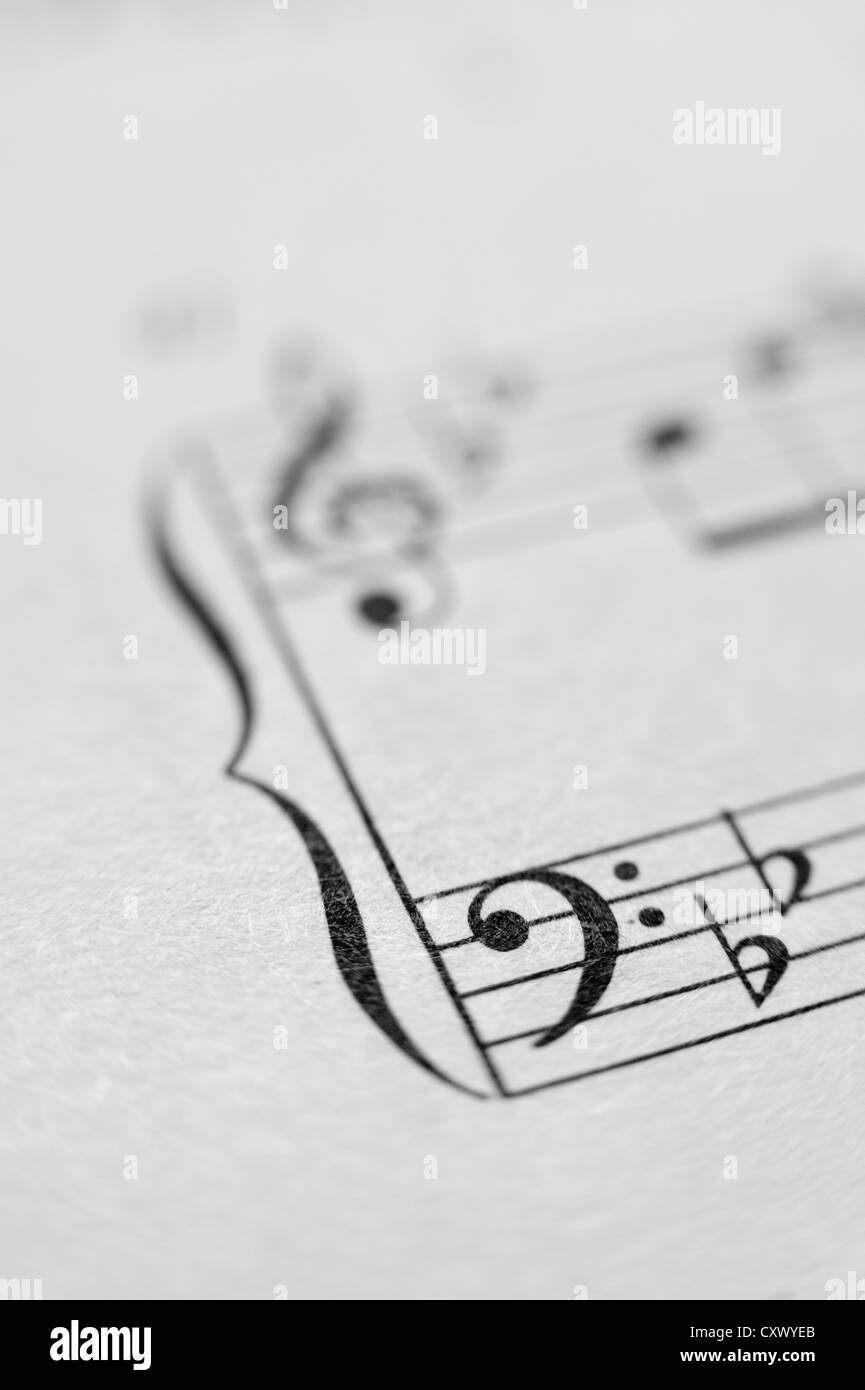 Music sheet notes score melody close up black white lines composition left right hands treble cleft printed on paper Stock Photohttps://www.alamy.com/image-license-details/?v=1https://www.alamy.com/stock-photo-music-sheet-notes-score-melody-close-up-black-white-lines-composition-50972163.html
Music sheet notes score melody close up black white lines composition left right hands treble cleft printed on paper Stock Photohttps://www.alamy.com/image-license-details/?v=1https://www.alamy.com/stock-photo-music-sheet-notes-score-melody-close-up-black-white-lines-composition-50972163.htmlRMCXWYEB–Music sheet notes score melody close up black white lines composition left right hands treble cleft printed on paper
 The letter D Stock Photohttps://www.alamy.com/image-license-details/?v=1https://www.alamy.com/stock-photo-the-letter-d-113816280.html
The letter D Stock Photohttps://www.alamy.com/image-license-details/?v=1https://www.alamy.com/stock-photo-the-letter-d-113816280.htmlRFGH4NR4–The letter D
 jazz harmonica cartoon vector illustration Stock Vectorhttps://www.alamy.com/image-license-details/?v=1https://www.alamy.com/jazz-harmonica-cartoon-vector-illustration-image629904280.html
jazz harmonica cartoon vector illustration Stock Vectorhttps://www.alamy.com/image-license-details/?v=1https://www.alamy.com/jazz-harmonica-cartoon-vector-illustration-image629904280.htmlRF2YGPH9C–jazz harmonica cartoon vector illustration
 . Modern orchestration and instrumentation : or, The art of instrumentation ; containing detailed descriptions of the character and peculiarities of all instruments and their practical employment. 52 KLINGS MODERN INSTRUMENTATION AND ORCHESTRATION.. The diatonic scale can be executed but isvery difficult; the chromatic should be entirelydispensed with. Modulation upon the Harp isbrought about in exactly the same manner as incompositions for the Pianoforte, but care must betaken to avoid a too frequent change of Keys, as this invariably requires an excellent Harpist,proficient in the use of bot Stock Photohttps://www.alamy.com/image-license-details/?v=1https://www.alamy.com/modern-orchestration-and-instrumentation-or-the-art-of-instrumentation-containing-detailed-descriptions-of-the-character-and-peculiarities-of-all-instruments-and-their-practical-employment-52-klings-modern-instrumentation-and-orchestration-the-diatonic-scale-can-be-executed-but-isvery-difficult-the-chromatic-should-be-entirelydispensed-with-modulation-upon-the-harp-isbrought-about-in-exactly-the-same-manner-as-incompositions-for-the-pianoforte-but-care-must-betaken-to-avoid-a-too-frequent-change-of-keys-as-this-invariably-requires-an-excellent-harpistproficient-in-the-use-of-bot-image370473309.html
. Modern orchestration and instrumentation : or, The art of instrumentation ; containing detailed descriptions of the character and peculiarities of all instruments and their practical employment. 52 KLINGS MODERN INSTRUMENTATION AND ORCHESTRATION.. The diatonic scale can be executed but isvery difficult; the chromatic should be entirelydispensed with. Modulation upon the Harp isbrought about in exactly the same manner as incompositions for the Pianoforte, but care must betaken to avoid a too frequent change of Keys, as this invariably requires an excellent Harpist,proficient in the use of bot Stock Photohttps://www.alamy.com/image-license-details/?v=1https://www.alamy.com/modern-orchestration-and-instrumentation-or-the-art-of-instrumentation-containing-detailed-descriptions-of-the-character-and-peculiarities-of-all-instruments-and-their-practical-employment-52-klings-modern-instrumentation-and-orchestration-the-diatonic-scale-can-be-executed-but-isvery-difficult-the-chromatic-should-be-entirelydispensed-with-modulation-upon-the-harp-isbrought-about-in-exactly-the-same-manner-as-incompositions-for-the-pianoforte-but-care-must-betaken-to-avoid-a-too-frequent-change-of-keys-as-this-invariably-requires-an-excellent-harpistproficient-in-the-use-of-bot-image370473309.htmlRM2CEMEDH–. Modern orchestration and instrumentation : or, The art of instrumentation ; containing detailed descriptions of the character and peculiarities of all instruments and their practical employment. 52 KLINGS MODERN INSTRUMENTATION AND ORCHESTRATION.. The diatonic scale can be executed but isvery difficult; the chromatic should be entirelydispensed with. Modulation upon the Harp isbrought about in exactly the same manner as incompositions for the Pianoforte, but care must betaken to avoid a too frequent change of Keys, as this invariably requires an excellent Harpist,proficient in the use of bot
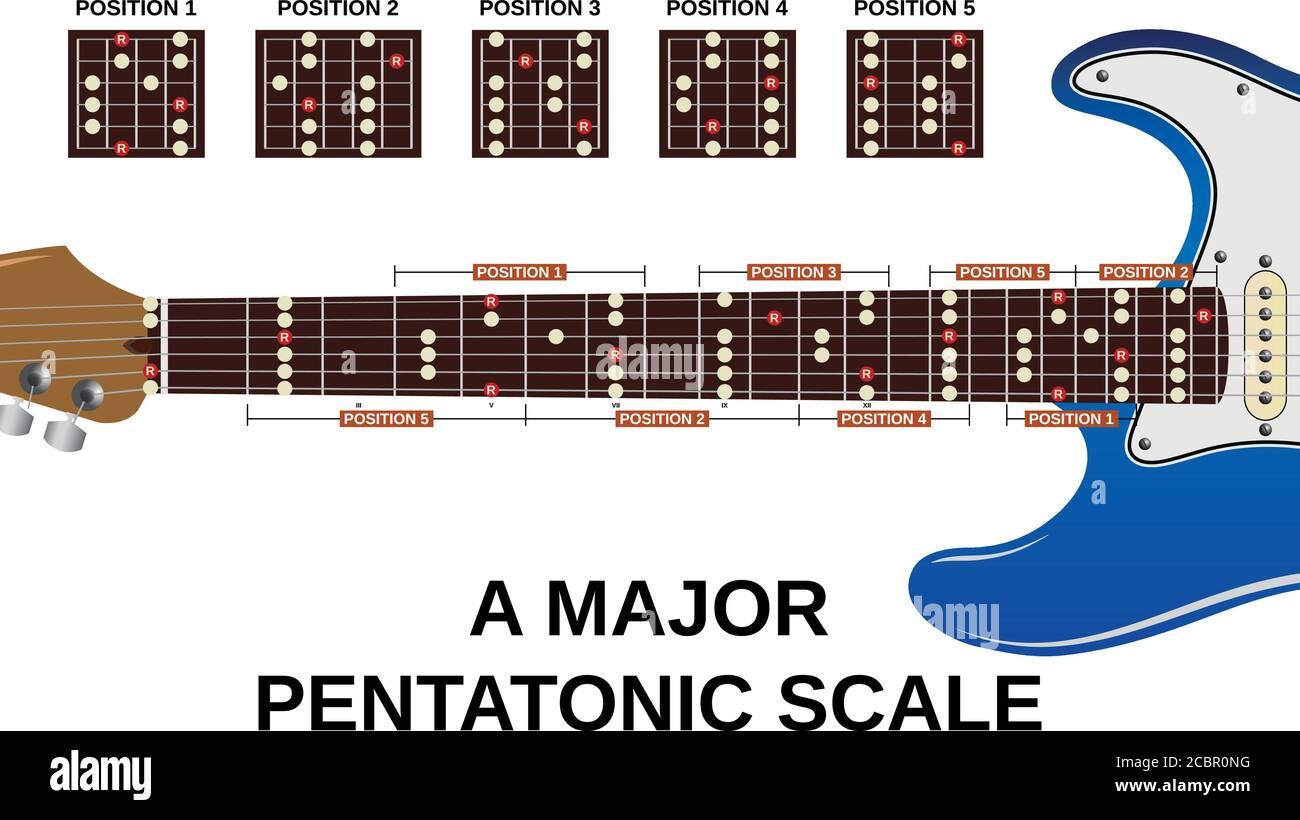 all five positons of a major pentatonic scale on electric guitar Stock Vectorhttps://www.alamy.com/image-license-details/?v=1https://www.alamy.com/all-five-positons-of-a-major-pentatonic-scale-on-electric-guitar-image368684444.html
all five positons of a major pentatonic scale on electric guitar Stock Vectorhttps://www.alamy.com/image-license-details/?v=1https://www.alamy.com/all-five-positons-of-a-major-pentatonic-scale-on-electric-guitar-image368684444.htmlRF2CBR0NG–all five positons of a major pentatonic scale on electric guitar
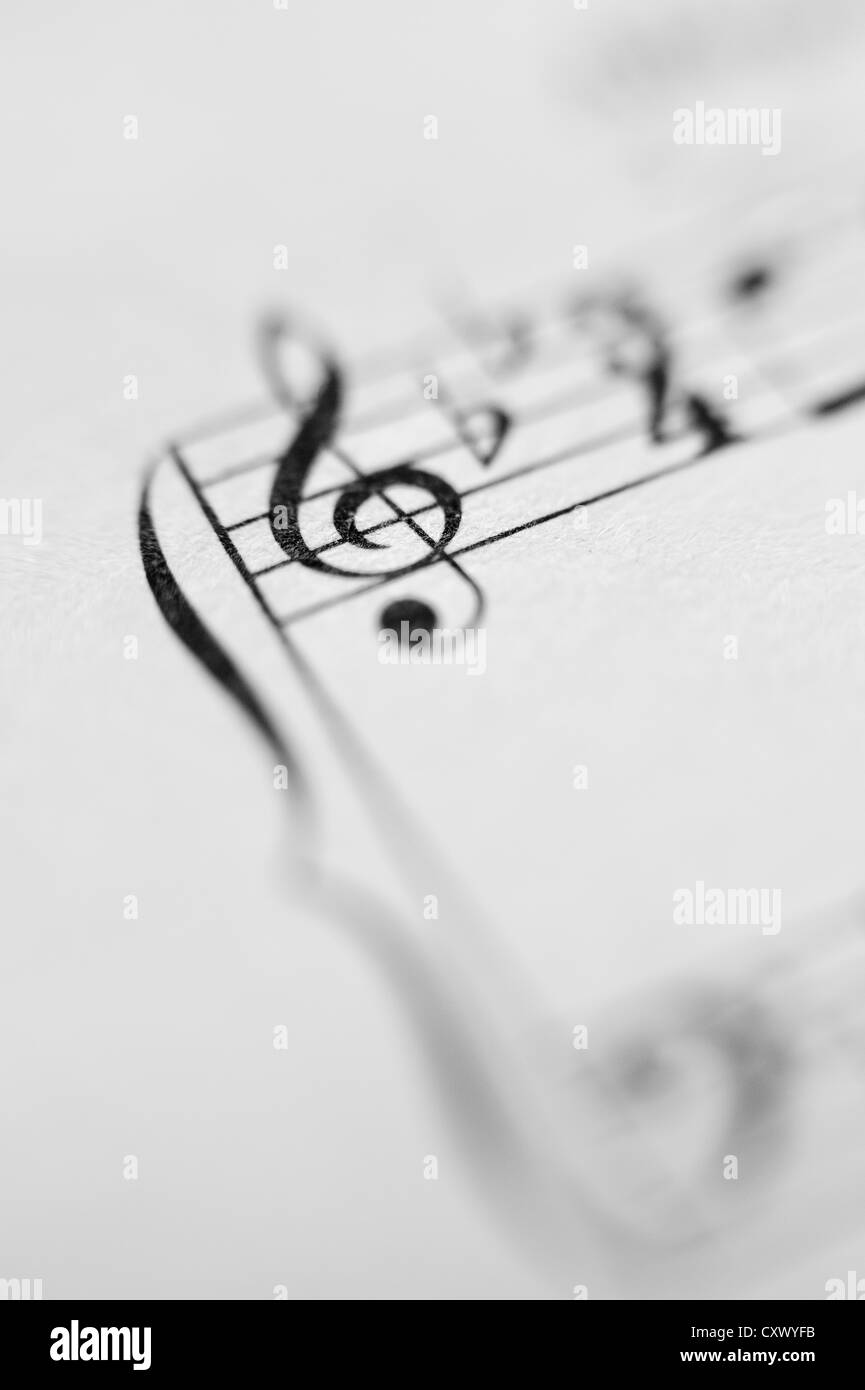 Music sheet notes score melody close up black white lines composition left right hands treble cleft printed on paper Stock Photohttps://www.alamy.com/image-license-details/?v=1https://www.alamy.com/stock-photo-music-sheet-notes-score-melody-close-up-black-white-lines-composition-50972191.html
Music sheet notes score melody close up black white lines composition left right hands treble cleft printed on paper Stock Photohttps://www.alamy.com/image-license-details/?v=1https://www.alamy.com/stock-photo-music-sheet-notes-score-melody-close-up-black-white-lines-composition-50972191.htmlRMCXWYFB–Music sheet notes score melody close up black white lines composition left right hands treble cleft printed on paper
 The letter F Stock Photohttps://www.alamy.com/image-license-details/?v=1https://www.alamy.com/stock-photo-the-letter-f-113816283.html
The letter F Stock Photohttps://www.alamy.com/image-license-details/?v=1https://www.alamy.com/stock-photo-the-letter-f-113816283.htmlRFGH4NR7–The letter F
 folk harmonica cartoon vector illustration Stock Vectorhttps://www.alamy.com/image-license-details/?v=1https://www.alamy.com/folk-harmonica-cartoon-vector-illustration-image629904167.html
folk harmonica cartoon vector illustration Stock Vectorhttps://www.alamy.com/image-license-details/?v=1https://www.alamy.com/folk-harmonica-cartoon-vector-illustration-image629904167.htmlRF2YGPH5B–folk harmonica cartoon vector illustration
 . Orchestration . chestra.It is done by taking a rapid group of notes—generally an upward butsometimes a downward diatonic scale—with the upper half of a singleup-bow. After each note a distinct stoppage of the bow is made, butthe whole scale is bracketted together, so to speak, into one brilliantwhole. Naturally this stroke demands very great skill on the part ofthe player. The capacity for its execution is, as Spohr says, in somedegree a natural gift. The Violin Schools of Bohemia, Hungary, andthe Latin countries, excel in this species of bowing, but in mixedorchestras the dangers in the way Stock Photohttps://www.alamy.com/image-license-details/?v=1https://www.alamy.com/orchestration-chestrait-is-done-by-taking-a-rapid-group-of-notesgenerally-an-upward-butsometimes-a-downward-diatonic-scalewith-the-upper-half-of-a-singleup-bow-after-each-note-a-distinct-stoppage-of-the-bow-is-made-butthe-whole-scale-is-bracketted-together-so-to-speak-into-one-brilliantwhole-naturally-this-stroke-demands-very-great-skill-on-the-part-ofthe-player-the-capacity-for-its-execution-is-as-spohr-says-in-somedegree-a-natural-gift-the-violin-schools-of-bohemia-hungary-andthe-latin-countries-excel-in-this-species-of-bowing-but-in-mixedorchestras-the-dangers-in-the-way-image369734236.html
. Orchestration . chestra.It is done by taking a rapid group of notes—generally an upward butsometimes a downward diatonic scale—with the upper half of a singleup-bow. After each note a distinct stoppage of the bow is made, butthe whole scale is bracketted together, so to speak, into one brilliantwhole. Naturally this stroke demands very great skill on the part ofthe player. The capacity for its execution is, as Spohr says, in somedegree a natural gift. The Violin Schools of Bohemia, Hungary, andthe Latin countries, excel in this species of bowing, but in mixedorchestras the dangers in the way Stock Photohttps://www.alamy.com/image-license-details/?v=1https://www.alamy.com/orchestration-chestrait-is-done-by-taking-a-rapid-group-of-notesgenerally-an-upward-butsometimes-a-downward-diatonic-scalewith-the-upper-half-of-a-singleup-bow-after-each-note-a-distinct-stoppage-of-the-bow-is-made-butthe-whole-scale-is-bracketted-together-so-to-speak-into-one-brilliantwhole-naturally-this-stroke-demands-very-great-skill-on-the-part-ofthe-player-the-capacity-for-its-execution-is-as-spohr-says-in-somedegree-a-natural-gift-the-violin-schools-of-bohemia-hungary-andthe-latin-countries-excel-in-this-species-of-bowing-but-in-mixedorchestras-the-dangers-in-the-way-image369734236.htmlRM2CDERP4–. Orchestration . chestra.It is done by taking a rapid group of notes—generally an upward butsometimes a downward diatonic scale—with the upper half of a singleup-bow. After each note a distinct stoppage of the bow is made, butthe whole scale is bracketted together, so to speak, into one brilliantwhole. Naturally this stroke demands very great skill on the part ofthe player. The capacity for its execution is, as Spohr says, in somedegree a natural gift. The Violin Schools of Bohemia, Hungary, andthe Latin countries, excel in this species of bowing, but in mixedorchestras the dangers in the way
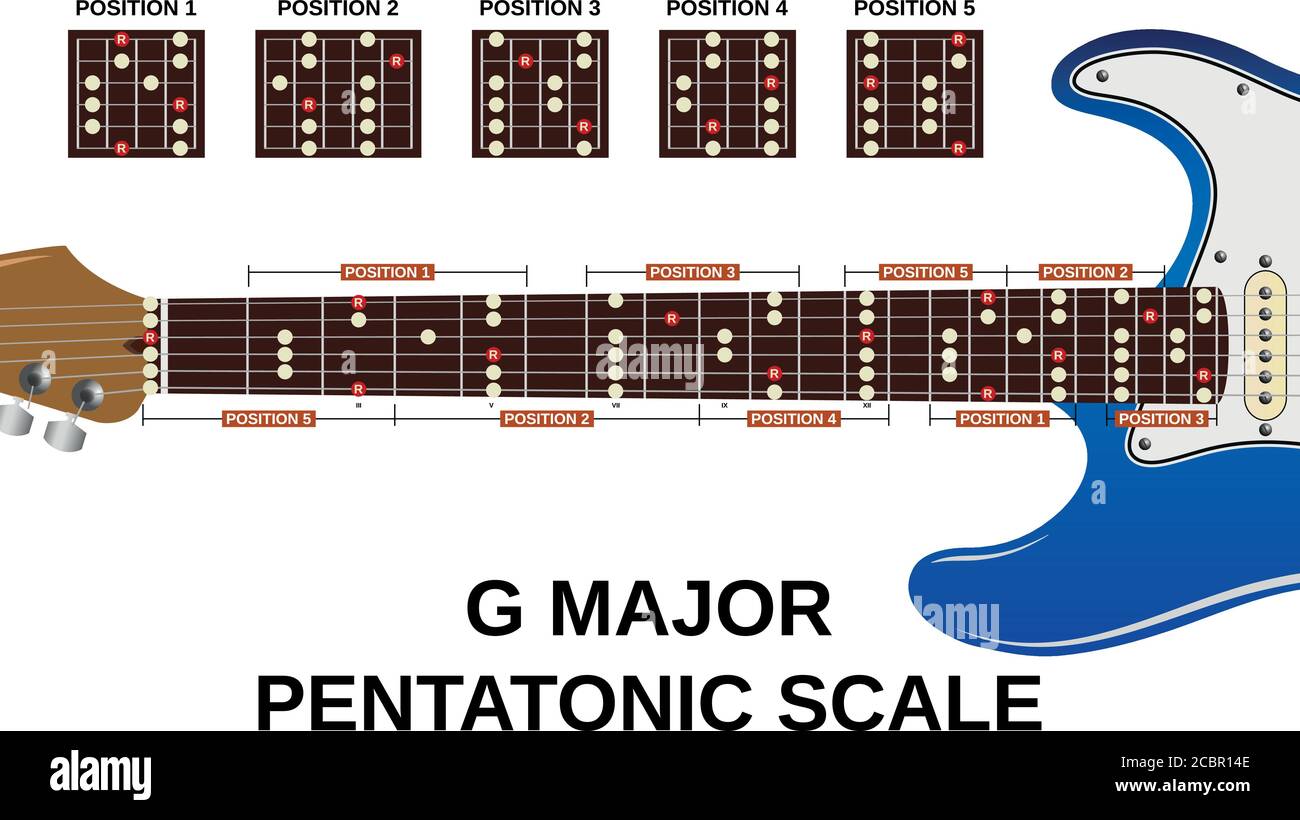 all five positons of g major pentatonic scale on electric guitar Stock Vectorhttps://www.alamy.com/image-license-details/?v=1https://www.alamy.com/all-five-positons-of-g-major-pentatonic-scale-on-electric-guitar-image368684750.html
all five positons of g major pentatonic scale on electric guitar Stock Vectorhttps://www.alamy.com/image-license-details/?v=1https://www.alamy.com/all-five-positons-of-g-major-pentatonic-scale-on-electric-guitar-image368684750.htmlRF2CBR14E–all five positons of g major pentatonic scale on electric guitar
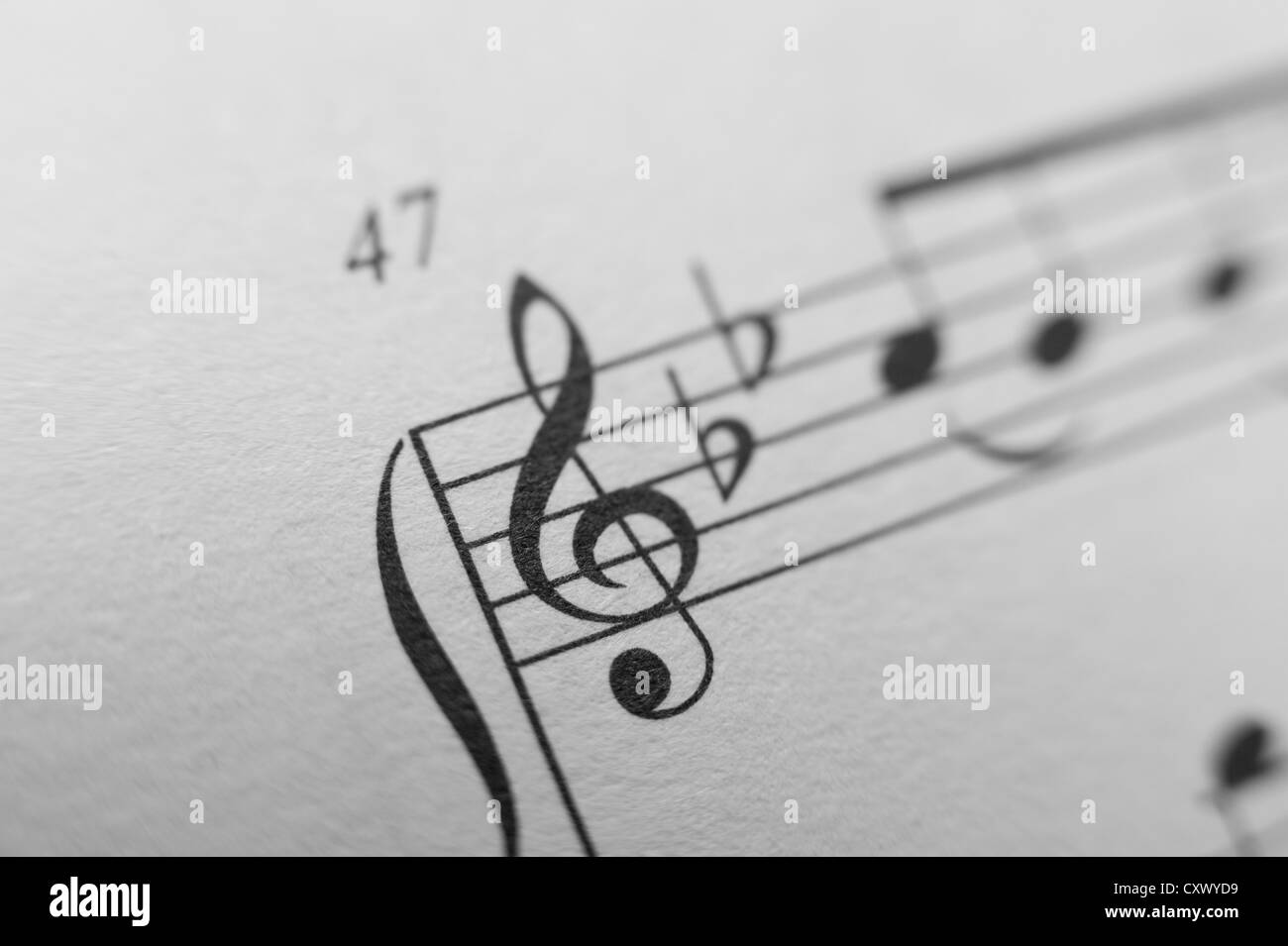 Music sheet notes score melody close up black white lines composition left right hands treble cleft printed on paper Stock Photohttps://www.alamy.com/image-license-details/?v=1https://www.alamy.com/stock-photo-music-sheet-notes-score-melody-close-up-black-white-lines-composition-50972133.html
Music sheet notes score melody close up black white lines composition left right hands treble cleft printed on paper Stock Photohttps://www.alamy.com/image-license-details/?v=1https://www.alamy.com/stock-photo-music-sheet-notes-score-melody-close-up-black-white-lines-composition-50972133.htmlRMCXWYD9–Music sheet notes score melody close up black white lines composition left right hands treble cleft printed on paper
 The letter C Stock Photohttps://www.alamy.com/image-license-details/?v=1https://www.alamy.com/stock-photo-the-letter-c-113816281.html
The letter C Stock Photohttps://www.alamy.com/image-license-details/?v=1https://www.alamy.com/stock-photo-the-letter-c-113816281.htmlRFGH4NR5–The letter C
 country harmonica cartoon vector illustration Stock Vectorhttps://www.alamy.com/image-license-details/?v=1https://www.alamy.com/country-harmonica-cartoon-vector-illustration-image629904429.html
country harmonica cartoon vector illustration Stock Vectorhttps://www.alamy.com/image-license-details/?v=1https://www.alamy.com/country-harmonica-cartoon-vector-illustration-image629904429.htmlRF2YGPHEN–country harmonica cartoon vector illustration
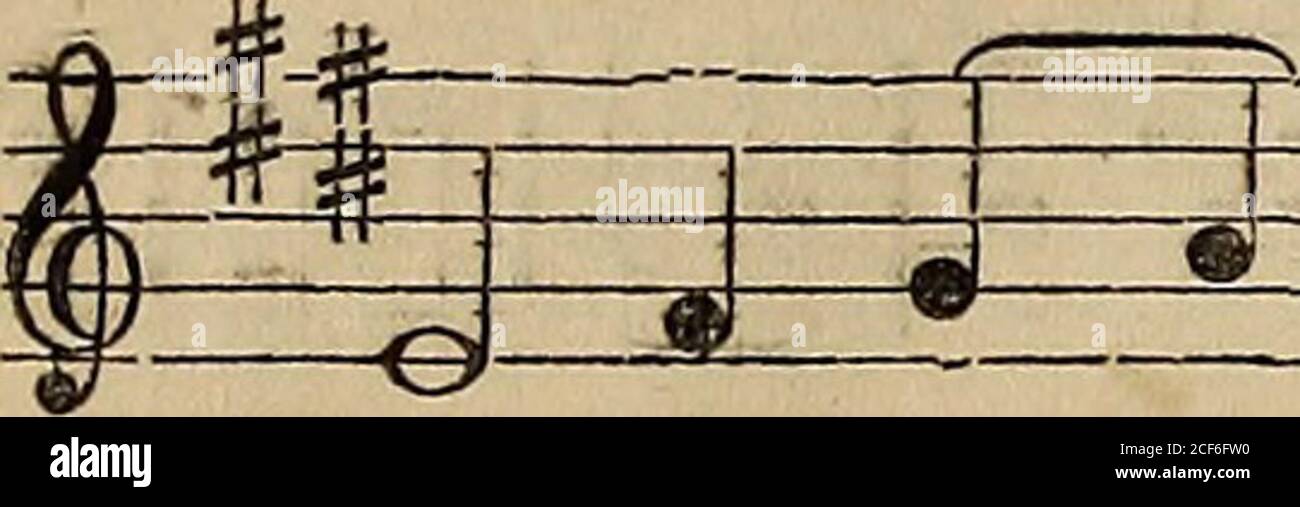 . The amateur's first book, or, The flute without a master : containing an analysis of the rudiments of music, arranged on an entirely new system in progressive lessons. OF THE KEY OF E MAJOR. E is the next fifth above A, (our last key note.) Taking the same explanation of the diatonic scale, that we have made inthe preceding keys, we have already F, C, and G sharp; and having now E for our tonic, or key note, we find the first semi-tone in its place, between the 3d and 4th; but there is none between the 7th and 8th, until the D is made sharp. This is the4th sharp now added, and the scale will Stock Photohttps://www.alamy.com/image-license-details/?v=1https://www.alamy.com/the-amateurs-first-book-or-the-flute-without-a-master-containing-an-analysis-of-the-rudiments-of-music-arranged-on-an-entirely-new-system-in-progressive-lessons-of-the-key-of-e-major-e-is-the-next-fifth-above-a-our-last-key-note-taking-the-same-explanation-of-the-diatonic-scale-that-we-have-made-inthe-preceding-keys-we-have-already-f-c-and-g-sharp-and-having-now-e-for-our-tonic-or-key-note-we-find-the-first-semi-tone-in-its-place-between-the-3d-and-4th-but-there-is-none-between-the-7th-and-8th-until-the-d-is-made-sharp-this-is-the4th-sharp-now-added-and-the-scale-will-image370781740.html
. The amateur's first book, or, The flute without a master : containing an analysis of the rudiments of music, arranged on an entirely new system in progressive lessons. OF THE KEY OF E MAJOR. E is the next fifth above A, (our last key note.) Taking the same explanation of the diatonic scale, that we have made inthe preceding keys, we have already F, C, and G sharp; and having now E for our tonic, or key note, we find the first semi-tone in its place, between the 3d and 4th; but there is none between the 7th and 8th, until the D is made sharp. This is the4th sharp now added, and the scale will Stock Photohttps://www.alamy.com/image-license-details/?v=1https://www.alamy.com/the-amateurs-first-book-or-the-flute-without-a-master-containing-an-analysis-of-the-rudiments-of-music-arranged-on-an-entirely-new-system-in-progressive-lessons-of-the-key-of-e-major-e-is-the-next-fifth-above-a-our-last-key-note-taking-the-same-explanation-of-the-diatonic-scale-that-we-have-made-inthe-preceding-keys-we-have-already-f-c-and-g-sharp-and-having-now-e-for-our-tonic-or-key-note-we-find-the-first-semi-tone-in-its-place-between-the-3d-and-4th-but-there-is-none-between-the-7th-and-8th-until-the-d-is-made-sharp-this-is-the4th-sharp-now-added-and-the-scale-will-image370781740.htmlRM2CF6FW0–. The amateur's first book, or, The flute without a master : containing an analysis of the rudiments of music, arranged on an entirely new system in progressive lessons. OF THE KEY OF E MAJOR. E is the next fifth above A, (our last key note.) Taking the same explanation of the diatonic scale, that we have made inthe preceding keys, we have already F, C, and G sharp; and having now E for our tonic, or key note, we find the first semi-tone in its place, between the 3d and 4th; but there is none between the 7th and 8th, until the D is made sharp. This is the4th sharp now added, and the scale will
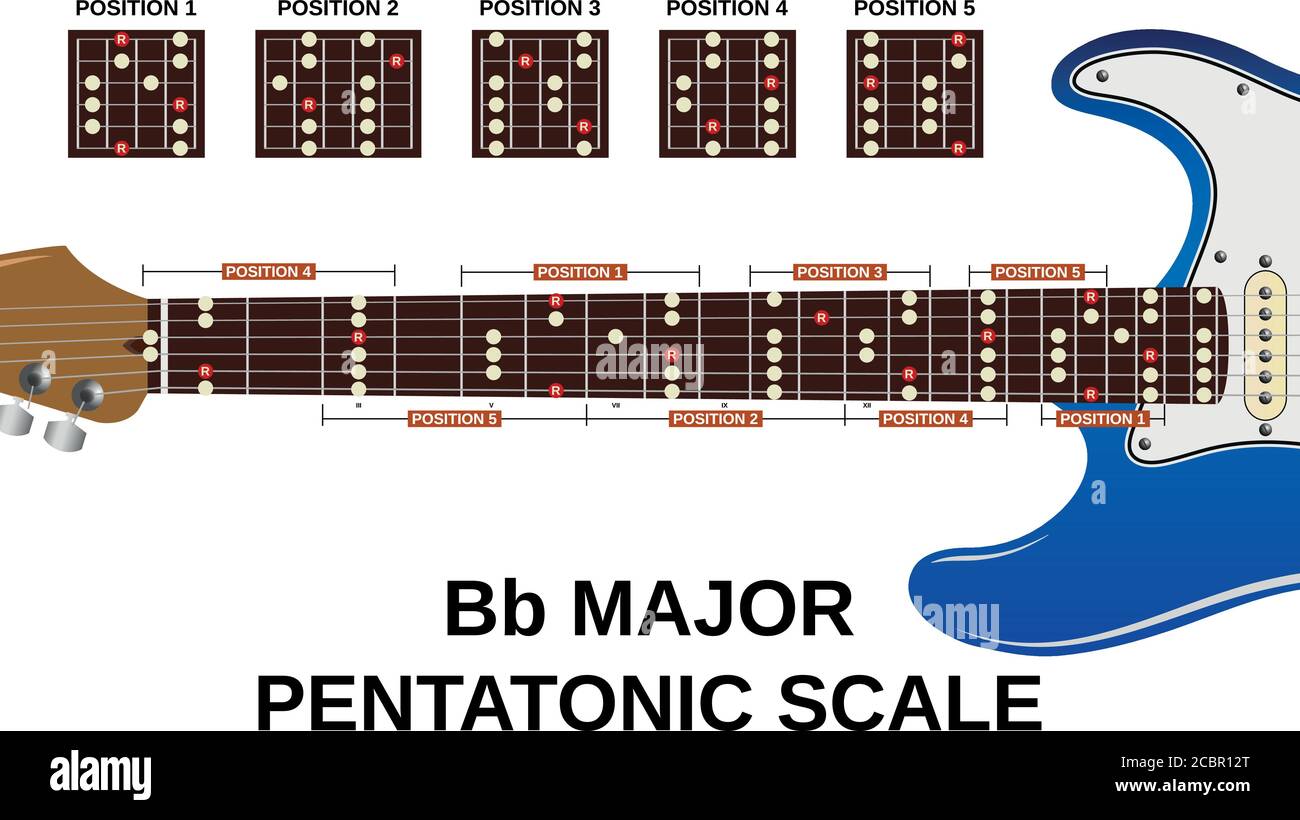 all five positons of b flat major pentatonic scale on electric guitar Stock Vectorhttps://www.alamy.com/image-license-details/?v=1https://www.alamy.com/all-five-positons-of-b-flat-major-pentatonic-scale-on-electric-guitar-image368684704.html
all five positons of b flat major pentatonic scale on electric guitar Stock Vectorhttps://www.alamy.com/image-license-details/?v=1https://www.alamy.com/all-five-positons-of-b-flat-major-pentatonic-scale-on-electric-guitar-image368684704.htmlRF2CBR12T–all five positons of b flat major pentatonic scale on electric guitar
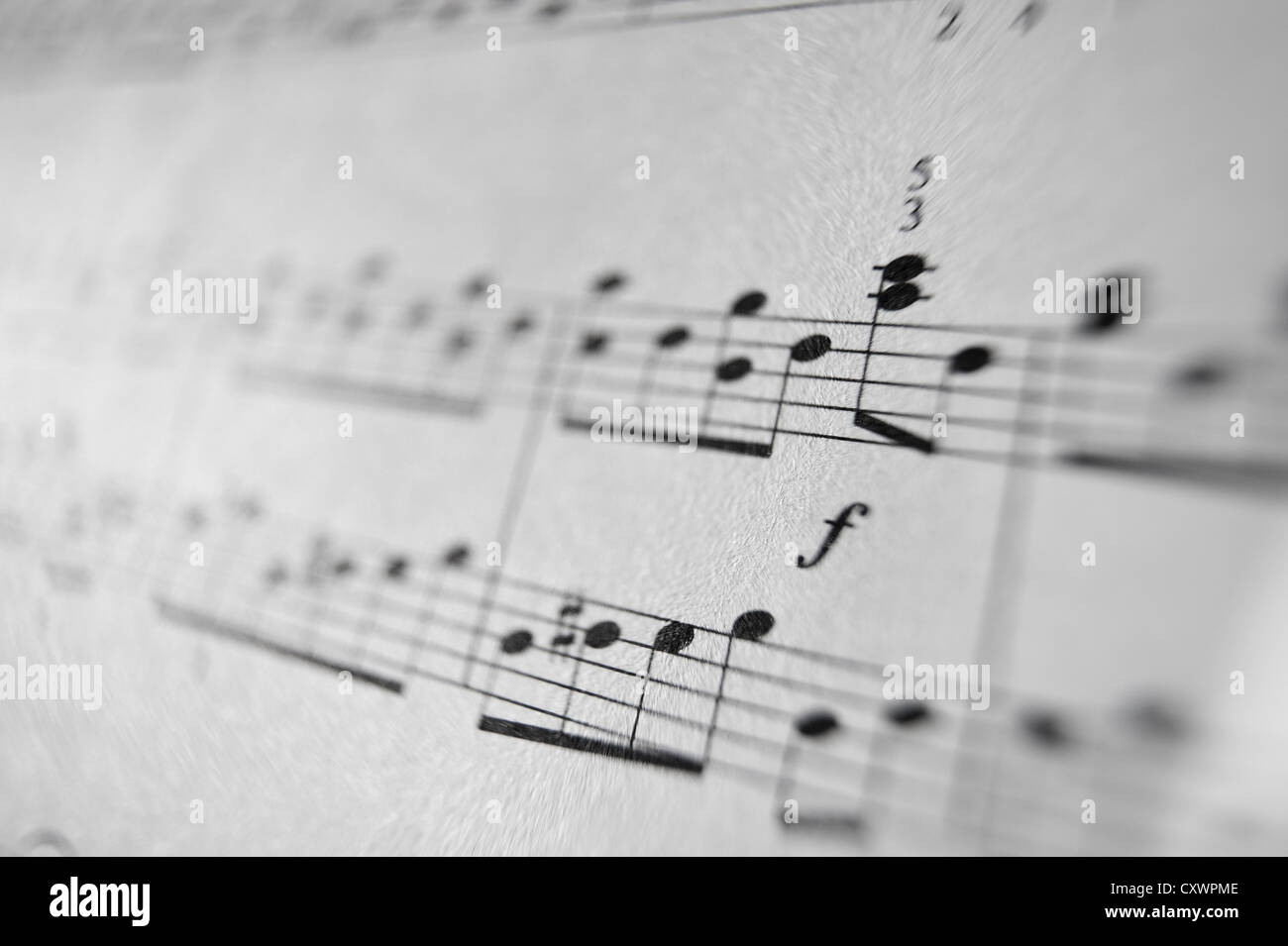 Music sheet notes score melody close up black white lines composition left right hands treble cleft printed on paper Stock Photohttps://www.alamy.com/image-license-details/?v=1https://www.alamy.com/stock-photo-music-sheet-notes-score-melody-close-up-black-white-lines-composition-50968414.html
Music sheet notes score melody close up black white lines composition left right hands treble cleft printed on paper Stock Photohttps://www.alamy.com/image-license-details/?v=1https://www.alamy.com/stock-photo-music-sheet-notes-score-melody-close-up-black-white-lines-composition-50968414.htmlRMCXWPME–Music sheet notes score melody close up black white lines composition left right hands treble cleft printed on paper
 notes harmonica cartoon vector illustration Stock Vectorhttps://www.alamy.com/image-license-details/?v=1https://www.alamy.com/notes-harmonica-cartoon-vector-illustration-image629904325.html
notes harmonica cartoon vector illustration Stock Vectorhttps://www.alamy.com/image-license-details/?v=1https://www.alamy.com/notes-harmonica-cartoon-vector-illustration-image629904325.htmlRF2YGPHB1–notes harmonica cartoon vector illustration
 . A treatise on harmony, with exercises . THE MAJOR DIATONIC SCALE(Pages 15-16) 1. Pitch, force and quality (§1). 2. Diatonic — a scale in which tones and semitones occur.Chromatic— a scale in which semitones only, occur.Enharmonic — a scale in which the sounds are less than a semitone apart; it is, therefore, not used in Harmony (§2). The term enharmonic, indicating change of name withoutchange of pitch, is employed for a scale, reference to which will befound on page 37. 3. The principal use of the tetrachord is in connection withthe formation of new scales. Any major scale may be formed fro Stock Photohttps://www.alamy.com/image-license-details/?v=1https://www.alamy.com/a-treatise-on-harmony-with-exercises-the-major-diatonic-scalepages-15-16-1-pitch-force-and-quality-1-2-diatonic-a-scale-in-which-tones-and-semitones-occurchromatic-a-scale-in-which-semitones-only-occurenharmonic-a-scale-in-which-the-sounds-are-less-than-a-semitone-apart-it-is-therefore-not-used-in-harmony-2-the-term-enharmonic-indicating-change-of-name-withoutchange-of-pitch-is-employed-for-a-scale-reference-to-which-will-befound-on-page-37-3-the-principal-use-of-the-tetrachord-is-in-connection-withthe-formation-of-new-scales-any-major-scale-may-be-formed-fro-image370046782.html
. A treatise on harmony, with exercises . THE MAJOR DIATONIC SCALE(Pages 15-16) 1. Pitch, force and quality (§1). 2. Diatonic — a scale in which tones and semitones occur.Chromatic— a scale in which semitones only, occur.Enharmonic — a scale in which the sounds are less than a semitone apart; it is, therefore, not used in Harmony (§2). The term enharmonic, indicating change of name withoutchange of pitch, is employed for a scale, reference to which will befound on page 37. 3. The principal use of the tetrachord is in connection withthe formation of new scales. Any major scale may be formed fro Stock Photohttps://www.alamy.com/image-license-details/?v=1https://www.alamy.com/a-treatise-on-harmony-with-exercises-the-major-diatonic-scalepages-15-16-1-pitch-force-and-quality-1-2-diatonic-a-scale-in-which-tones-and-semitones-occurchromatic-a-scale-in-which-semitones-only-occurenharmonic-a-scale-in-which-the-sounds-are-less-than-a-semitone-apart-it-is-therefore-not-used-in-harmony-2-the-term-enharmonic-indicating-change-of-name-withoutchange-of-pitch-is-employed-for-a-scale-reference-to-which-will-befound-on-page-37-3-the-principal-use-of-the-tetrachord-is-in-connection-withthe-formation-of-new-scales-any-major-scale-may-be-formed-fro-image370046782.htmlRM2CE12CE–. A treatise on harmony, with exercises . THE MAJOR DIATONIC SCALE(Pages 15-16) 1. Pitch, force and quality (§1). 2. Diatonic — a scale in which tones and semitones occur.Chromatic— a scale in which semitones only, occur.Enharmonic — a scale in which the sounds are less than a semitone apart; it is, therefore, not used in Harmony (§2). The term enharmonic, indicating change of name withoutchange of pitch, is employed for a scale, reference to which will befound on page 37. 3. The principal use of the tetrachord is in connection withthe formation of new scales. Any major scale may be formed fro
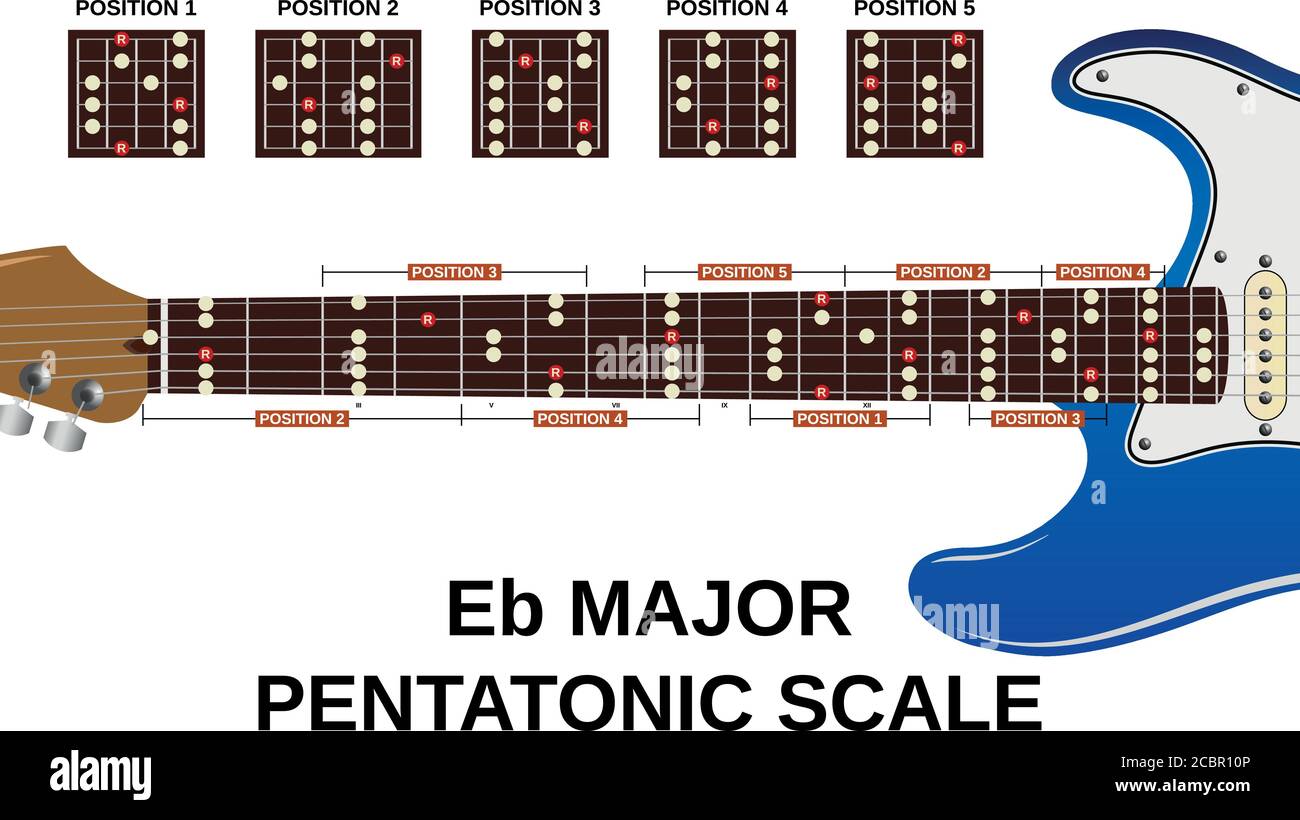 all five positons of e flat major pentatonic scale on electric guitar Stock Vectorhttps://www.alamy.com/image-license-details/?v=1https://www.alamy.com/all-five-positons-of-e-flat-major-pentatonic-scale-on-electric-guitar-image368684646.html
all five positons of e flat major pentatonic scale on electric guitar Stock Vectorhttps://www.alamy.com/image-license-details/?v=1https://www.alamy.com/all-five-positons-of-e-flat-major-pentatonic-scale-on-electric-guitar-image368684646.htmlRF2CBR10P–all five positons of e flat major pentatonic scale on electric guitar
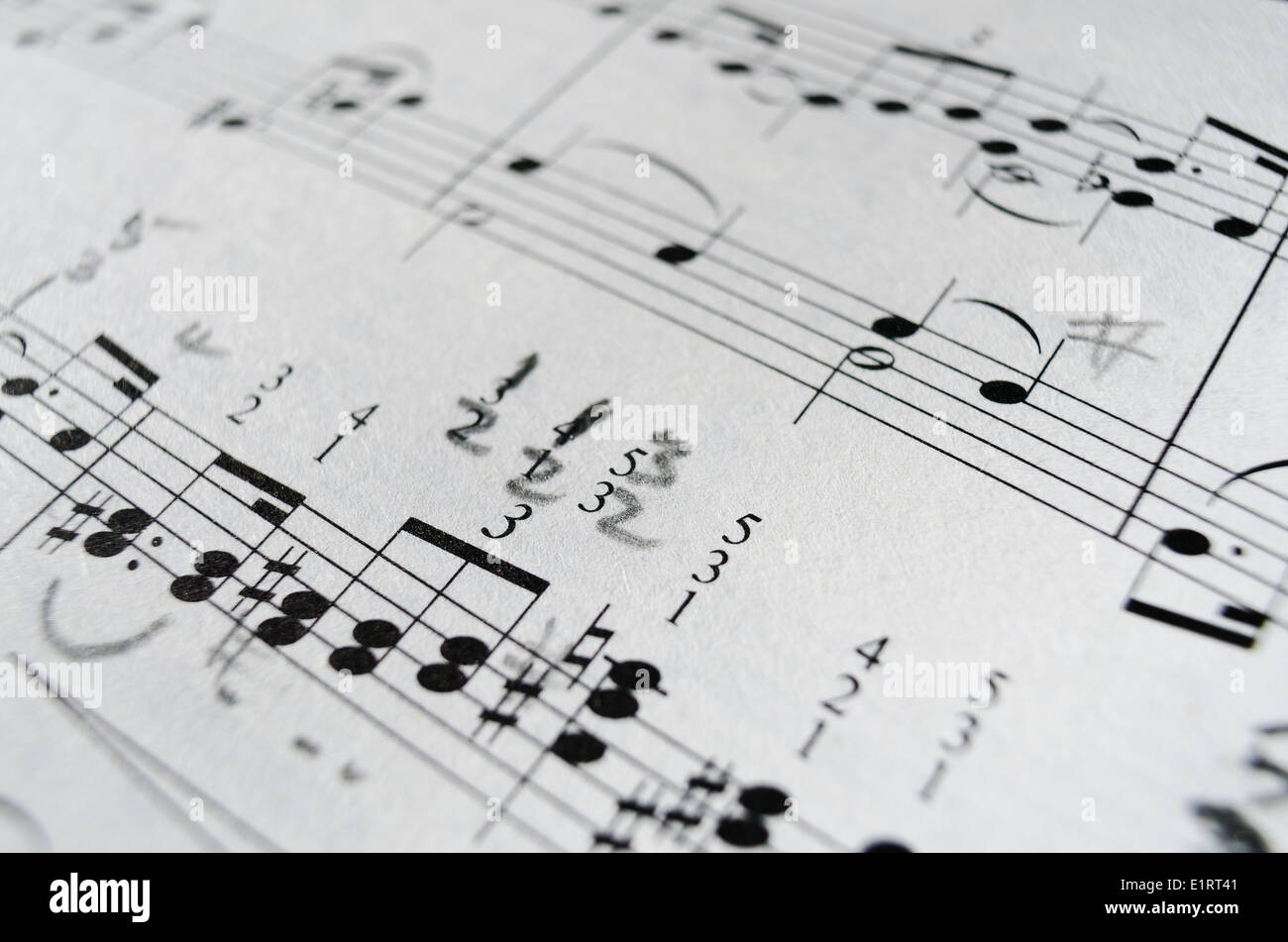 Music sheet notes score melody close up black white lines composition left right hands treble cleft printed on paper Stock Photohttps://www.alamy.com/image-license-details/?v=1https://www.alamy.com/music-sheet-notes-score-melody-close-up-black-white-lines-composition-image69979953.html
Music sheet notes score melody close up black white lines composition left right hands treble cleft printed on paper Stock Photohttps://www.alamy.com/image-license-details/?v=1https://www.alamy.com/music-sheet-notes-score-melody-close-up-black-white-lines-composition-image69979953.htmlRME1RT41–Music sheet notes score melody close up black white lines composition left right hands treble cleft printed on paper
 melody harmonica cartoon vector illustration Stock Vectorhttps://www.alamy.com/image-license-details/?v=1https://www.alamy.com/melody-harmonica-cartoon-vector-illustration-image629904373.html
melody harmonica cartoon vector illustration Stock Vectorhttps://www.alamy.com/image-license-details/?v=1https://www.alamy.com/melody-harmonica-cartoon-vector-illustration-image629904373.htmlRF2YGPHCN–melody harmonica cartoon vector illustration
 . Baltimore and Ohio employees magazine . lof the Greek Alphabet. 8— The seventh note in the diatonic[scale. 9— A letter. Baltimore, Md. L. E. Phant No. 12, INVERTED PYRAMIDAcross: 1— (Norse Myth.) The world tree whoseroots and branches bind together heaven,the earth and hell. 2— Changes the circulating fluids of ani-mals by means of air. 3— (Australia) A Kangaroo, the pademelon. 4— A well known forest tree. 5— A letter.Down: 1— A letter. 2— (Dial, and obs.) to go. 3— A precious stone. 4— To suffer (Scotch). 5— To call together. 6— One of the indivisible parts of whichall matter is supposed to Stock Photohttps://www.alamy.com/image-license-details/?v=1https://www.alamy.com/baltimore-and-ohio-employees-magazine-lof-the-greek-alphabet-8-the-seventh-note-in-the-diatonic-scale-9-a-letter-baltimore-md-l-e-phant-no-12-inverted-pyramidacross-1-norse-myth-the-world-tree-whoseroots-and-branches-bind-together-heaventhe-earth-and-hell-2-changes-the-circulating-fluids-of-ani-mals-by-means-of-air-3-australia-a-kangaroo-the-pademelon-4-a-well-known-forest-tree-5-a-letterdown-1-a-letter-2-dial-and-obs-to-go-3-a-precious-stone-4-to-suffer-scotch-5-to-call-together-6-one-of-the-indivisible-parts-of-whichall-matter-is-supposed-to-image374873839.html
. Baltimore and Ohio employees magazine . lof the Greek Alphabet. 8— The seventh note in the diatonic[scale. 9— A letter. Baltimore, Md. L. E. Phant No. 12, INVERTED PYRAMIDAcross: 1— (Norse Myth.) The world tree whoseroots and branches bind together heaven,the earth and hell. 2— Changes the circulating fluids of ani-mals by means of air. 3— (Australia) A Kangaroo, the pademelon. 4— A well known forest tree. 5— A letter.Down: 1— A letter. 2— (Dial, and obs.) to go. 3— A precious stone. 4— To suffer (Scotch). 5— To call together. 6— One of the indivisible parts of whichall matter is supposed to Stock Photohttps://www.alamy.com/image-license-details/?v=1https://www.alamy.com/baltimore-and-ohio-employees-magazine-lof-the-greek-alphabet-8-the-seventh-note-in-the-diatonic-scale-9-a-letter-baltimore-md-l-e-phant-no-12-inverted-pyramidacross-1-norse-myth-the-world-tree-whoseroots-and-branches-bind-together-heaventhe-earth-and-hell-2-changes-the-circulating-fluids-of-ani-mals-by-means-of-air-3-australia-a-kangaroo-the-pademelon-4-a-well-known-forest-tree-5-a-letterdown-1-a-letter-2-dial-and-obs-to-go-3-a-precious-stone-4-to-suffer-scotch-5-to-call-together-6-one-of-the-indivisible-parts-of-whichall-matter-is-supposed-to-image374873839.htmlRM2CNTYBB–. Baltimore and Ohio employees magazine . lof the Greek Alphabet. 8— The seventh note in the diatonic[scale. 9— A letter. Baltimore, Md. L. E. Phant No. 12, INVERTED PYRAMIDAcross: 1— (Norse Myth.) The world tree whoseroots and branches bind together heaven,the earth and hell. 2— Changes the circulating fluids of ani-mals by means of air. 3— (Australia) A Kangaroo, the pademelon. 4— A well known forest tree. 5— A letter.Down: 1— A letter. 2— (Dial, and obs.) to go. 3— A precious stone. 4— To suffer (Scotch). 5— To call together. 6— One of the indivisible parts of whichall matter is supposed to
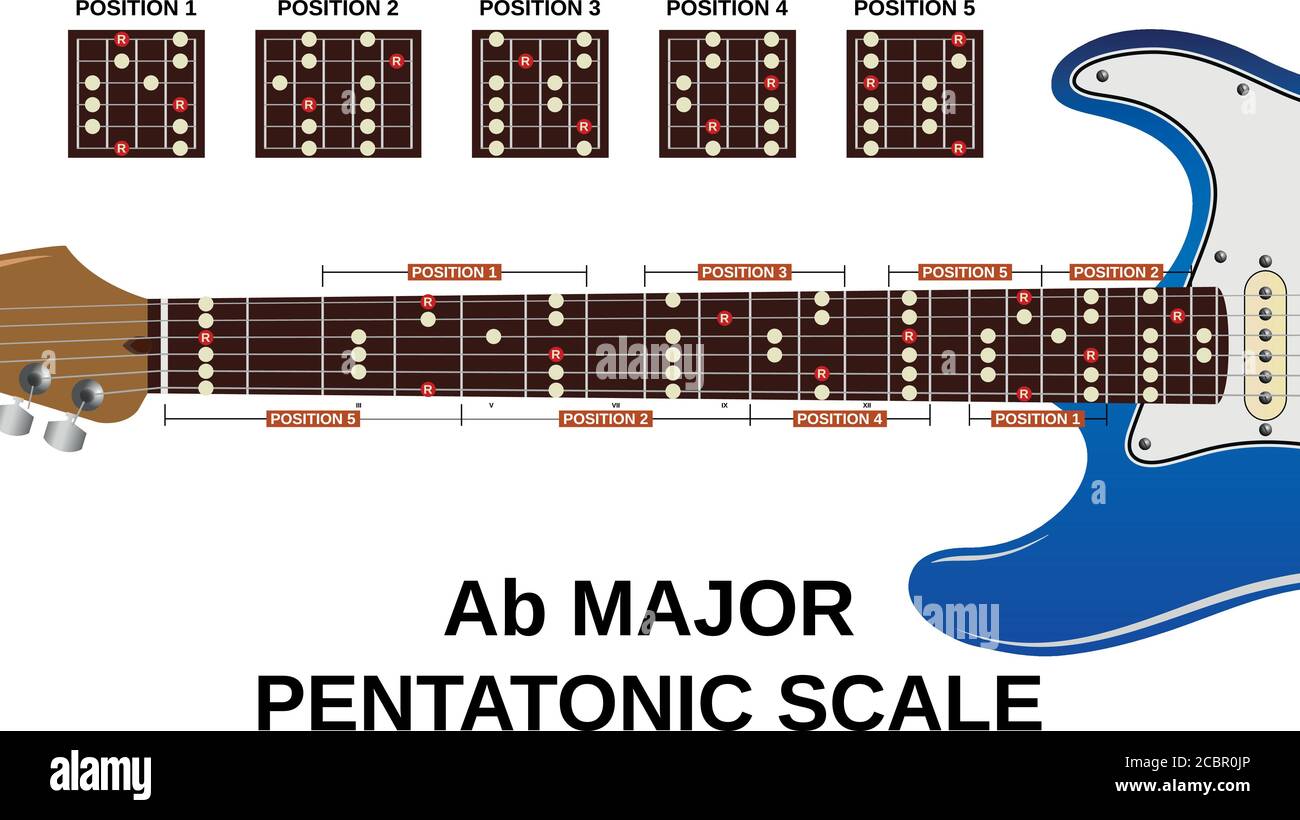 all five positons of a flat major pentatonic scale on electric guitar Stock Vectorhttps://www.alamy.com/image-license-details/?v=1https://www.alamy.com/all-five-positons-of-a-flat-major-pentatonic-scale-on-electric-guitar-image368684366.html
all five positons of a flat major pentatonic scale on electric guitar Stock Vectorhttps://www.alamy.com/image-license-details/?v=1https://www.alamy.com/all-five-positons-of-a-flat-major-pentatonic-scale-on-electric-guitar-image368684366.htmlRF2CBR0JP–all five positons of a flat major pentatonic scale on electric guitar
 Music sheet notes score melody close up black white lines composition left right hands treble cleft printed on paper Stock Photohttps://www.alamy.com/image-license-details/?v=1https://www.alamy.com/music-sheet-notes-score-melody-close-up-black-white-lines-composition-image69979811.html
Music sheet notes score melody close up black white lines composition left right hands treble cleft printed on paper Stock Photohttps://www.alamy.com/image-license-details/?v=1https://www.alamy.com/music-sheet-notes-score-melody-close-up-black-white-lines-composition-image69979811.htmlRME1RRXY–Music sheet notes score melody close up black white lines composition left right hands treble cleft printed on paper
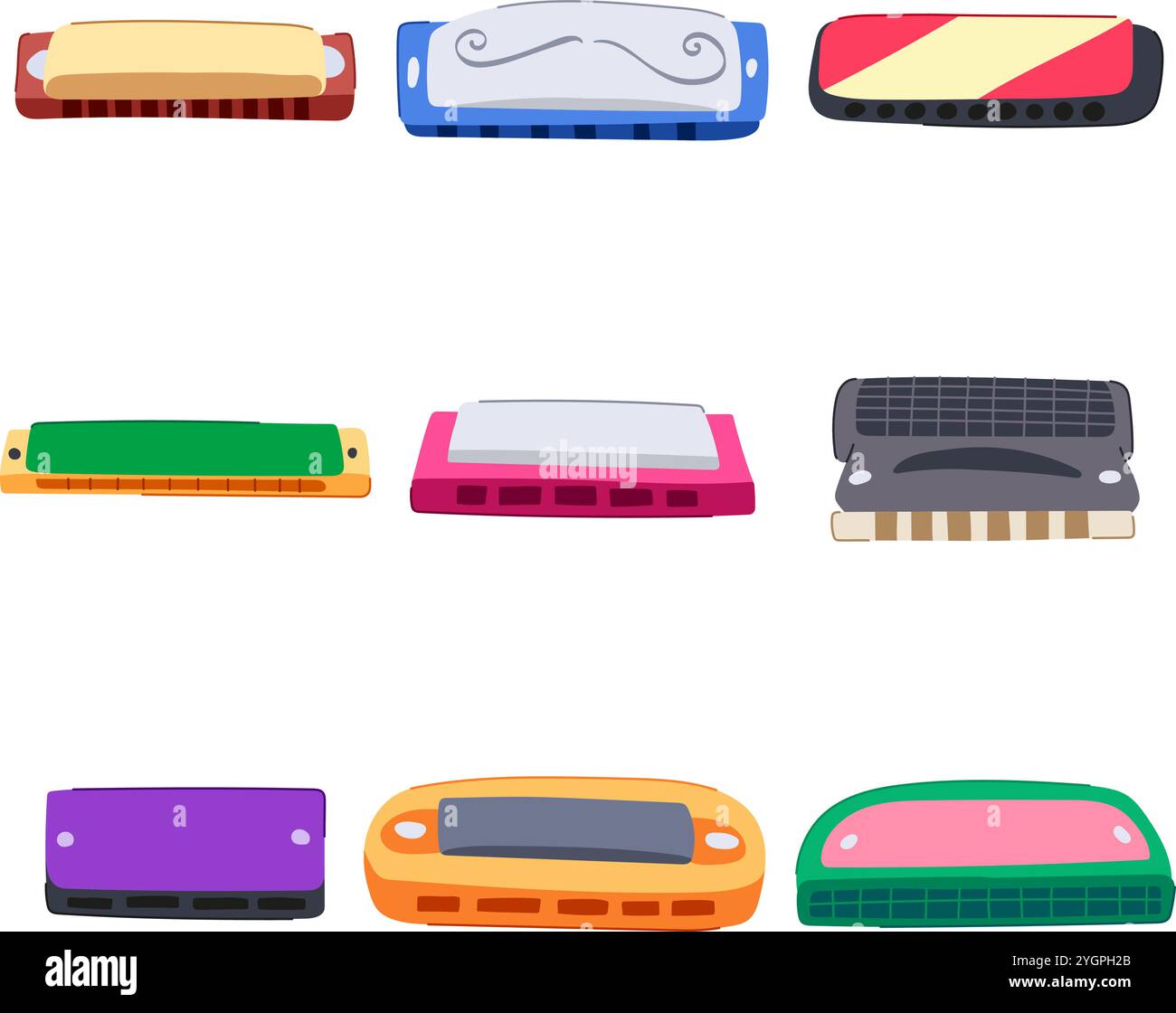 harmonica set cartoon vector illustration Stock Vectorhttps://www.alamy.com/image-license-details/?v=1https://www.alamy.com/harmonica-set-cartoon-vector-illustration-image629904083.html
harmonica set cartoon vector illustration Stock Vectorhttps://www.alamy.com/image-license-details/?v=1https://www.alamy.com/harmonica-set-cartoon-vector-illustration-image629904083.htmlRF2YGPH2B–harmonica set cartoon vector illustration
 . Orchestration . 1The two quotations from Mozart are printed, as was the custom in those daywith very few indications of nuances, phrasing, and so on. 266 ORCHESTRATION Here we have examples of A. Diatonic scale passages legato (bars 13, 21), B. Diatonic scale passages mezzo-staccato (bars 17, 18), C. Arpeggios (bars 1, 3, 5, 6, 10, 20), D. Melodic figures built on the notes of the scale (bar 22), E. And on the notes of a chord (bars 14, 15, 19, 20), F. Chromatic scales (bars 7, 23), G. Skips up to a width of nearly three octaves (bars 5, 12, 23), besides passages of a mixed character and a c Stock Photohttps://www.alamy.com/image-license-details/?v=1https://www.alamy.com/orchestration-1the-two-quotations-from-mozart-are-printed-as-was-the-custom-in-those-daywith-very-few-indications-of-nuances-phrasing-and-so-on-266-orchestration-here-we-have-examples-of-a-diatonic-scale-passages-legato-bars-13-21-b-diatonic-scale-passages-mezzo-staccato-bars-17-18-c-arpeggios-bars-1-3-5-6-10-20-d-melodic-figures-built-on-the-notes-of-the-scale-bar-22-e-and-on-the-notes-of-a-chord-bars-14-15-19-20-f-chromatic-scales-bars-7-23-g-skips-up-to-a-width-of-nearly-three-octaves-bars-5-12-23-besides-passages-of-a-mixed-character-and-a-c-image369738332.html
. Orchestration . 1The two quotations from Mozart are printed, as was the custom in those daywith very few indications of nuances, phrasing, and so on. 266 ORCHESTRATION Here we have examples of A. Diatonic scale passages legato (bars 13, 21), B. Diatonic scale passages mezzo-staccato (bars 17, 18), C. Arpeggios (bars 1, 3, 5, 6, 10, 20), D. Melodic figures built on the notes of the scale (bar 22), E. And on the notes of a chord (bars 14, 15, 19, 20), F. Chromatic scales (bars 7, 23), G. Skips up to a width of nearly three octaves (bars 5, 12, 23), besides passages of a mixed character and a c Stock Photohttps://www.alamy.com/image-license-details/?v=1https://www.alamy.com/orchestration-1the-two-quotations-from-mozart-are-printed-as-was-the-custom-in-those-daywith-very-few-indications-of-nuances-phrasing-and-so-on-266-orchestration-here-we-have-examples-of-a-diatonic-scale-passages-legato-bars-13-21-b-diatonic-scale-passages-mezzo-staccato-bars-17-18-c-arpeggios-bars-1-3-5-6-10-20-d-melodic-figures-built-on-the-notes-of-the-scale-bar-22-e-and-on-the-notes-of-a-chord-bars-14-15-19-20-f-chromatic-scales-bars-7-23-g-skips-up-to-a-width-of-nearly-three-octaves-bars-5-12-23-besides-passages-of-a-mixed-character-and-a-c-image369738332.htmlRM2CDF10C–. Orchestration . 1The two quotations from Mozart are printed, as was the custom in those daywith very few indications of nuances, phrasing, and so on. 266 ORCHESTRATION Here we have examples of A. Diatonic scale passages legato (bars 13, 21), B. Diatonic scale passages mezzo-staccato (bars 17, 18), C. Arpeggios (bars 1, 3, 5, 6, 10, 20), D. Melodic figures built on the notes of the scale (bar 22), E. And on the notes of a chord (bars 14, 15, 19, 20), F. Chromatic scales (bars 7, 23), G. Skips up to a width of nearly three octaves (bars 5, 12, 23), besides passages of a mixed character and a c
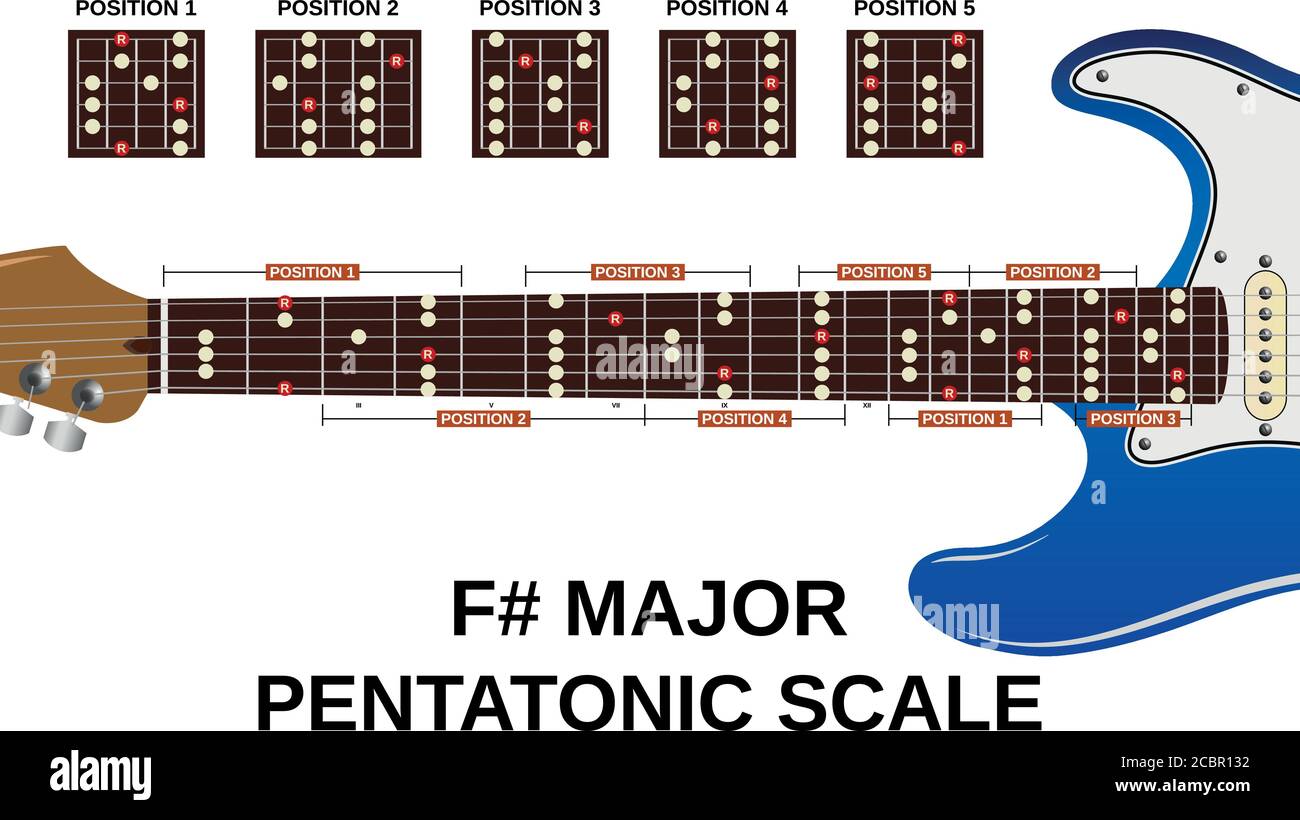 all five positons of f sharp major pentatonic scale on electric guitar Stock Vectorhttps://www.alamy.com/image-license-details/?v=1https://www.alamy.com/all-five-positons-of-f-sharp-major-pentatonic-scale-on-electric-guitar-image368684710.html
all five positons of f sharp major pentatonic scale on electric guitar Stock Vectorhttps://www.alamy.com/image-license-details/?v=1https://www.alamy.com/all-five-positons-of-f-sharp-major-pentatonic-scale-on-electric-guitar-image368684710.htmlRF2CBR132–all five positons of f sharp major pentatonic scale on electric guitar
 Music sheet notes score melody close up black white lines composition left right hands treble cleft printed on paper Stock Photohttps://www.alamy.com/image-license-details/?v=1https://www.alamy.com/music-sheet-notes-score-melody-close-up-black-white-lines-composition-image69979988.html
Music sheet notes score melody close up black white lines composition left right hands treble cleft printed on paper Stock Photohttps://www.alamy.com/image-license-details/?v=1https://www.alamy.com/music-sheet-notes-score-melody-close-up-black-white-lines-composition-image69979988.htmlRME1RT58–Music sheet notes score melody close up black white lines composition left right hands treble cleft printed on paper
 Modern harmony, its explanation and application . Ex.151. Molto moderato. SIBELIUS, 4th Symphony.. Examples 152 and 153 giv^ a new scale as yet untried, anda transposition of it from C to G. It is partly diatonic, butlargely tonal, 72 MODERN HARMONY Ex. 152. C to C. Stock Photohttps://www.alamy.com/image-license-details/?v=1https://www.alamy.com/modern-harmony-its-explanation-and-application-ex151-molto-moderato-sibelius-4th-symphony-examples-152-and-153-giv-a-new-scale-as-yet-untried-anda-transposition-of-it-from-c-to-g-it-is-partly-diatonic-butlargely-tonal-72-modern-harmony-ex-152-c-to-c-image340263267.html
Modern harmony, its explanation and application . Ex.151. Molto moderato. SIBELIUS, 4th Symphony.. Examples 152 and 153 giv^ a new scale as yet untried, anda transposition of it from C to G. It is partly diatonic, butlargely tonal, 72 MODERN HARMONY Ex. 152. C to C. Stock Photohttps://www.alamy.com/image-license-details/?v=1https://www.alamy.com/modern-harmony-its-explanation-and-application-ex151-molto-moderato-sibelius-4th-symphony-examples-152-and-153-giv-a-new-scale-as-yet-untried-anda-transposition-of-it-from-c-to-g-it-is-partly-diatonic-butlargely-tonal-72-modern-harmony-ex-152-c-to-c-image340263267.htmlRM2ANG97F–Modern harmony, its explanation and application . Ex.151. Molto moderato. SIBELIUS, 4th Symphony.. Examples 152 and 153 giv^ a new scale as yet untried, anda transposition of it from C to G. It is partly diatonic, butlargely tonal, 72 MODERN HARMONY Ex. 152. C to C.
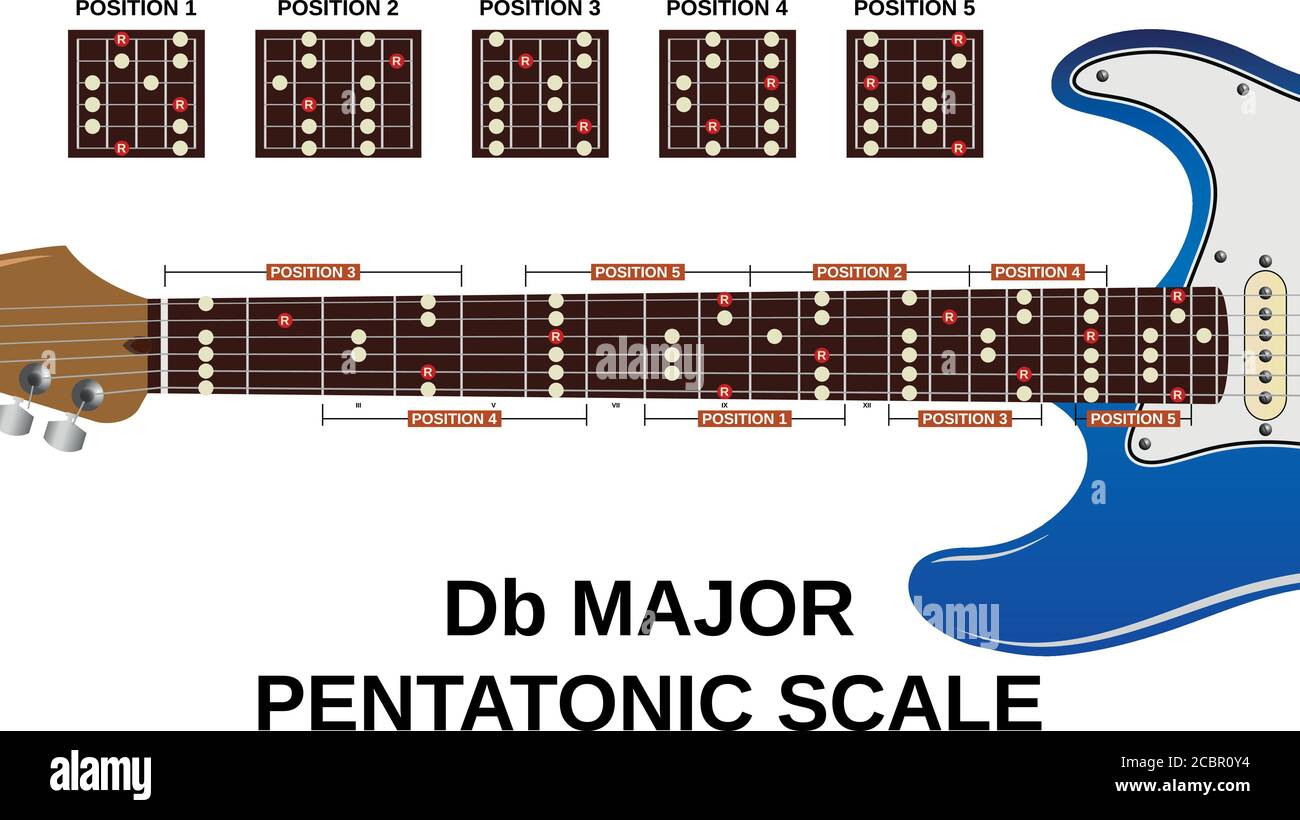 all five positons of d flat major pentatonic scale on electric guitar Stock Vectorhttps://www.alamy.com/image-license-details/?v=1https://www.alamy.com/all-five-positons-of-d-flat-major-pentatonic-scale-on-electric-guitar-image368684600.html
all five positons of d flat major pentatonic scale on electric guitar Stock Vectorhttps://www.alamy.com/image-license-details/?v=1https://www.alamy.com/all-five-positons-of-d-flat-major-pentatonic-scale-on-electric-guitar-image368684600.htmlRF2CBR0Y4–all five positons of d flat major pentatonic scale on electric guitar
 Harmony, its theory and practice . often, in themusic of the present day, for melodic than for harmonic purposes. 207. It was said in § 45 that many other diatonic scalesbesides those we have already given were formerly in use. Thissubject will be treated in Appendix A of this volume; all thatneed be said here is, that the old ecclesiastical scales, of whichwe are now speaking, were made by taking each note of thescale, excepting B natural, as a tonic, and using only naturalnotes. If we begin with the note A, we shall have the old ^olian scale. Ez. 132. # If the student compares this scale wit Stock Photohttps://www.alamy.com/image-license-details/?v=1https://www.alamy.com/harmony-its-theory-and-practice-often-in-themusic-of-the-present-day-for-melodic-than-for-harmonic-purposes-207-it-was-said-in-45-that-many-other-diatonic-scalesbesides-those-we-have-already-given-were-formerly-in-use-thissubject-will-be-treated-in-appendix-a-of-this-volume-all-thatneed-be-said-here-is-that-the-old-ecclesiastical-scales-of-whichwe-are-now-speaking-were-made-by-taking-each-note-of-thescale-excepting-b-natural-as-a-tonic-and-using-only-naturalnotes-if-we-begin-with-the-note-a-we-shall-have-the-old-olian-scale-ez-132-if-the-student-compares-this-scale-wit-image342888981.html
Harmony, its theory and practice . often, in themusic of the present day, for melodic than for harmonic purposes. 207. It was said in § 45 that many other diatonic scalesbesides those we have already given were formerly in use. Thissubject will be treated in Appendix A of this volume; all thatneed be said here is, that the old ecclesiastical scales, of whichwe are now speaking, were made by taking each note of thescale, excepting B natural, as a tonic, and using only naturalnotes. If we begin with the note A, we shall have the old ^olian scale. Ez. 132. # If the student compares this scale wit Stock Photohttps://www.alamy.com/image-license-details/?v=1https://www.alamy.com/harmony-its-theory-and-practice-often-in-themusic-of-the-present-day-for-melodic-than-for-harmonic-purposes-207-it-was-said-in-45-that-many-other-diatonic-scalesbesides-those-we-have-already-given-were-formerly-in-use-thissubject-will-be-treated-in-appendix-a-of-this-volume-all-thatneed-be-said-here-is-that-the-old-ecclesiastical-scales-of-whichwe-are-now-speaking-were-made-by-taking-each-note-of-thescale-excepting-b-natural-as-a-tonic-and-using-only-naturalnotes-if-we-begin-with-the-note-a-we-shall-have-the-old-olian-scale-ez-132-if-the-student-compares-this-scale-wit-image342888981.htmlRM2AWRXB1–Harmony, its theory and practice . often, in themusic of the present day, for melodic than for harmonic purposes. 207. It was said in § 45 that many other diatonic scalesbesides those we have already given were formerly in use. Thissubject will be treated in Appendix A of this volume; all thatneed be said here is, that the old ecclesiastical scales, of whichwe are now speaking, were made by taking each note of thescale, excepting B natural, as a tonic, and using only naturalnotes. If we begin with the note A, we shall have the old ^olian scale. Ez. 132. # If the student compares this scale wit
 Modern harmony, its explanation and application . 168 MODERN HARMONY There is a sort of Pointillism which scatters the melodicMelodic ^^^® ^y *^® large spacing of major sevenths. ThisPointil- is permissible on the twelve-note system; but itlism. j^g^y. ^,g regarded also as a frolicsome dalliancewith the chromatic scale on the diatonic basis. A full exem-plification of this method will be found in the second ofSchonbergs Drei Klavier-stiicke, Op. 11. Ex.870. (Scheme) ***. The whole-tone system, however, is less compromising.It fairly bristles with augmented fourths, fifths, and sixths,and must Stock Photohttps://www.alamy.com/image-license-details/?v=1https://www.alamy.com/modern-harmony-its-explanation-and-application-168-modern-harmony-there-is-a-sort-of-pointillism-which-scatters-the-melodicmelodic-y-large-spacing-of-major-sevenths-thispointil-is-permissible-on-the-twelve-note-system-but-itlism-jgy-g-regarded-also-as-a-frolicsome-dalliancewith-the-chromatic-scale-on-the-diatonic-basis-a-full-exem-plification-of-this-method-will-be-found-in-the-second-ofschonbergs-drei-klavier-stiicke-op-11-ex870-scheme-the-whole-tone-system-however-is-less-compromisingit-fairly-bristles-with-augmented-fourths-fifths-and-sixthsand-must-image340222437.html
Modern harmony, its explanation and application . 168 MODERN HARMONY There is a sort of Pointillism which scatters the melodicMelodic ^^^® ^y *^® large spacing of major sevenths. ThisPointil- is permissible on the twelve-note system; but itlism. j^g^y. ^,g regarded also as a frolicsome dalliancewith the chromatic scale on the diatonic basis. A full exem-plification of this method will be found in the second ofSchonbergs Drei Klavier-stiicke, Op. 11. Ex.870. (Scheme) ***. The whole-tone system, however, is less compromising.It fairly bristles with augmented fourths, fifths, and sixths,and must Stock Photohttps://www.alamy.com/image-license-details/?v=1https://www.alamy.com/modern-harmony-its-explanation-and-application-168-modern-harmony-there-is-a-sort-of-pointillism-which-scatters-the-melodicmelodic-y-large-spacing-of-major-sevenths-thispointil-is-permissible-on-the-twelve-note-system-but-itlism-jgy-g-regarded-also-as-a-frolicsome-dalliancewith-the-chromatic-scale-on-the-diatonic-basis-a-full-exem-plification-of-this-method-will-be-found-in-the-second-ofschonbergs-drei-klavier-stiicke-op-11-ex870-scheme-the-whole-tone-system-however-is-less-compromisingit-fairly-bristles-with-augmented-fourths-fifths-and-sixthsand-must-image340222437.htmlRM2ANED59–Modern harmony, its explanation and application . 168 MODERN HARMONY There is a sort of Pointillism which scatters the melodicMelodic ^^^® ^y *^® large spacing of major sevenths. ThisPointil- is permissible on the twelve-note system; but itlism. j^g^y. ^,g regarded also as a frolicsome dalliancewith the chromatic scale on the diatonic basis. A full exem-plification of this method will be found in the second ofSchonbergs Drei Klavier-stiicke, Op. 11. Ex.870. (Scheme) ***. The whole-tone system, however, is less compromising.It fairly bristles with augmented fourths, fifths, and sixths,and must
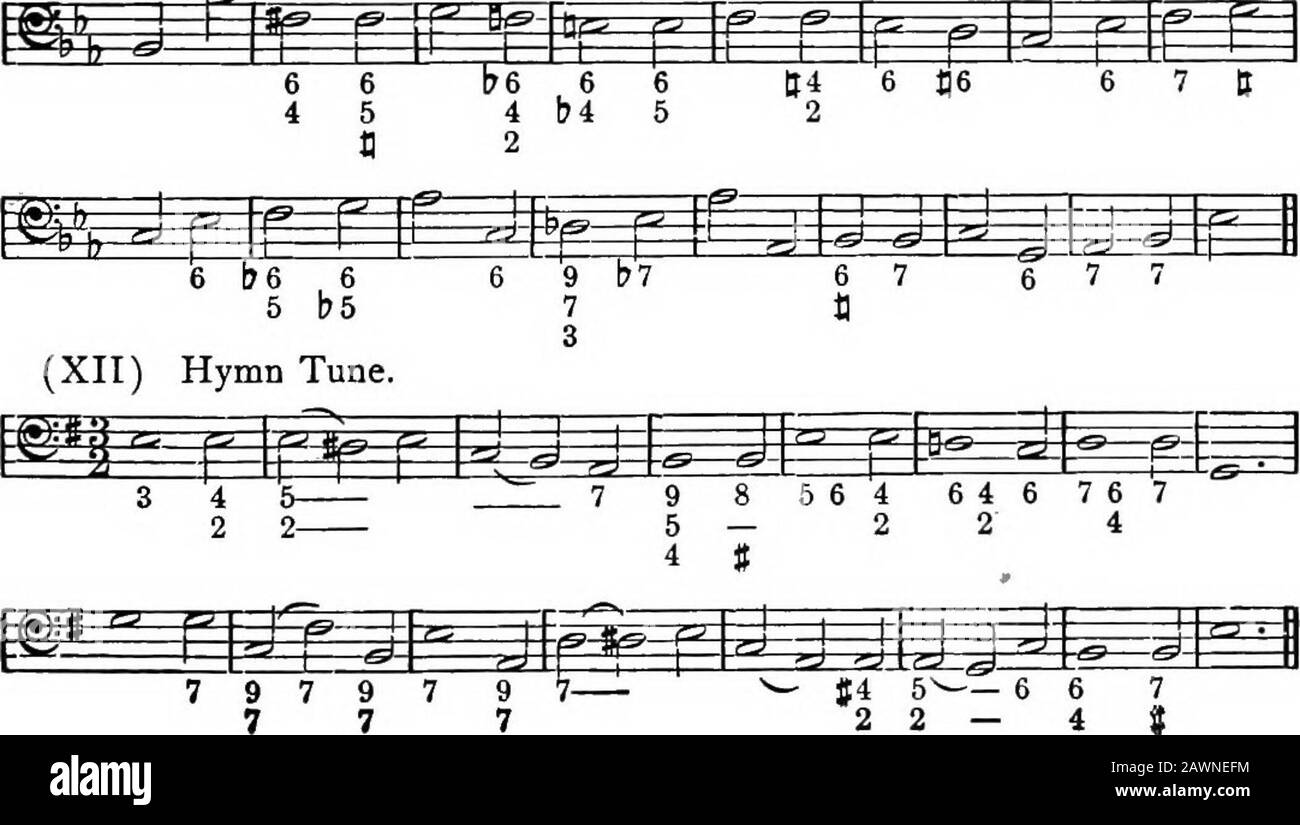 Harmony, its theory and practice . (XI) Hymn Tune. ^^yg^f^ r If- J ^ 3= I I ^ 3= ^^ i=i-isl ---^ 5 6 6 6 4 62 9 77. (4 5^ 6 6 7 2 2 - 4 J 198 Harmony. [Chap. XV. CHAPTER XV. CHROMATIC TRIADS—THE CHROMATIC SCALE. 452. In the preceding chapters of this book we have treatedof the whole of the diatonic material of a key, and it has beenseen that this is all obtained from seven notes, one on each de-gree of the scale, all of which conform to the key-signature.But, as a key consists of twelve notes (§ 32,) there are fiveother notes remaining, each of which requires an accidental.Such notes are calle Stock Photohttps://www.alamy.com/image-license-details/?v=1https://www.alamy.com/harmony-its-theory-and-practice-xi-hymn-tune-ygf-r-if-j-3=-i-i-3=-i=i-isl-5-6-6-6-4-62-9-77-4-5-6-6-7-2-2-4-j-198-harmony-chap-xv-chapter-xv-chromatic-triadsthe-chromatic-scale-452-in-the-preceding-chapters-of-this-book-we-have-treatedof-the-whole-of-the-diatonic-material-of-a-key-and-it-has-beenseen-that-this-is-all-obtained-from-seven-notes-one-on-each-de-gree-of-the-scale-all-of-which-conform-to-the-key-signaturebut-as-a-key-consists-of-twelve-notes-32-there-are-fiveother-notes-remaining-each-of-which-requires-an-accidentalsuch-notes-are-calle-image342835800.html
Harmony, its theory and practice . (XI) Hymn Tune. ^^yg^f^ r If- J ^ 3= I I ^ 3= ^^ i=i-isl ---^ 5 6 6 6 4 62 9 77. (4 5^ 6 6 7 2 2 - 4 J 198 Harmony. [Chap. XV. CHAPTER XV. CHROMATIC TRIADS—THE CHROMATIC SCALE. 452. In the preceding chapters of this book we have treatedof the whole of the diatonic material of a key, and it has beenseen that this is all obtained from seven notes, one on each de-gree of the scale, all of which conform to the key-signature.But, as a key consists of twelve notes (§ 32,) there are fiveother notes remaining, each of which requires an accidental.Such notes are calle Stock Photohttps://www.alamy.com/image-license-details/?v=1https://www.alamy.com/harmony-its-theory-and-practice-xi-hymn-tune-ygf-r-if-j-3=-i-i-3=-i=i-isl-5-6-6-6-4-62-9-77-4-5-6-6-7-2-2-4-j-198-harmony-chap-xv-chapter-xv-chromatic-triadsthe-chromatic-scale-452-in-the-preceding-chapters-of-this-book-we-have-treatedof-the-whole-of-the-diatonic-material-of-a-key-and-it-has-beenseen-that-this-is-all-obtained-from-seven-notes-one-on-each-de-gree-of-the-scale-all-of-which-conform-to-the-key-signaturebut-as-a-key-consists-of-twelve-notes-32-there-are-fiveother-notes-remaining-each-of-which-requires-an-accidentalsuch-notes-are-calle-image342835800.htmlRM2AWNEFM–Harmony, its theory and practice . (XI) Hymn Tune. ^^yg^f^ r If- J ^ 3= I I ^ 3= ^^ i=i-isl ---^ 5 6 6 6 4 62 9 77. (4 5^ 6 6 7 2 2 - 4 J 198 Harmony. [Chap. XV. CHAPTER XV. CHROMATIC TRIADS—THE CHROMATIC SCALE. 452. In the preceding chapters of this book we have treatedof the whole of the diatonic material of a key, and it has beenseen that this is all obtained from seven notes, one on each de-gree of the scale, all of which conform to the key-signature.But, as a key consists of twelve notes (§ 32,) there are fiveother notes remaining, each of which requires an accidental.Such notes are calle
 . Voice and song : a practical method for the study of singing . Inch cs ( For all wide intervals the pointers must be ij inches from point to point, the two narrow intervals i g g T?f measure jg of an inch from point to point. The diatonic major scale has all its intervals, relatively, exactly the same in all keys. The tonic is always represented by 1. Now,if this card (or rule ) is placed behind the ends of the black keys, resting on the white keys, and pointer I caused to stand exactlyover the centre of the end of any one key, the other pointers will indicate the keys to be sounded for the Stock Photohttps://www.alamy.com/image-license-details/?v=1https://www.alamy.com/voice-and-song-a-practical-method-for-the-study-of-singing-inch-cs-for-all-wide-intervals-the-pointers-must-be-ij-inches-from-point-to-point-the-two-narrow-intervals-i-g-g-tf-measure-jg-of-an-inch-from-point-to-point-the-diatonic-major-scale-has-all-its-intervals-relatively-exactly-the-same-in-all-keys-the-tonic-is-always-represented-by-1-nowif-this-card-or-rule-is-placed-behind-the-ends-of-the-black-keys-resting-on-the-white-keys-and-pointer-i-caused-to-stand-exactlyover-the-centre-of-the-end-of-any-one-key-the-other-pointers-will-indicate-the-keys-to-be-sounded-for-the-image370056988.html
. Voice and song : a practical method for the study of singing . Inch cs ( For all wide intervals the pointers must be ij inches from point to point, the two narrow intervals i g g T?f measure jg of an inch from point to point. The diatonic major scale has all its intervals, relatively, exactly the same in all keys. The tonic is always represented by 1. Now,if this card (or rule ) is placed behind the ends of the black keys, resting on the white keys, and pointer I caused to stand exactlyover the centre of the end of any one key, the other pointers will indicate the keys to be sounded for the Stock Photohttps://www.alamy.com/image-license-details/?v=1https://www.alamy.com/voice-and-song-a-practical-method-for-the-study-of-singing-inch-cs-for-all-wide-intervals-the-pointers-must-be-ij-inches-from-point-to-point-the-two-narrow-intervals-i-g-g-tf-measure-jg-of-an-inch-from-point-to-point-the-diatonic-major-scale-has-all-its-intervals-relatively-exactly-the-same-in-all-keys-the-tonic-is-always-represented-by-1-nowif-this-card-or-rule-is-placed-behind-the-ends-of-the-black-keys-resting-on-the-white-keys-and-pointer-i-caused-to-stand-exactlyover-the-centre-of-the-end-of-any-one-key-the-other-pointers-will-indicate-the-keys-to-be-sounded-for-the-image370056988.htmlRM2CE1FD0–. Voice and song : a practical method for the study of singing . Inch cs ( For all wide intervals the pointers must be ij inches from point to point, the two narrow intervals i g g T?f measure jg of an inch from point to point. The diatonic major scale has all its intervals, relatively, exactly the same in all keys. The tonic is always represented by 1. Now,if this card (or rule ) is placed behind the ends of the black keys, resting on the white keys, and pointer I caused to stand exactlyover the centre of the end of any one key, the other pointers will indicate the keys to be sounded for the
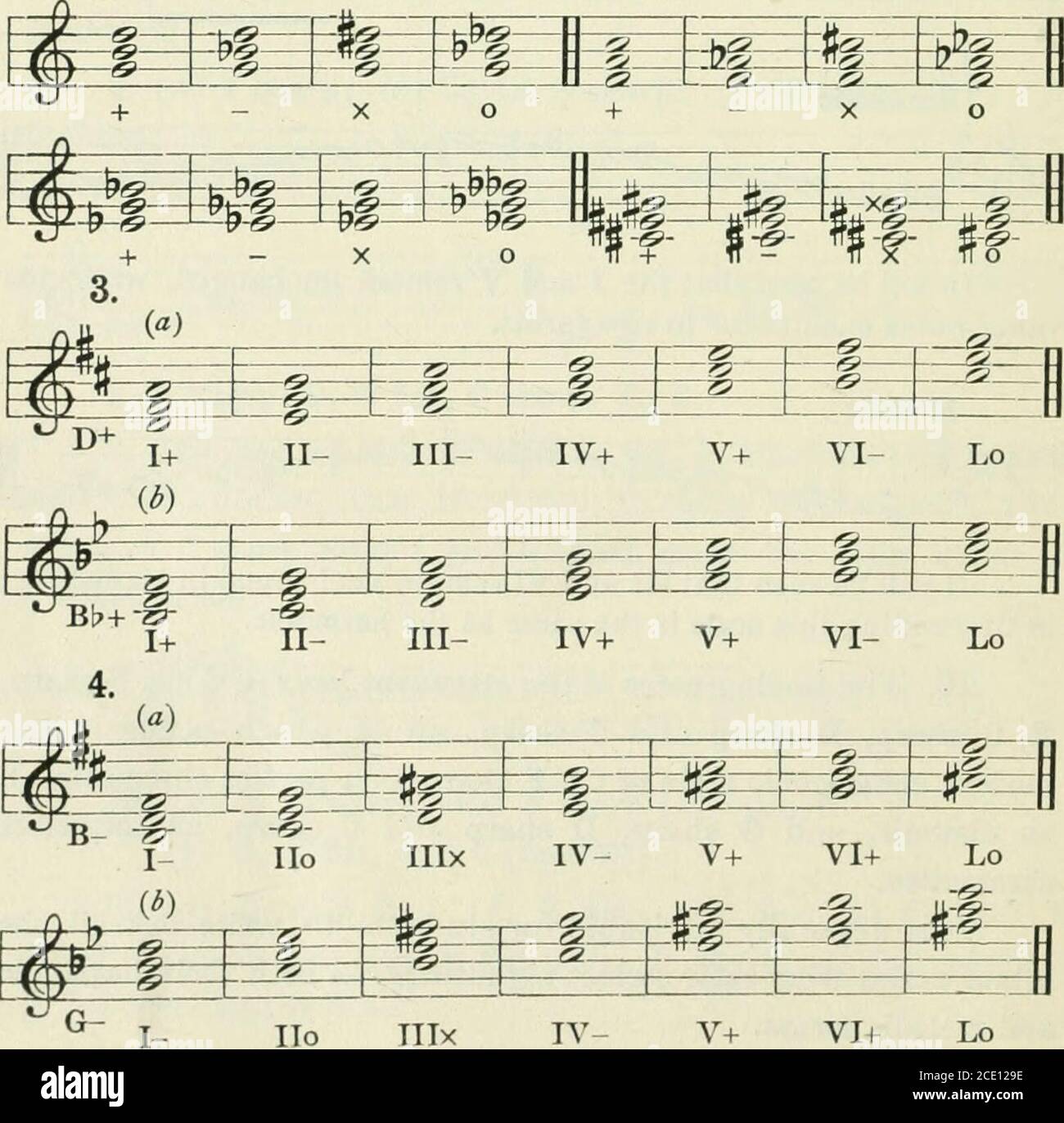 . A treatise on harmony, with exercises . ^ ^gafegM^. ,^^ l It will be seen that III and VI remain unchanged in ascending;in descending this scale is the same as the harmonic. 16. The leading-notes of the attendant keys of C are F sharp,E, G sharp, D sharp and C sharp, all of which occur in themodern enharmonic scale of C; F sharp as n perfect chromatic, Eas diatonic, and G sharp, D sharp and C sharp, as imperfectchromatics. It is generally advisable for students to write out all theminor scales with their correct signatures, in both their harmonicand melodic forms. 12 CHAPTER IV THE COMMON Stock Photohttps://www.alamy.com/image-license-details/?v=1https://www.alamy.com/a-treatise-on-harmony-with-exercises-gafegm-l-it-will-be-seen-that-iii-and-vi-remain-unchanged-in-ascendingin-descending-this-scale-is-the-same-as-the-harmonic-16-the-leading-notes-of-the-attendant-keys-of-c-are-f-sharpe-g-sharp-d-sharp-and-c-sharp-all-of-which-occur-in-themodern-enharmonic-scale-of-c-f-sharp-as-n-perfect-chromatic-eas-diatonic-and-g-sharp-d-sharp-and-c-sharp-as-imperfectchromatics-it-is-generally-advisable-for-students-to-write-out-all-theminor-scales-with-their-correct-signatures-in-both-their-harmonicand-melodic-forms-12-chapter-iv-the-common-image370046698.html
. A treatise on harmony, with exercises . ^ ^gafegM^. ,^^ l It will be seen that III and VI remain unchanged in ascending;in descending this scale is the same as the harmonic. 16. The leading-notes of the attendant keys of C are F sharp,E, G sharp, D sharp and C sharp, all of which occur in themodern enharmonic scale of C; F sharp as n perfect chromatic, Eas diatonic, and G sharp, D sharp and C sharp, as imperfectchromatics. It is generally advisable for students to write out all theminor scales with their correct signatures, in both their harmonicand melodic forms. 12 CHAPTER IV THE COMMON Stock Photohttps://www.alamy.com/image-license-details/?v=1https://www.alamy.com/a-treatise-on-harmony-with-exercises-gafegm-l-it-will-be-seen-that-iii-and-vi-remain-unchanged-in-ascendingin-descending-this-scale-is-the-same-as-the-harmonic-16-the-leading-notes-of-the-attendant-keys-of-c-are-f-sharpe-g-sharp-d-sharp-and-c-sharp-all-of-which-occur-in-themodern-enharmonic-scale-of-c-f-sharp-as-n-perfect-chromatic-eas-diatonic-and-g-sharp-d-sharp-and-c-sharp-as-imperfectchromatics-it-is-generally-advisable-for-students-to-write-out-all-theminor-scales-with-their-correct-signatures-in-both-their-harmonicand-melodic-forms-12-chapter-iv-the-common-image370046698.htmlRM2CE129E–. A treatise on harmony, with exercises . ^ ^gafegM^. ,^^ l It will be seen that III and VI remain unchanged in ascending;in descending this scale is the same as the harmonic. 16. The leading-notes of the attendant keys of C are F sharp,E, G sharp, D sharp and C sharp, all of which occur in themodern enharmonic scale of C; F sharp as n perfect chromatic, Eas diatonic, and G sharp, D sharp and C sharp, as imperfectchromatics. It is generally advisable for students to write out all theminor scales with their correct signatures, in both their harmonicand melodic forms. 12 CHAPTER IV THE COMMON